My new home
I have moved!
The move from my 3-room apartment to a 7-room shared flat with six double cabins, a bathroom, separate toilet, kitchen and lounge, as well as a cozy green house, has been a success.
I have now been living with my 10 flatmates for five weeks in my temporary home: the floating and rocking Selma, a 20-meter-long steel ketch.
And I feel very much at home here.
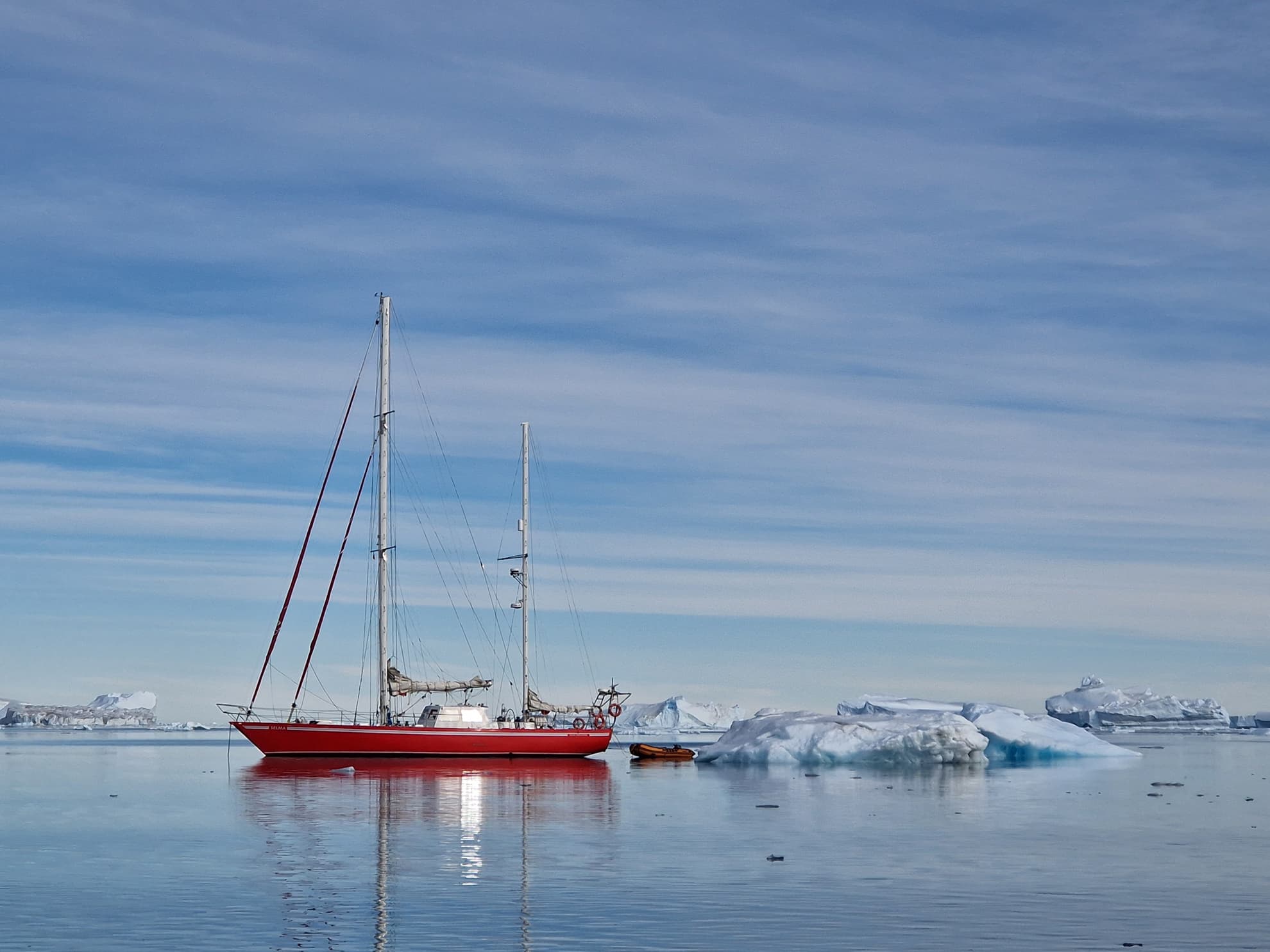
I’m sure you’re curious to see what my new home looks like?
Well then – I’ll be happy to take you on a little tour of the ship and show you around.
The forepeak
We start in the forepeak, our walk-in refrigerator (who has this at home?) and at the same time our storage and equipment room.
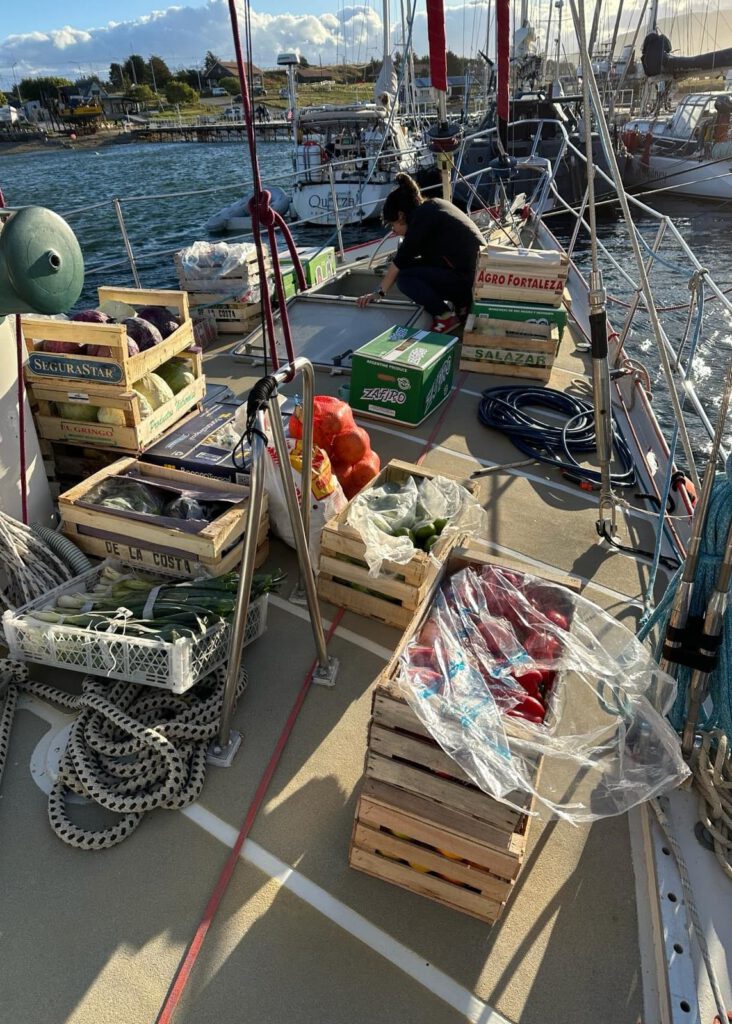
You can access the forepeak through a large hatch on the foredeck.
At the start of our expedition in Ushuaia, we stowed all our supplies in the forepeak through this hatch.
We store all our fresh food in the forepeak, such as potatoes, vegetables, fruit, cheese, butter, meat, sausages, etc. Some of it is stored in open boxes on shelves, but some is also stored under the floorboards in the water-cooled bilge.
Everything we need for our expedition at sea and on land is also stowed here: two Zodiacs, the outboard motor for the Zodiac, inflatable kayaks, pulka sledges, snowshoes and much more.
Our waste is also stored here in two barrels during the entire trip until we can dispose of it on the mainland at the end of our expedition. These two gray barrels will actually be enough for all our garbage – 11 people, 7 weeks! Incidentally, absolutely nothing goes overboard south of the 60th parallel.
Everything is well stowed and secured for the journey and sailing in rough seas.
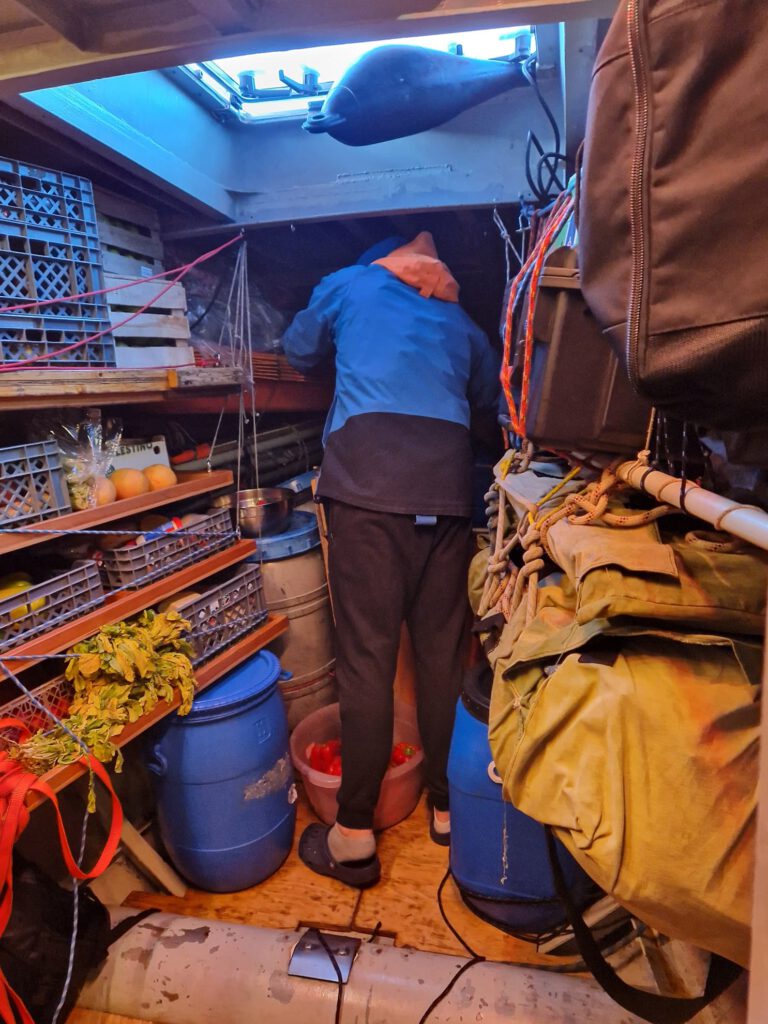
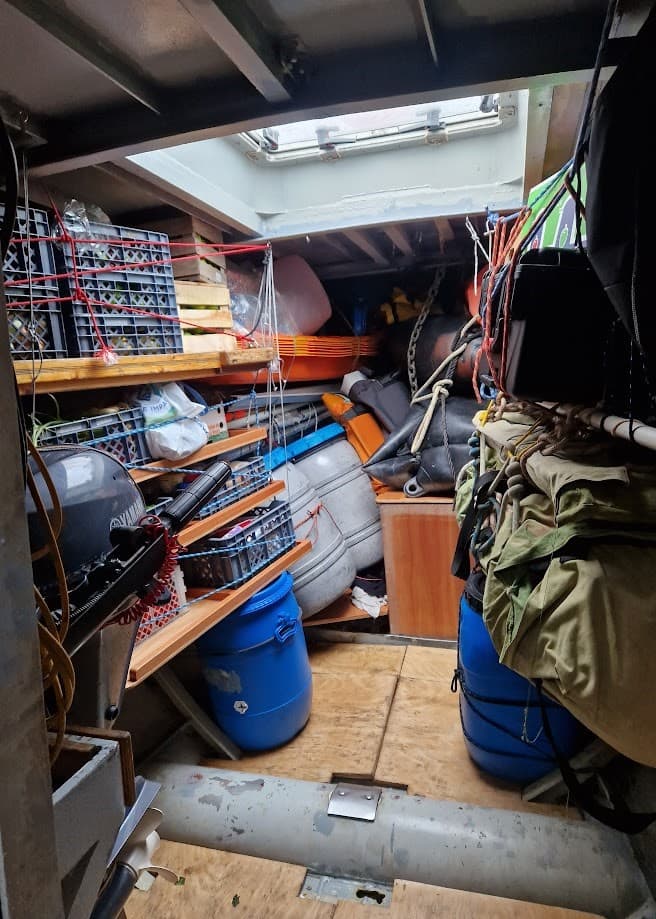
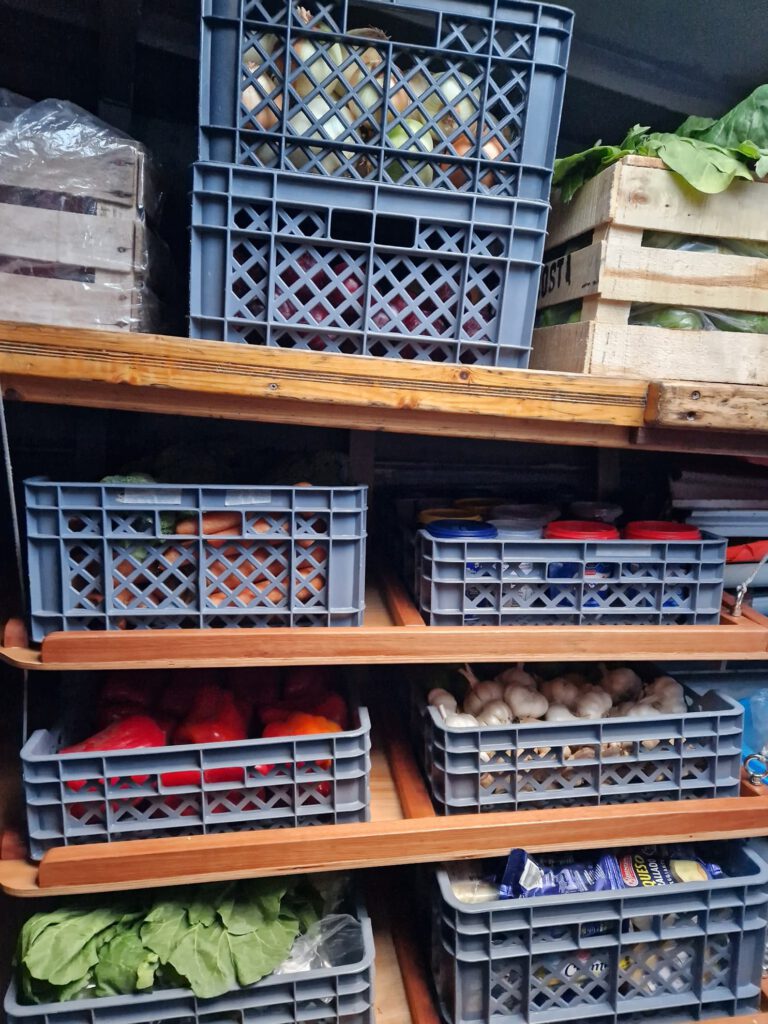
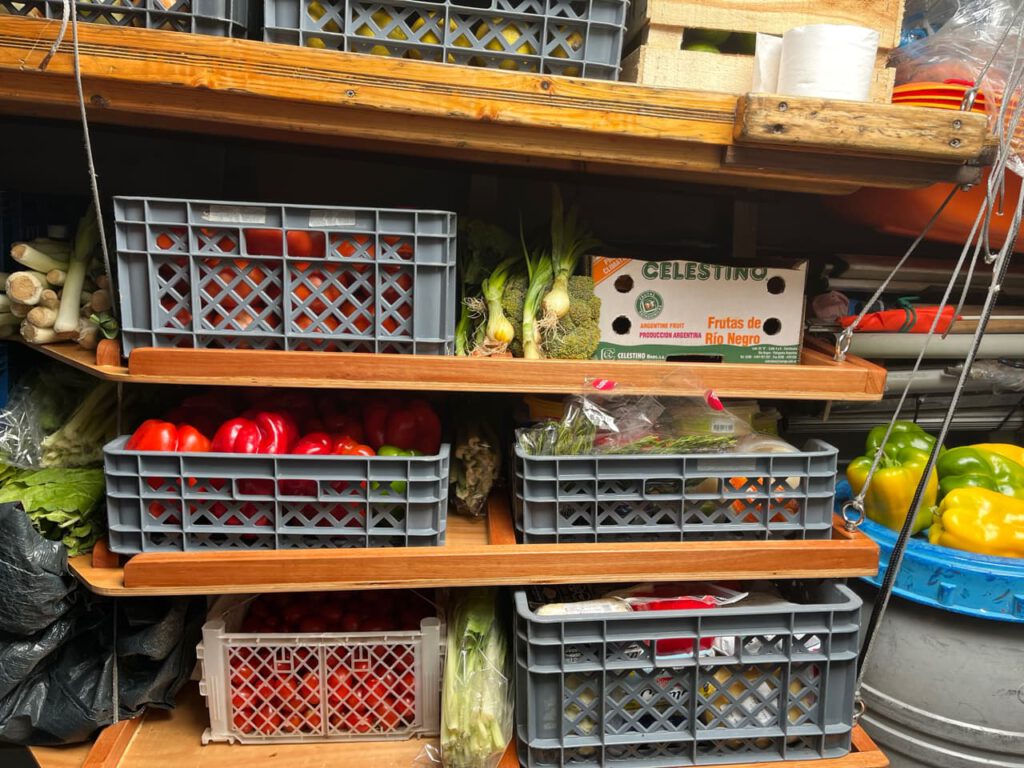
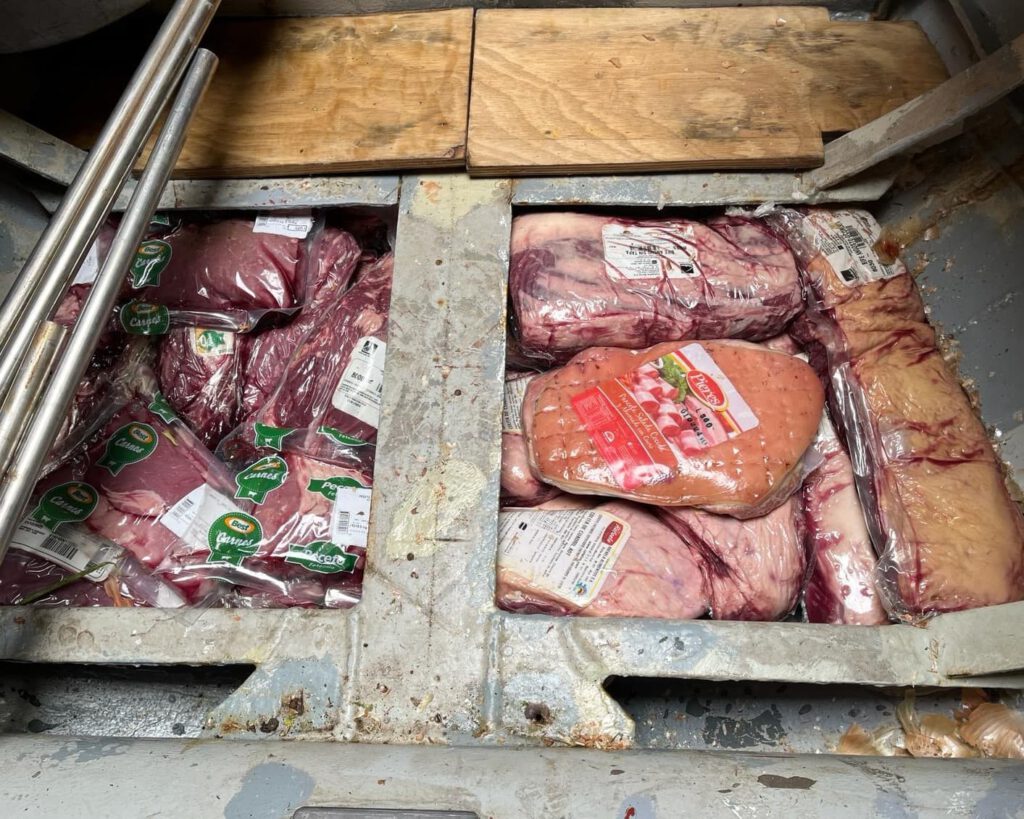
The anchor chain in the anchor locker also has its place in the forepeak.
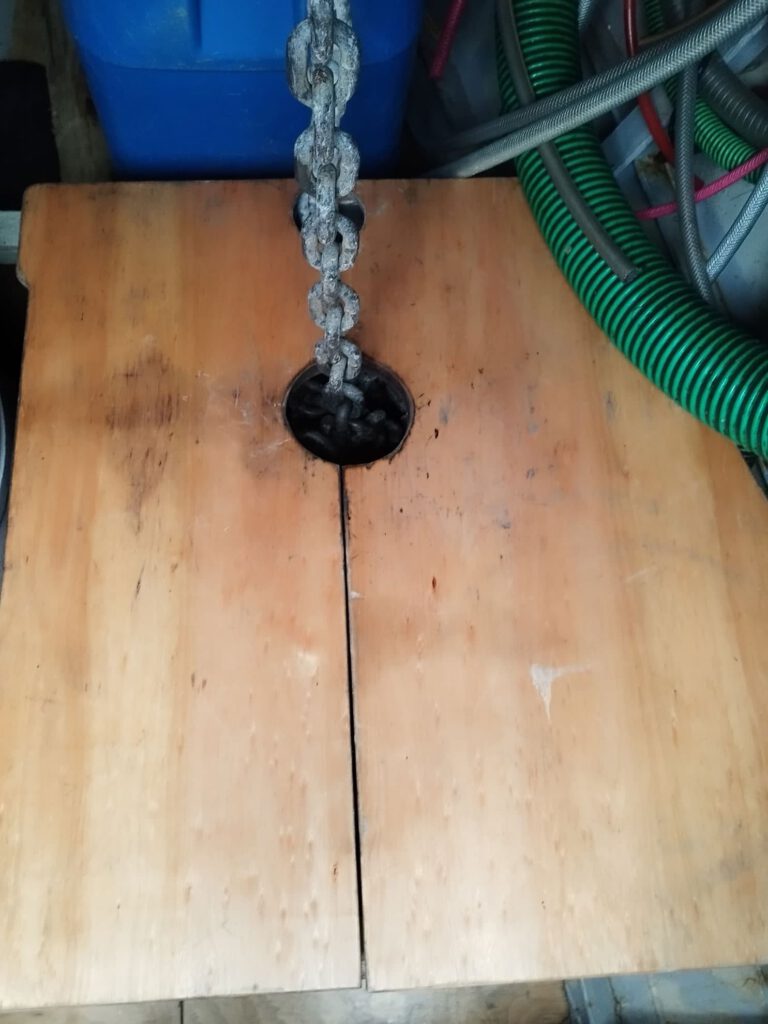
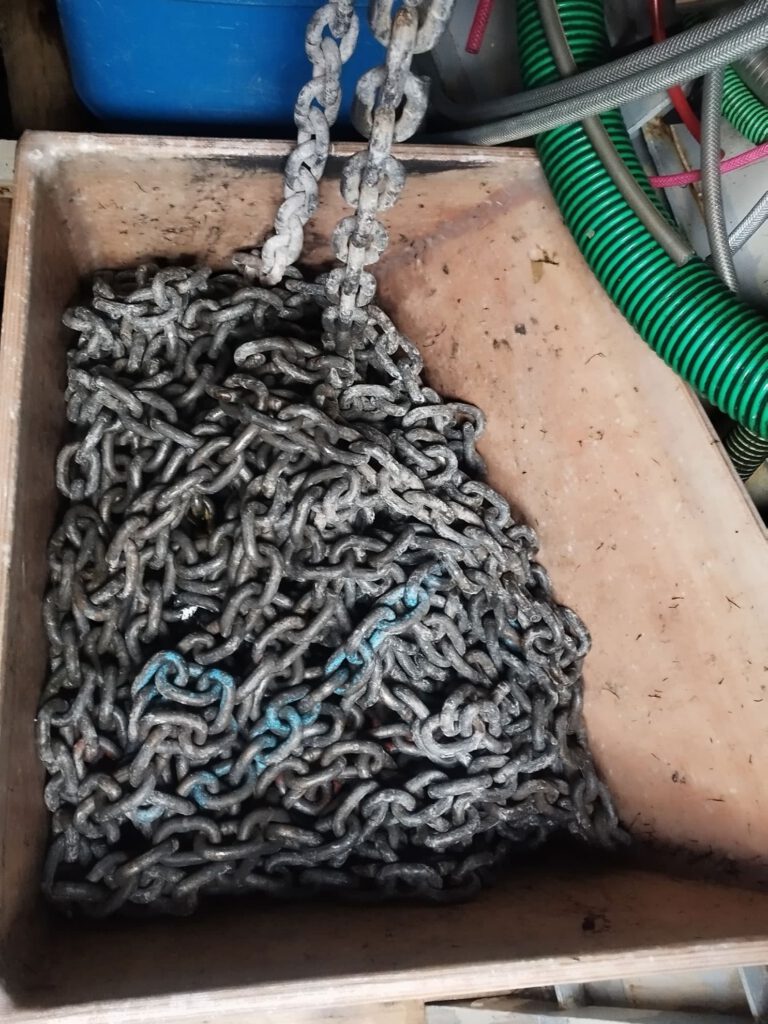
We have enough supplies on board for the 7 weeks of our expedition. But that’s not all – they would probably last us twice as long.
Piotr has bought, among many other things: 500 eggs, 12 kilos of coffee, 40 fresh loaves of bread and 6 loaves of toast, 30 liters of milk, 60 liters of milk powder, 45 kg of potatoes, 15 kg of sweet potatoes, lots of boxes of vegetables and apples, as well as flour, porridge … and lots of sweets.
Plus 1 1/2 rolls of toilet paper per day. Well then, do the math.
The eggs are rotated every two weeks. We regularly checked all the vegetables (peppers, tomatoes, avocado, iceberg lettuce, broccoli, cucumbers, beet, red and white cabbage, pumpkin, onions, parsley, chives, garlic, rosemary) and sorted out what needed to be used immediately or in the next few days.
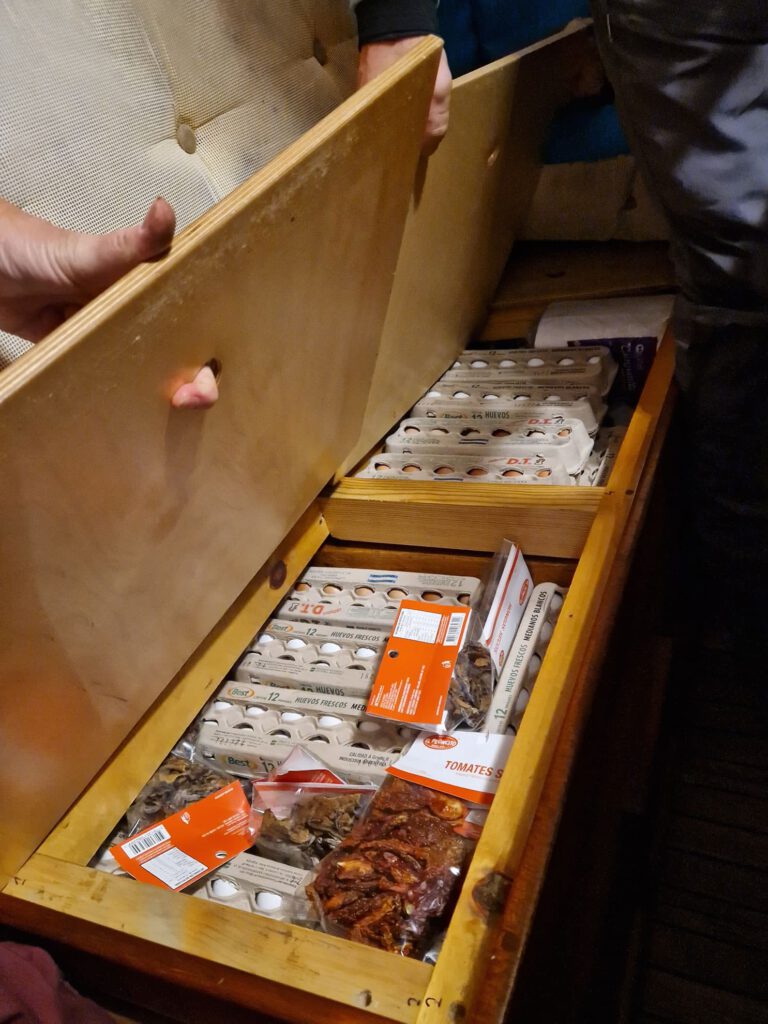
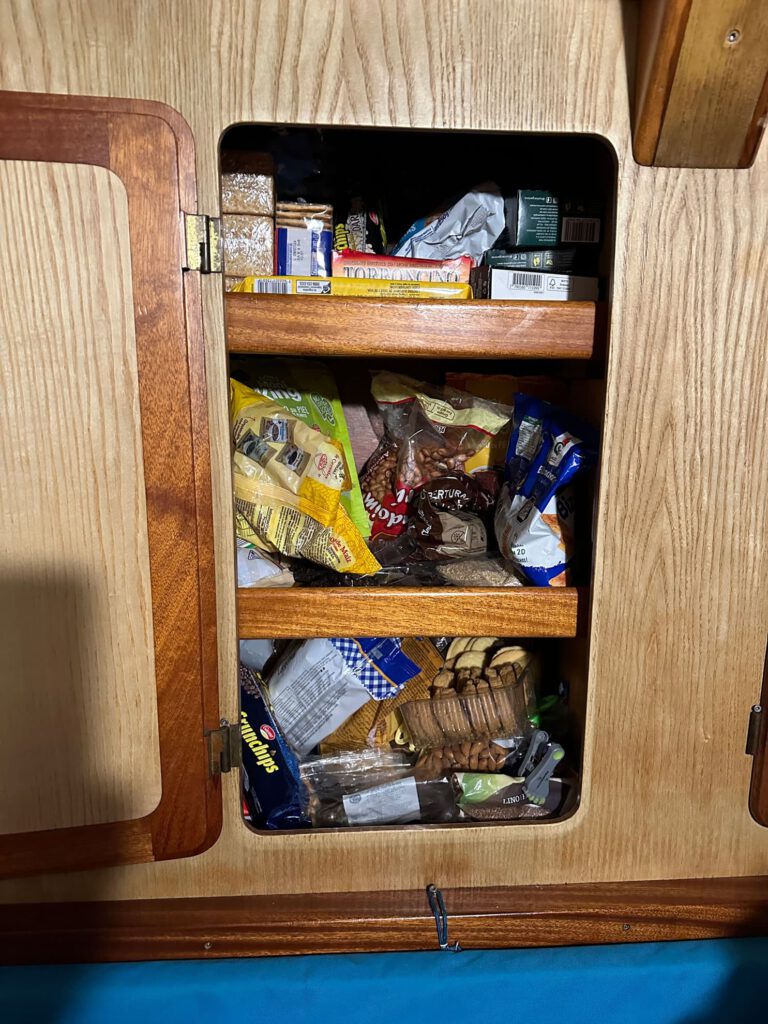
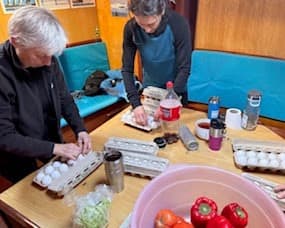
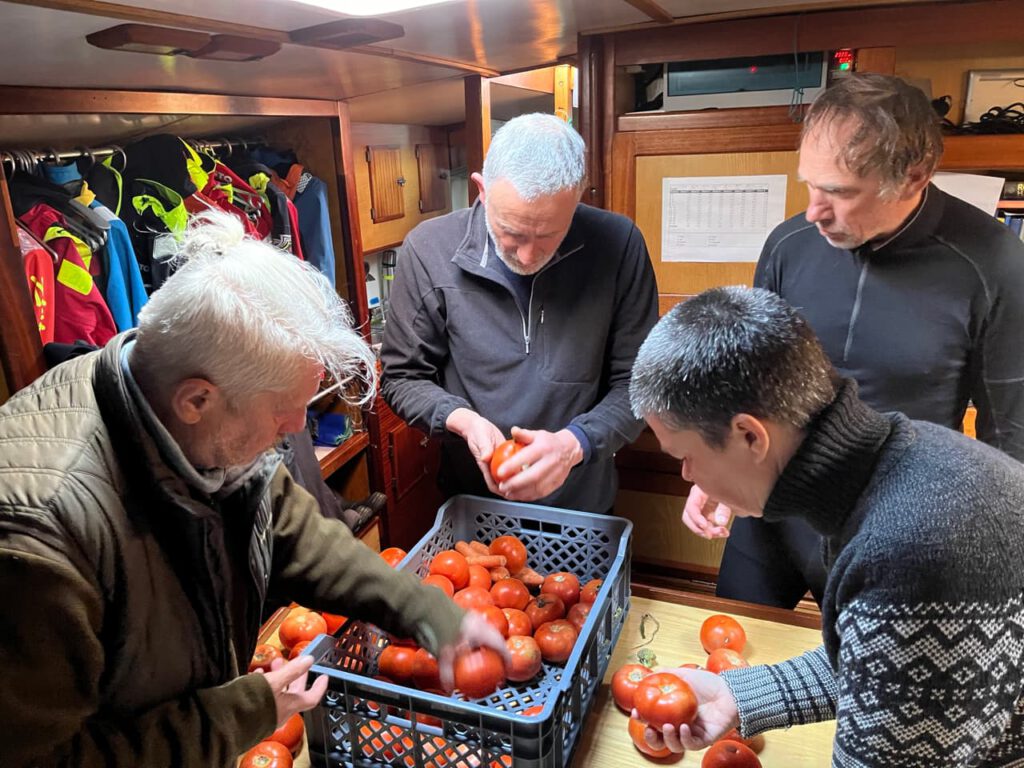
From the forepeak, the open refrigerator, we go into the through starboard cabin no. 1, my and Karen’s home. I have taken the lower berth. From my bunk I also have a view of the forepeak.
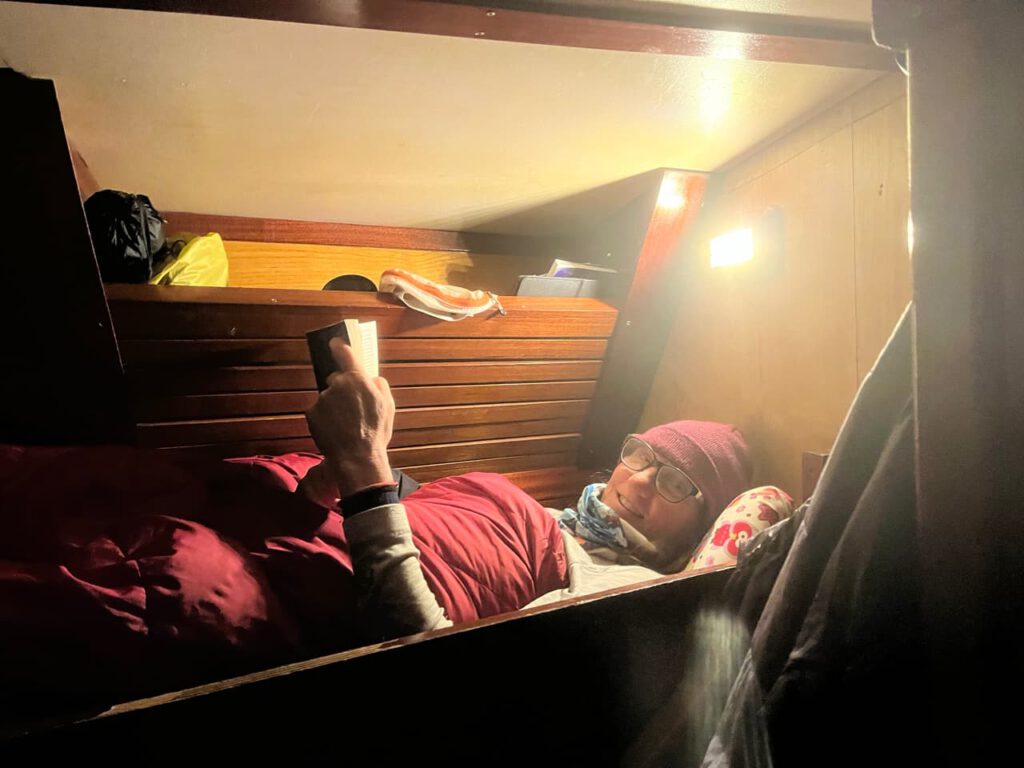
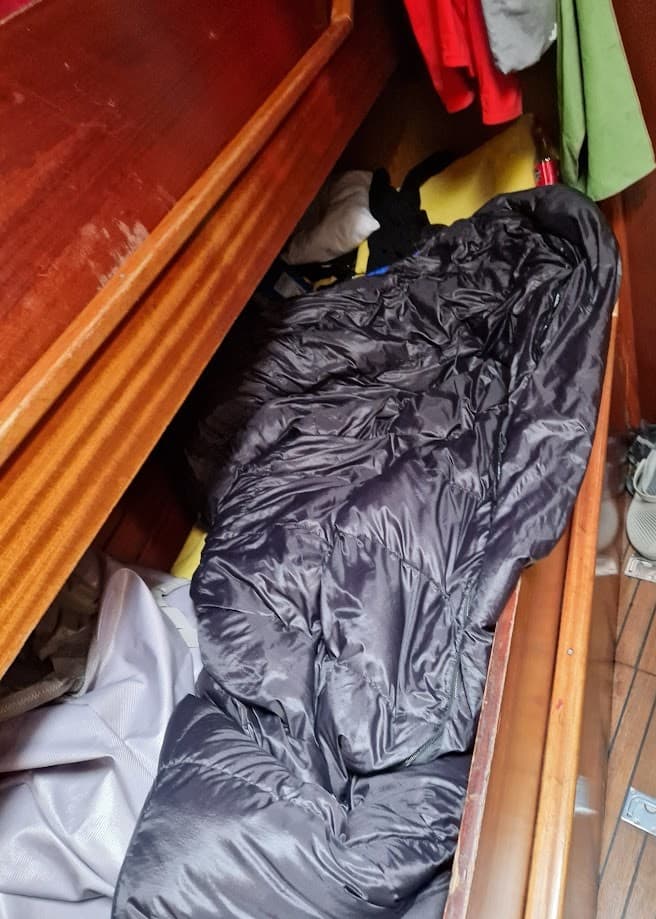
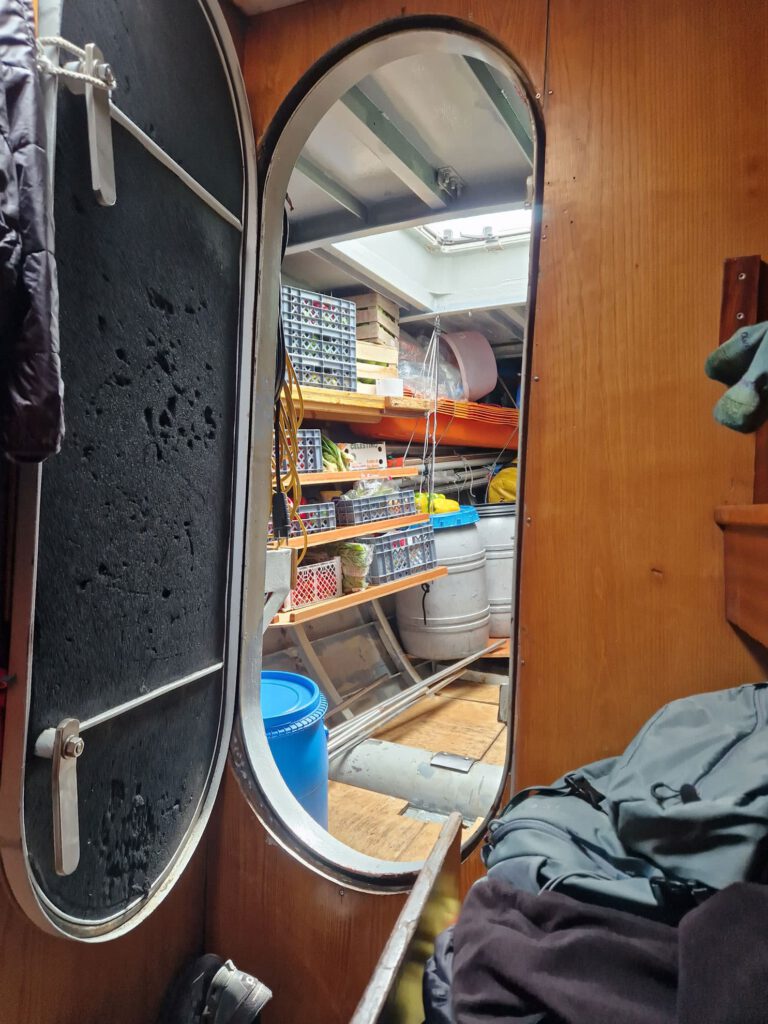
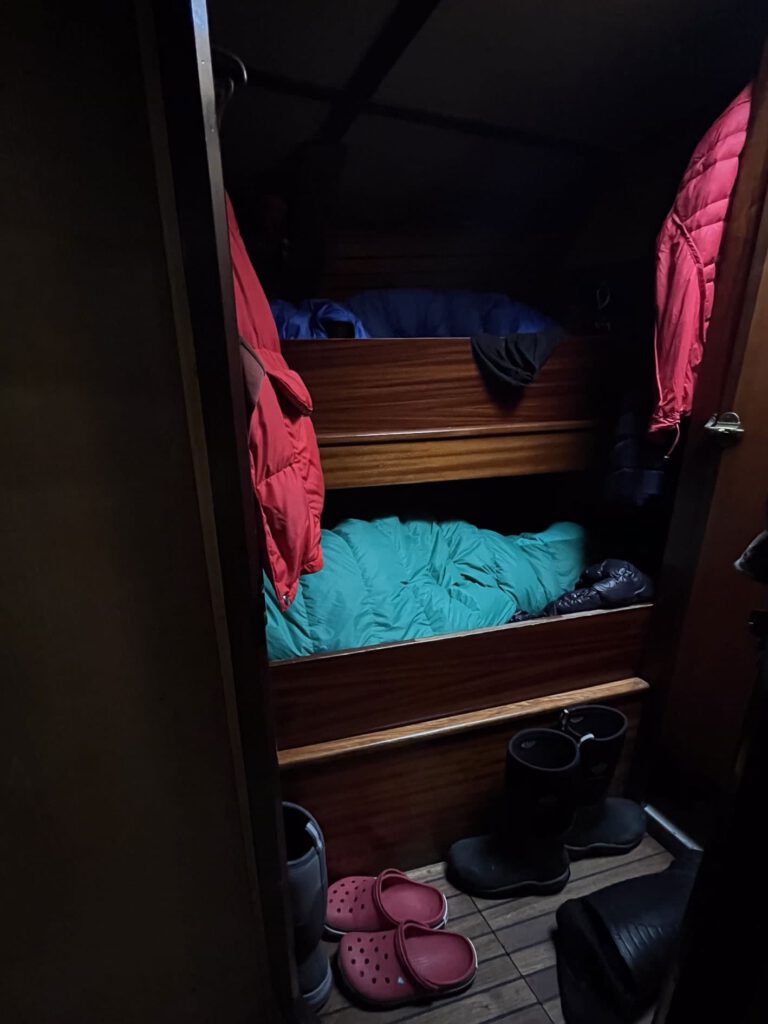
We continue past port cabin no. 2, where Paula (above) and Unda (below) live…
… in the salon.
The salon – our living room
There is enough space for us all to eat here in the lounge. This is also the meeting place for conversations, for discussing, celebrating and enjoying the cozy get-together, as well as an ideal place for reading, making music, singing or even for yoga lessons.
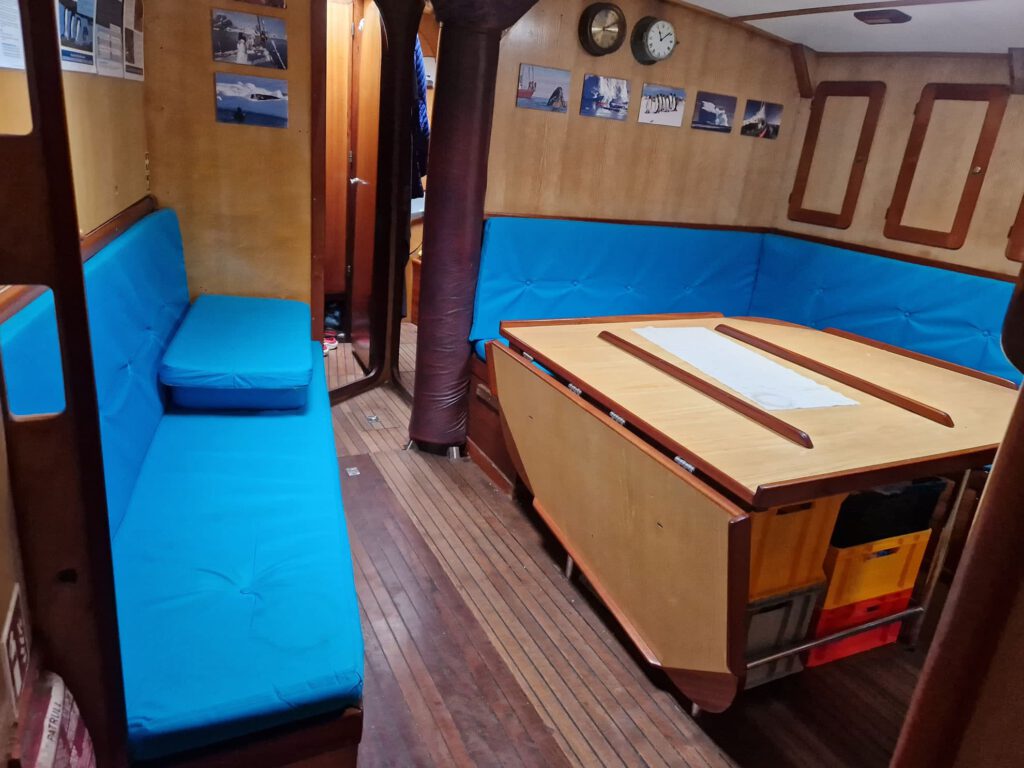
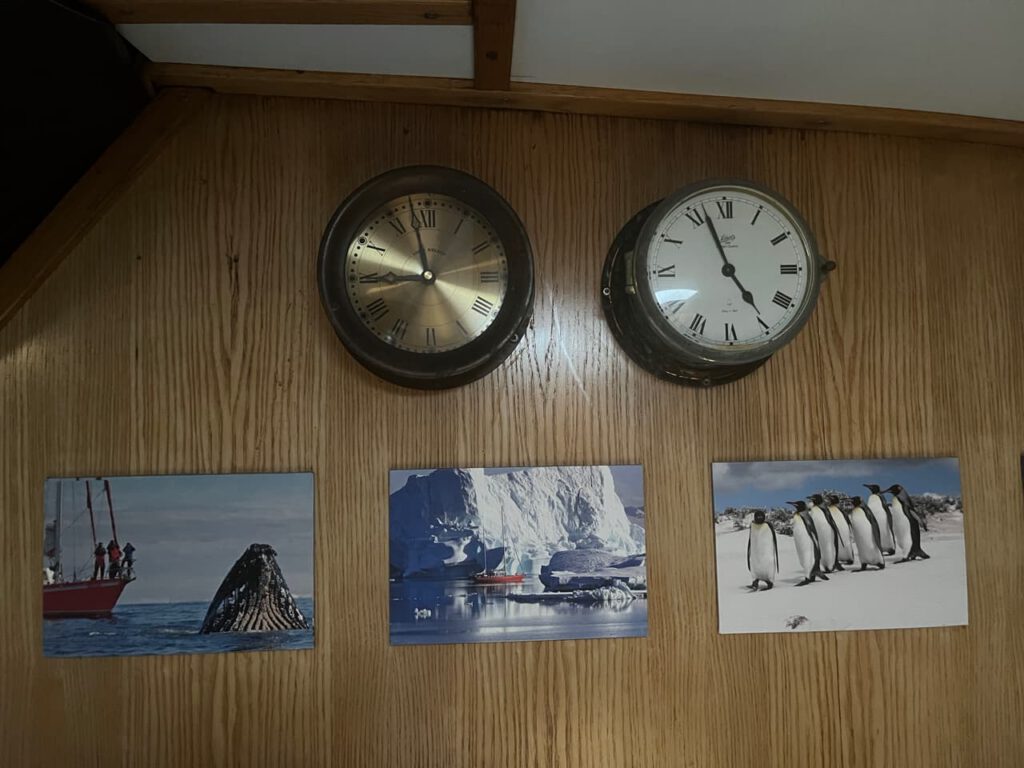
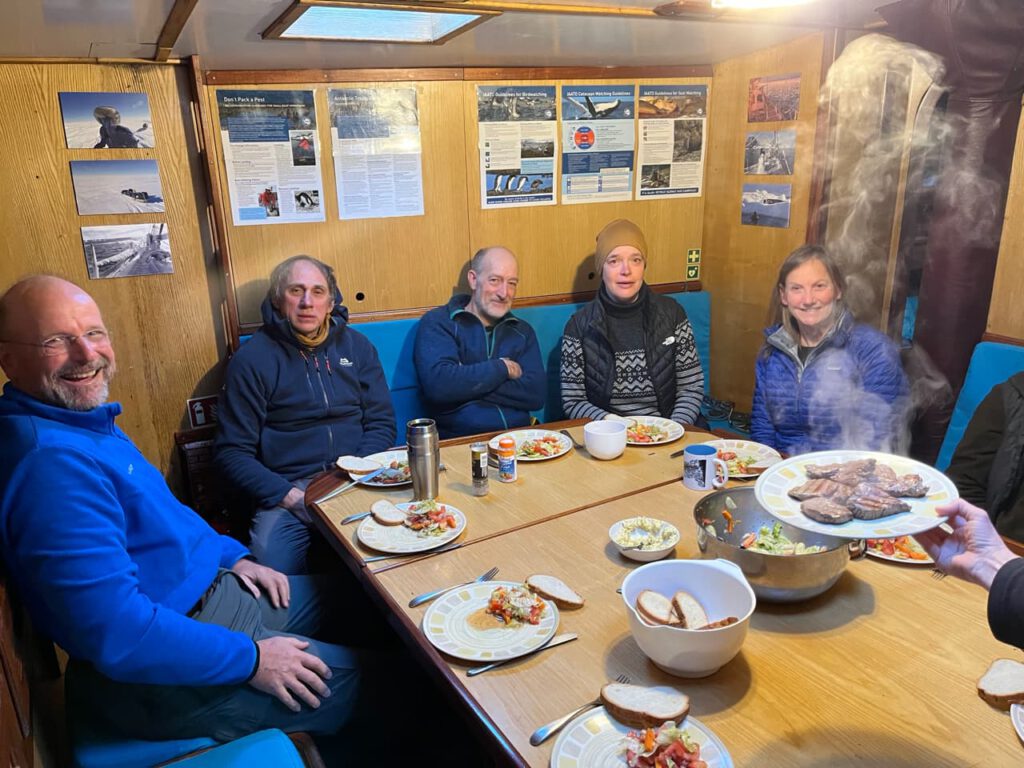
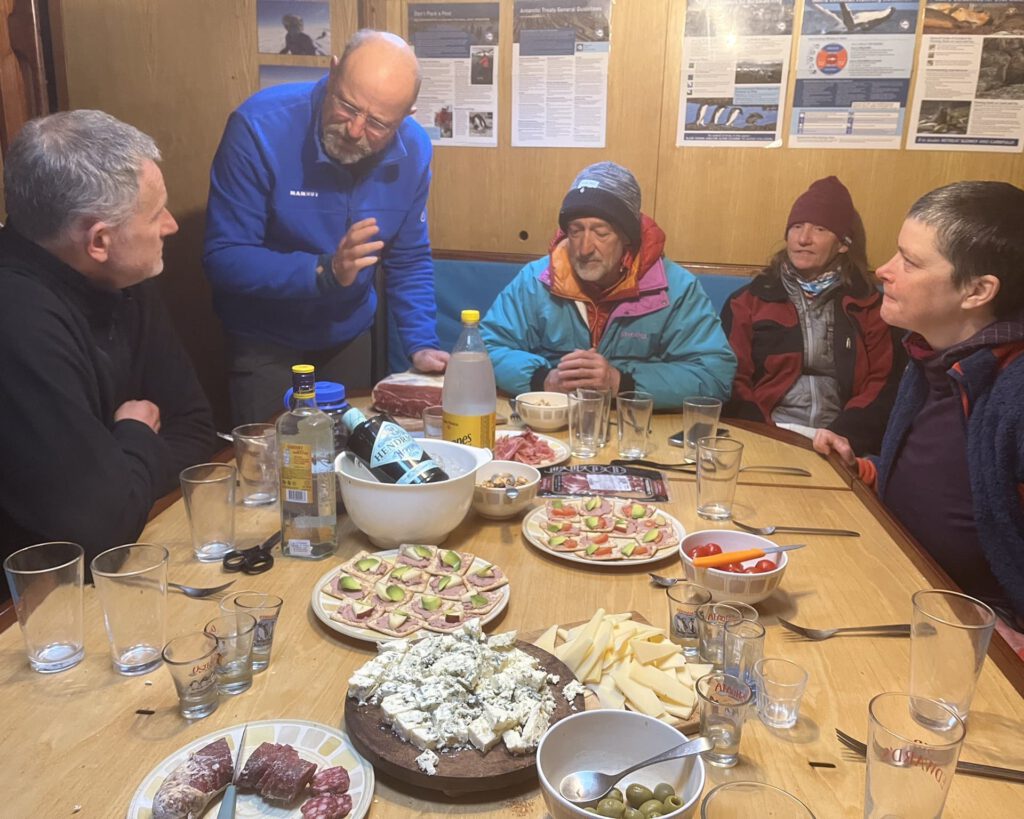
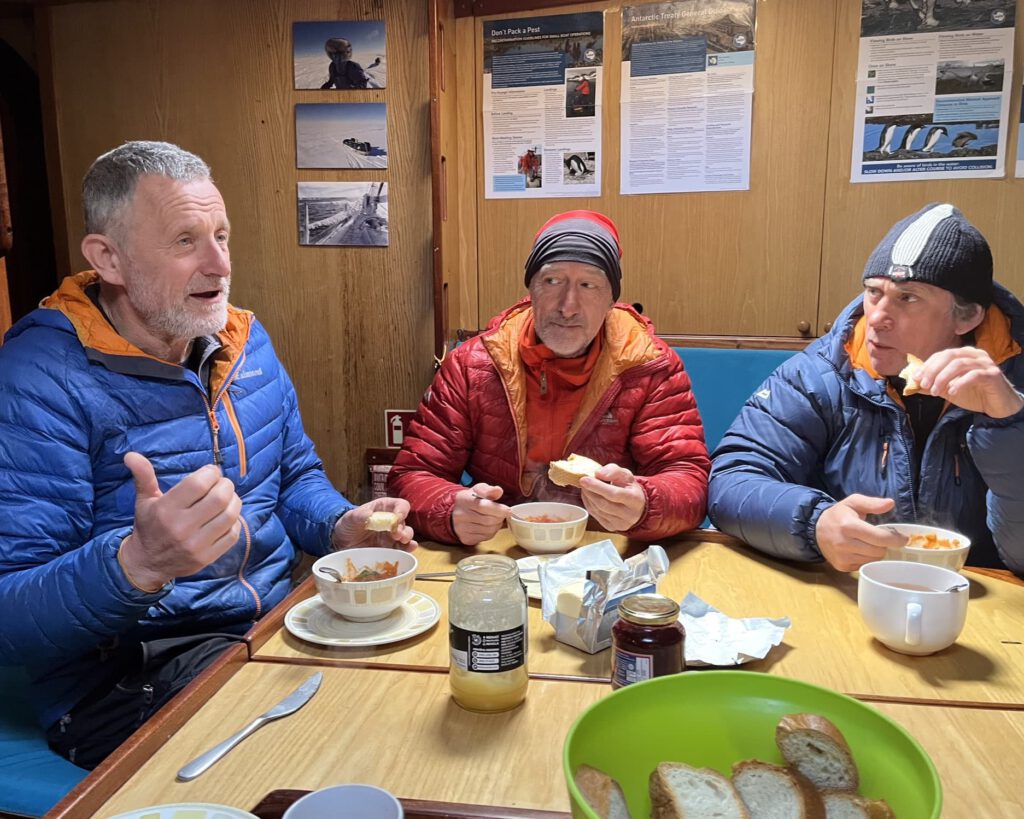
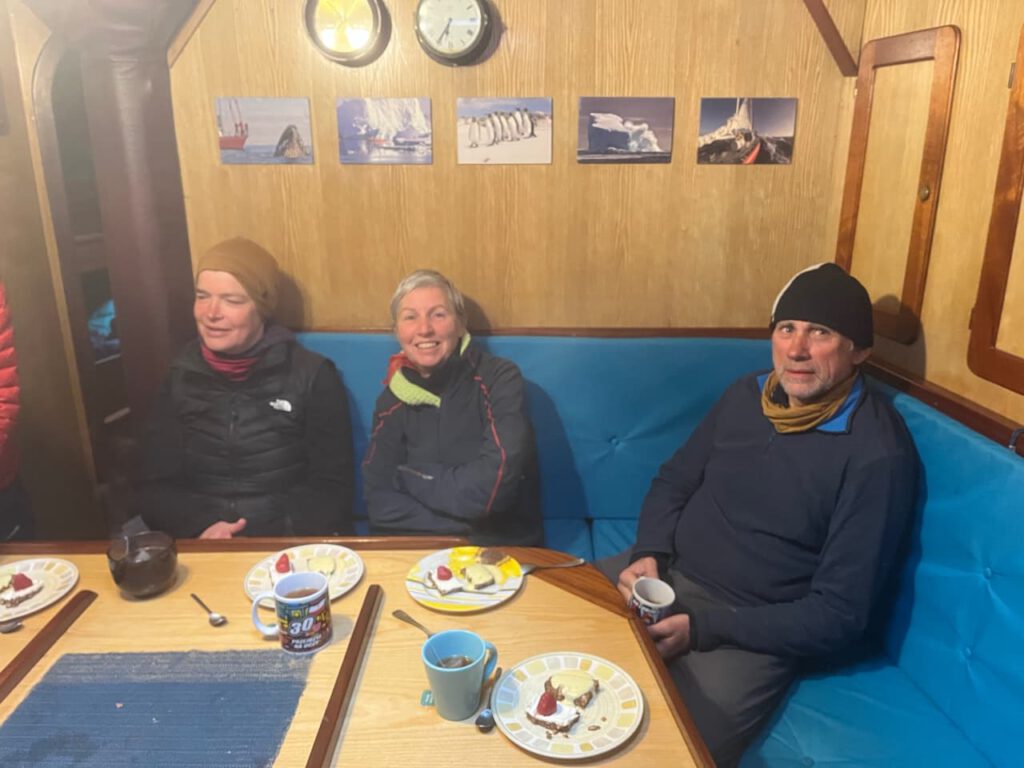
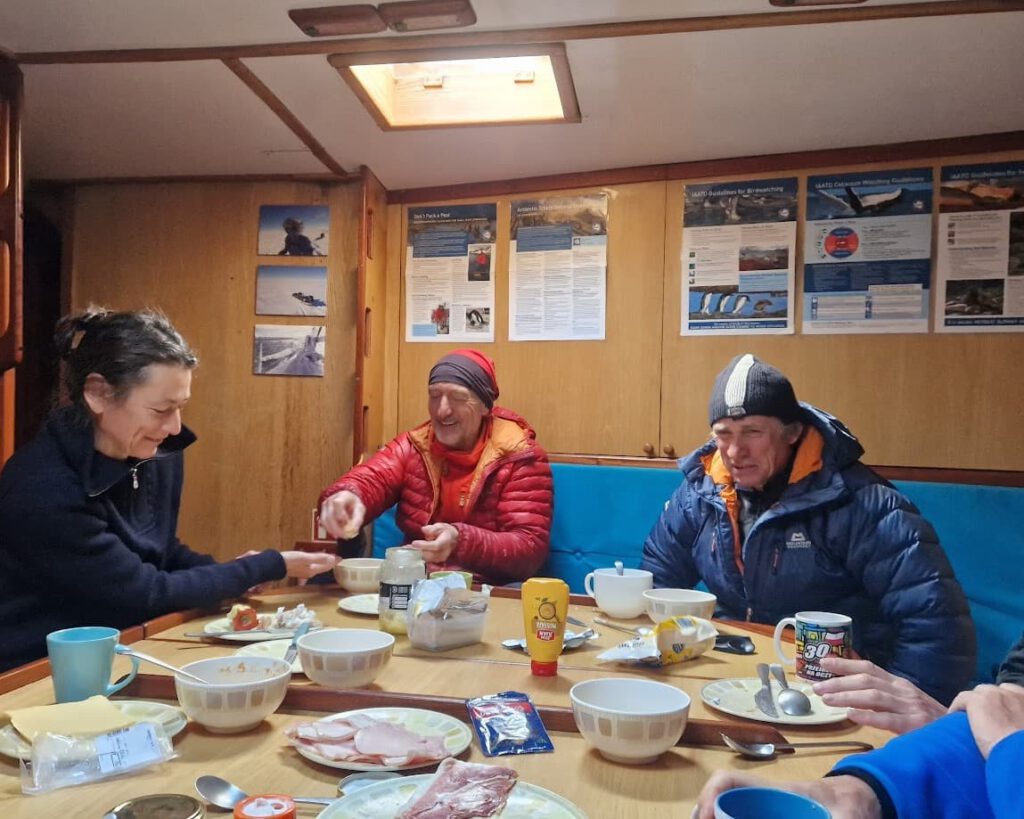
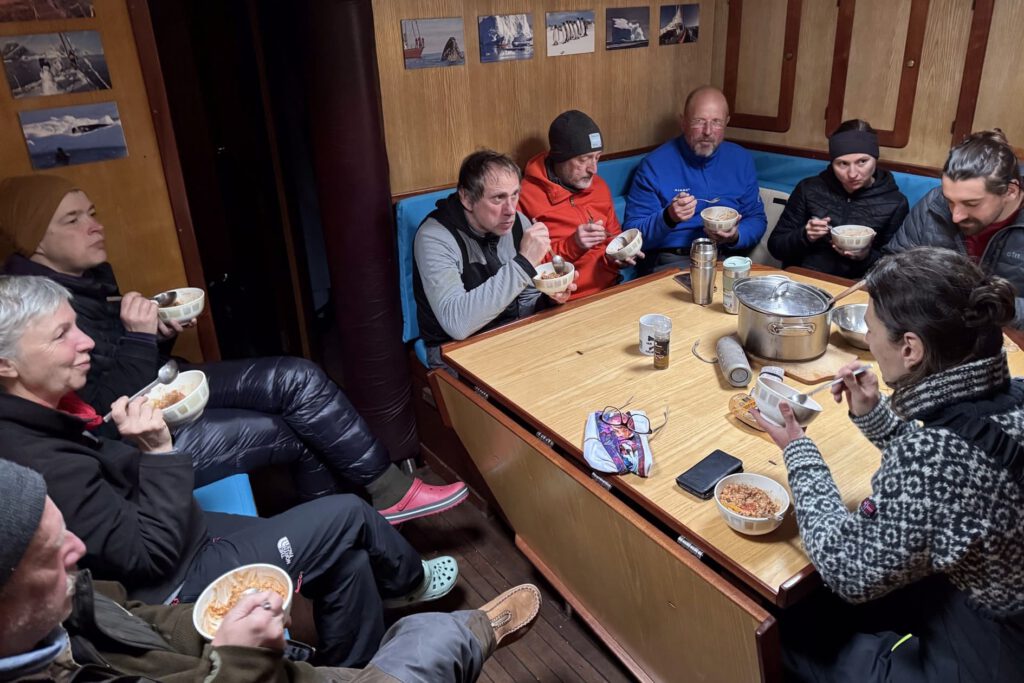
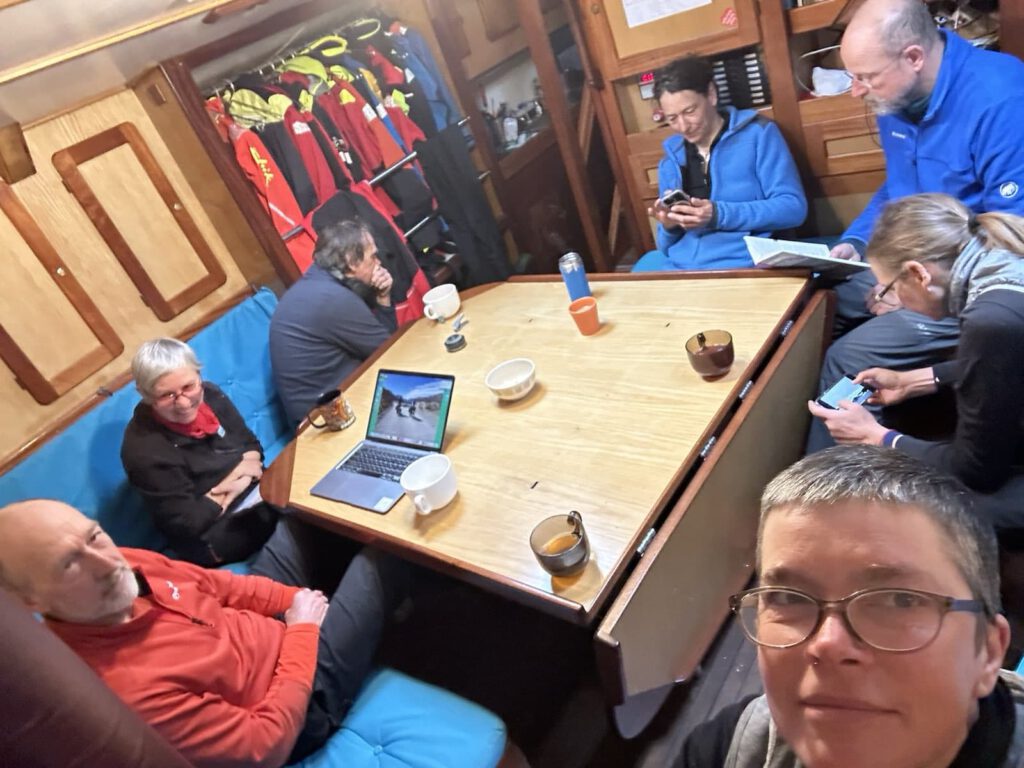
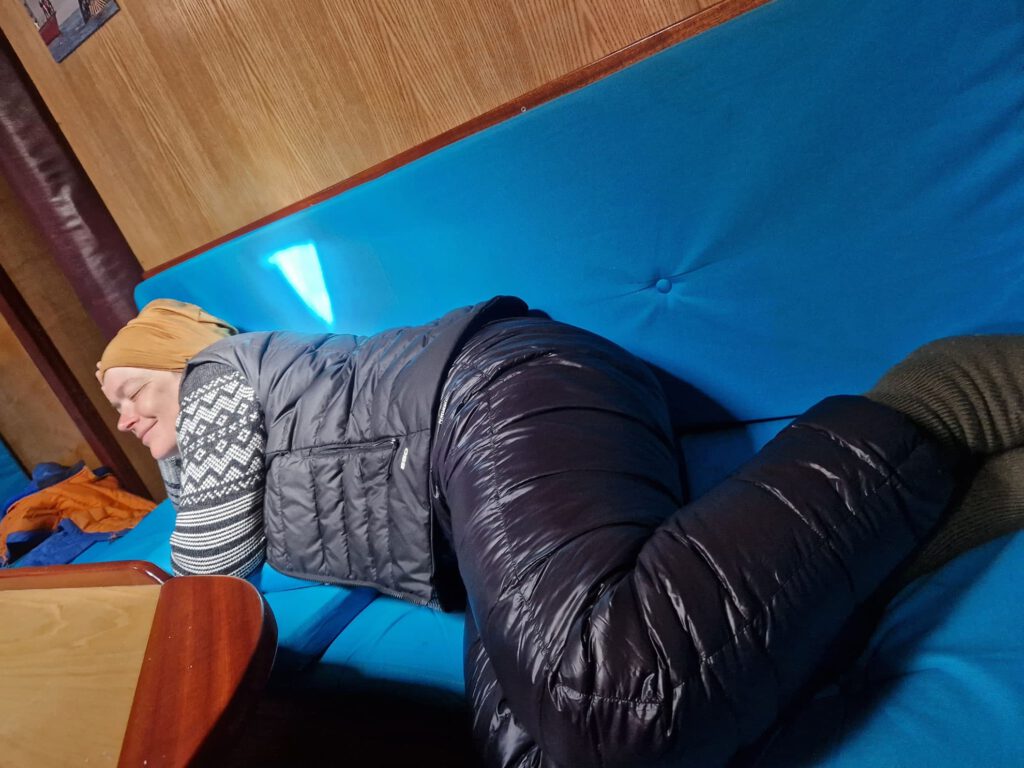
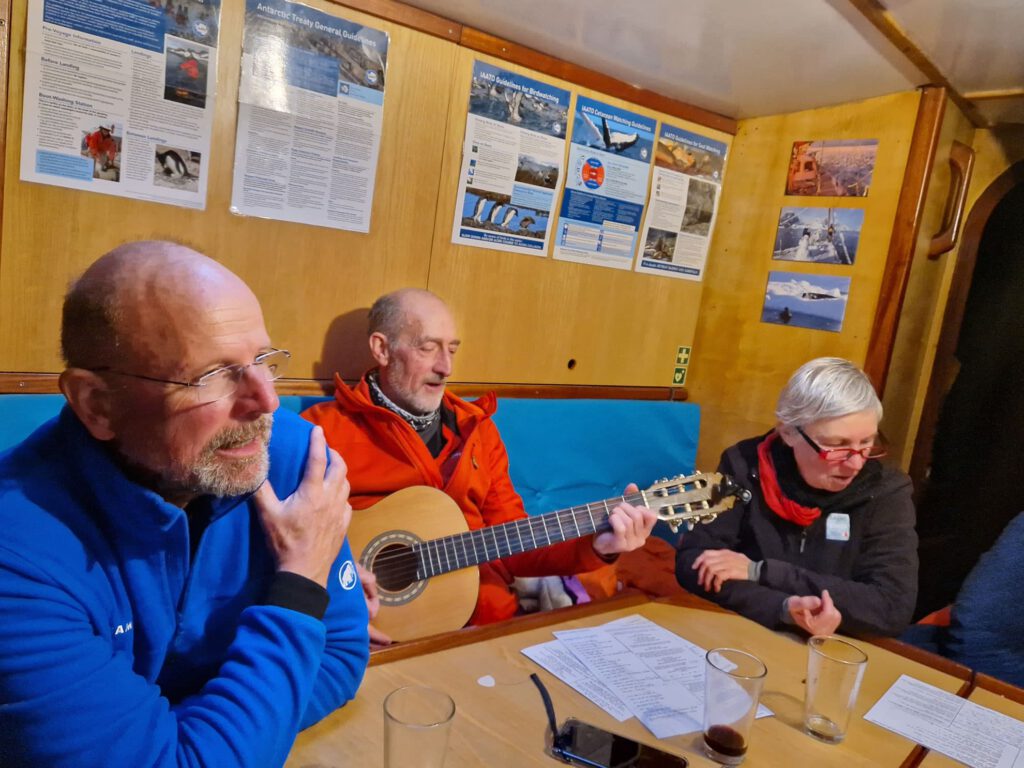
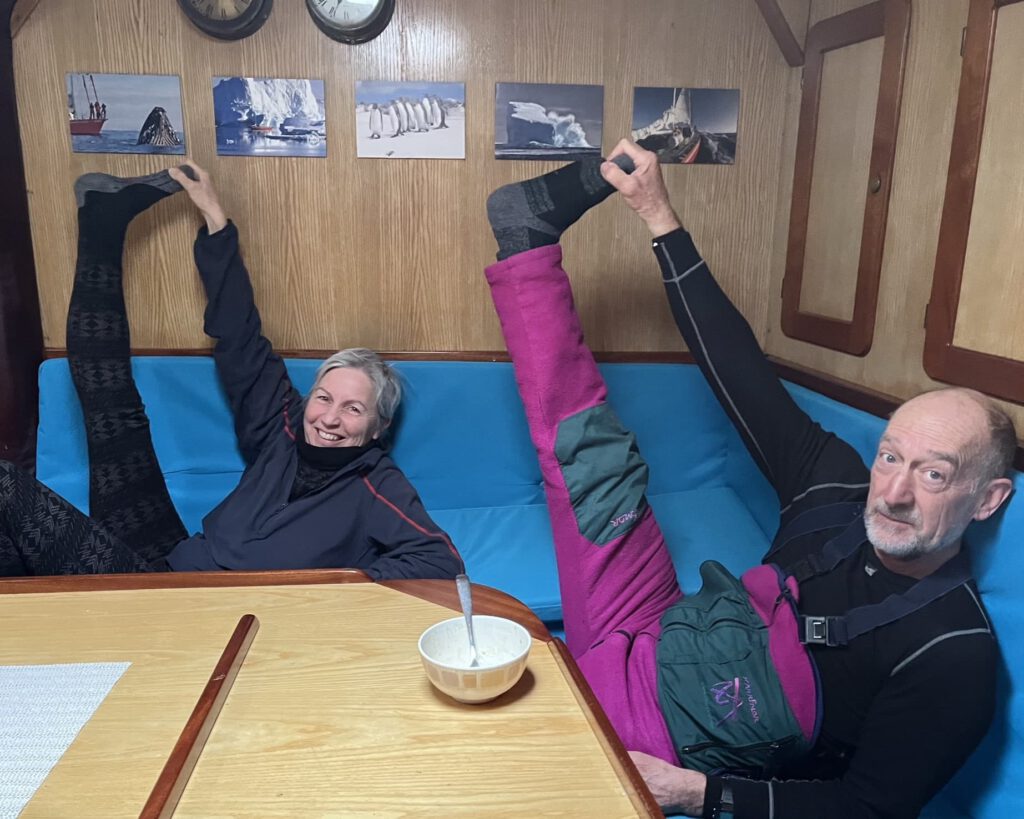
There is a checkroom for sailing clothing in the saloon next to the stairs. The watch schedule also hangs here, and next door is the library and our busy power station.
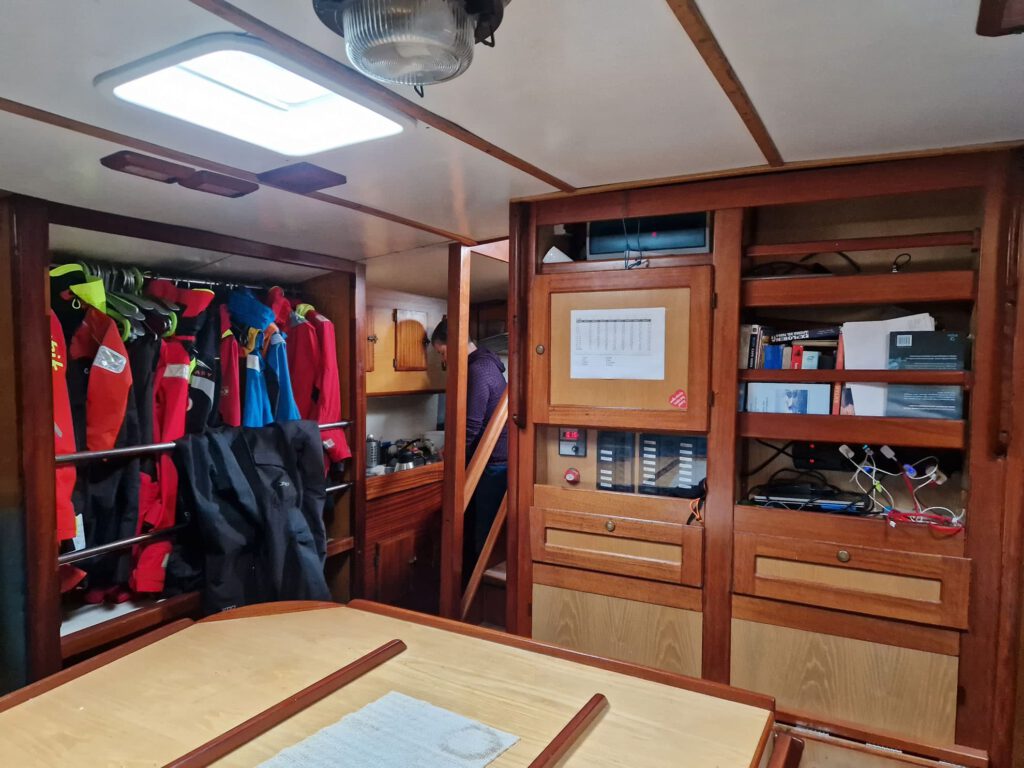
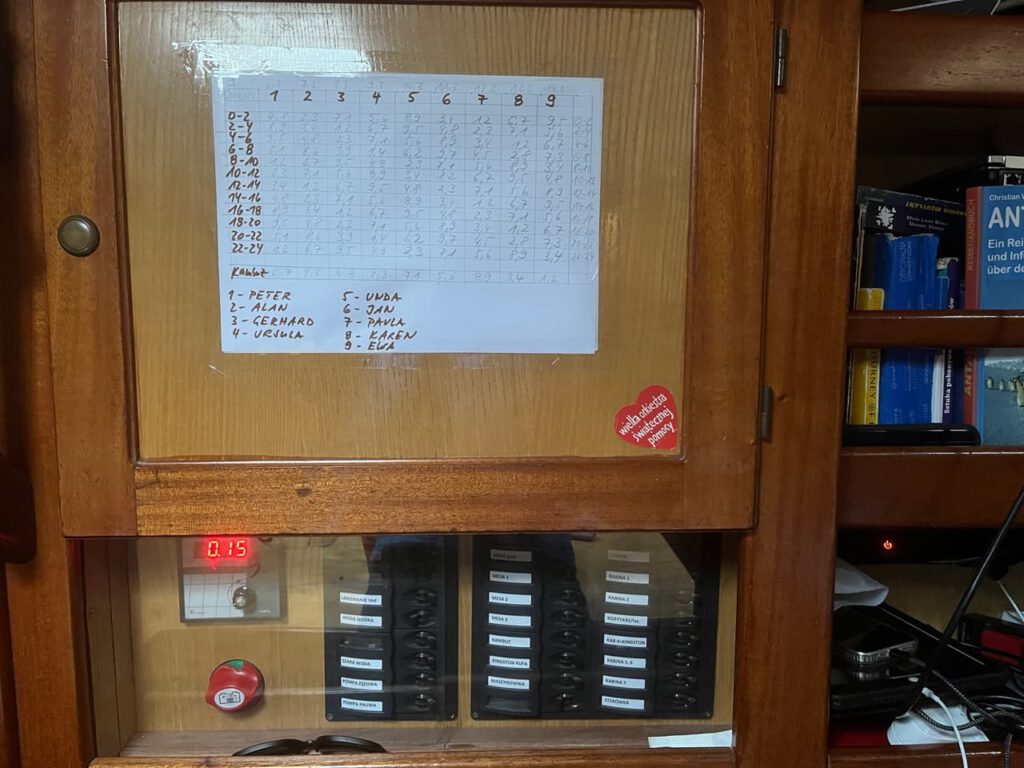
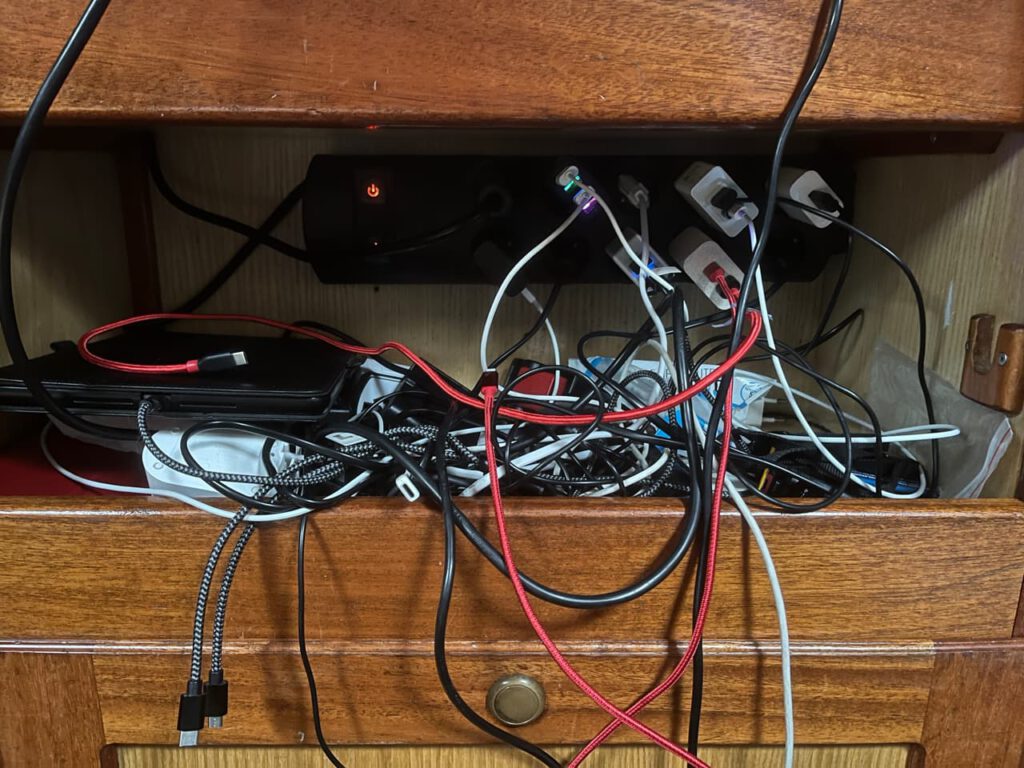
Red light district
At night, the salon – like the entire ship – becomes a red light district. Why? You can find out here in Paula’s logbook entry.
The only exception: a power failure. Then the headlamps have to come on and shine with white light.
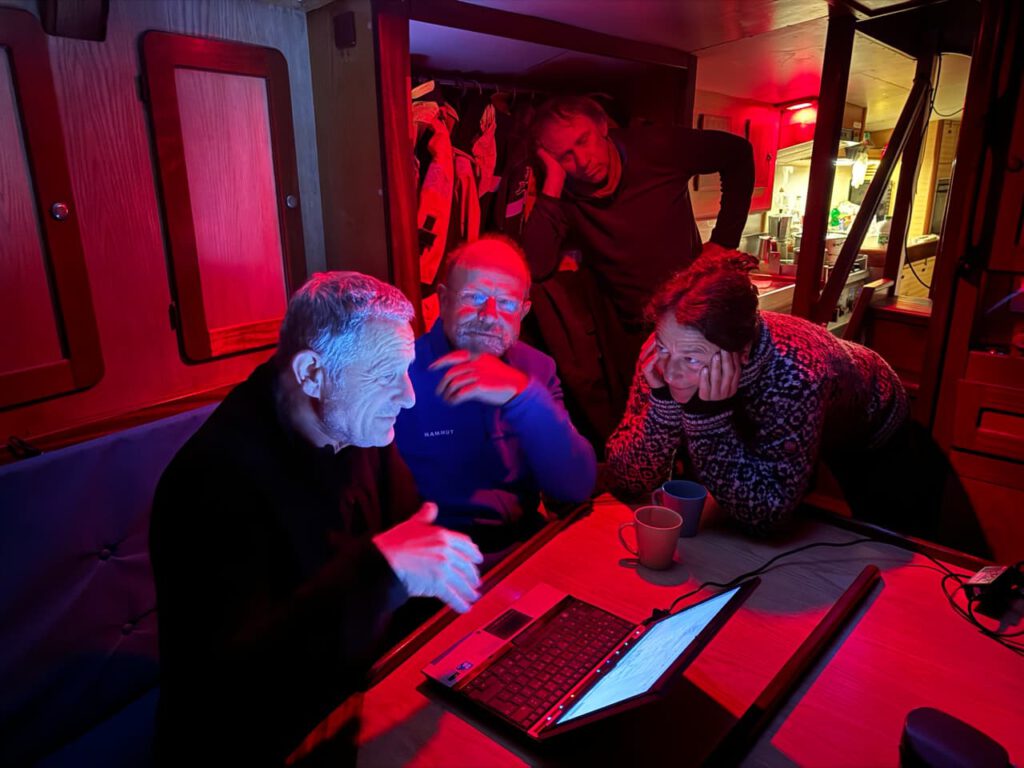
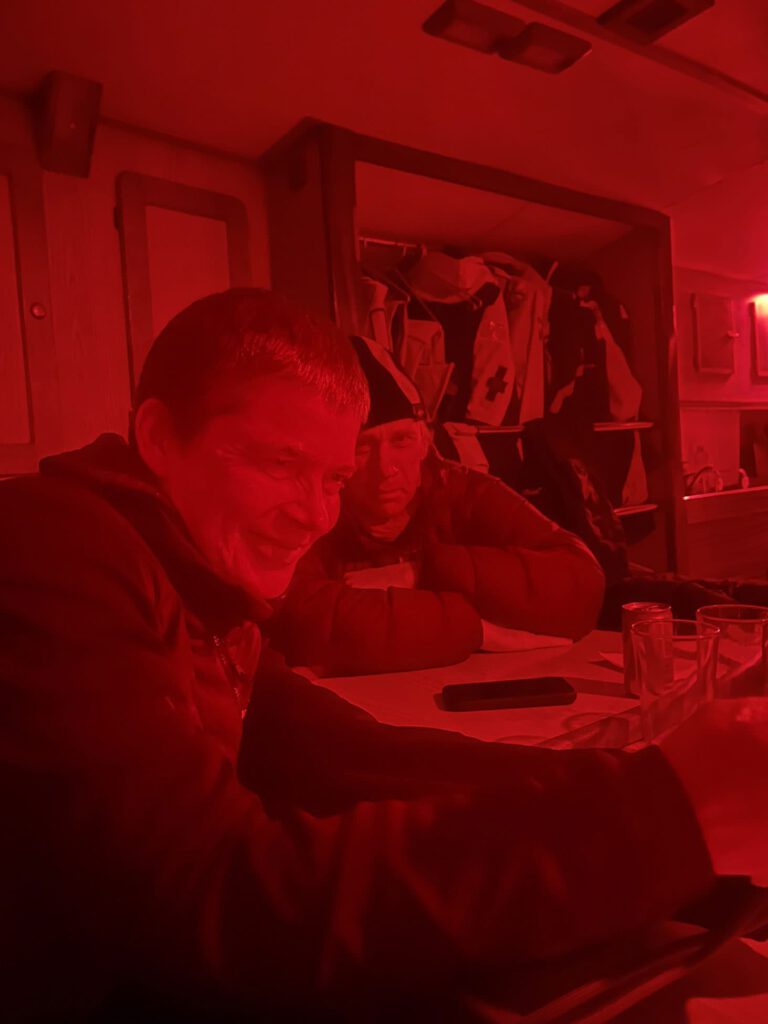
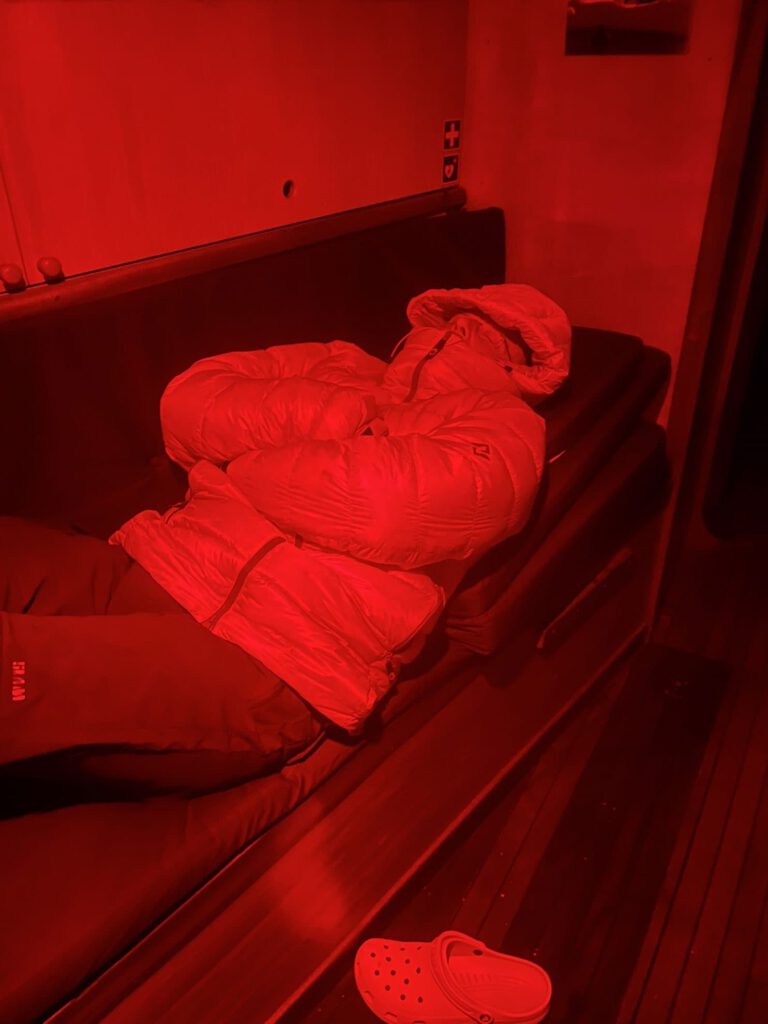
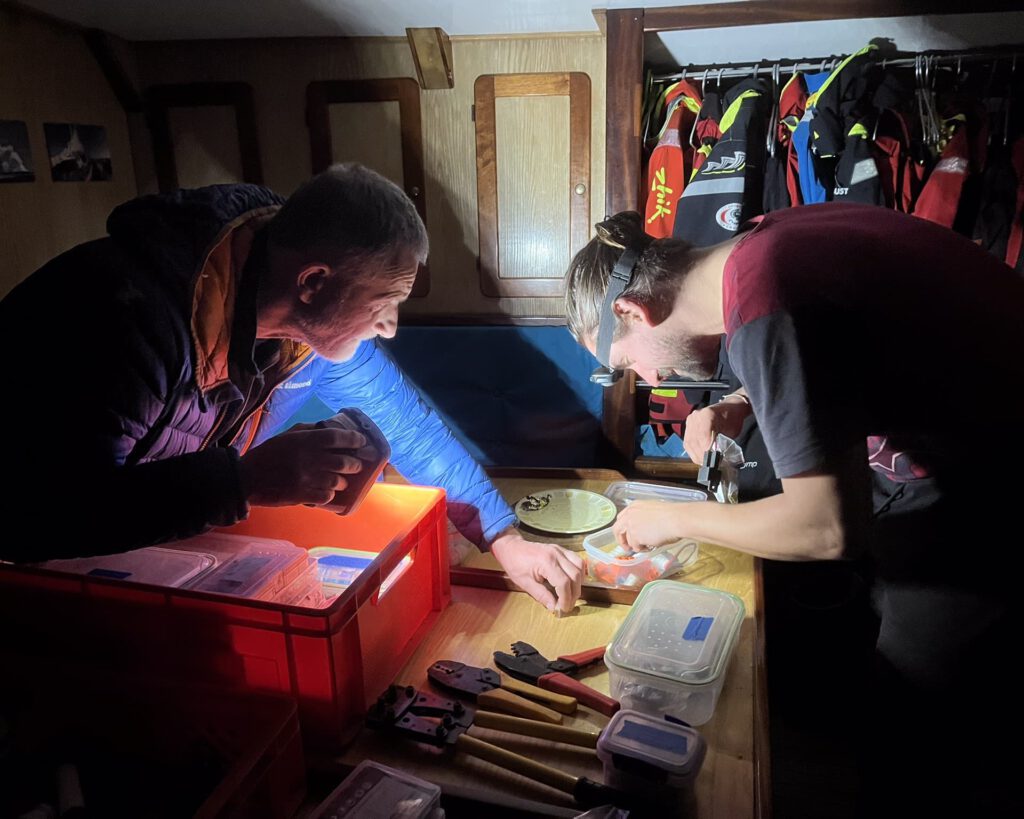
The wellness area
The light-flooded, naturally ventilated, spacious bathroom, where we sometimes queue up to brush our teeth (we use the comfortable bench in the saloon for this), is directly adjacent to the saloon and is located in front of the quietest cabin, No. 3.
We enjoyed our first and pleasantly warm shower after two weeks in the Weddell Sea on Beak Island, otherwise washing with refreshing Antarctic water was the order of the day – it woke us up quickly.
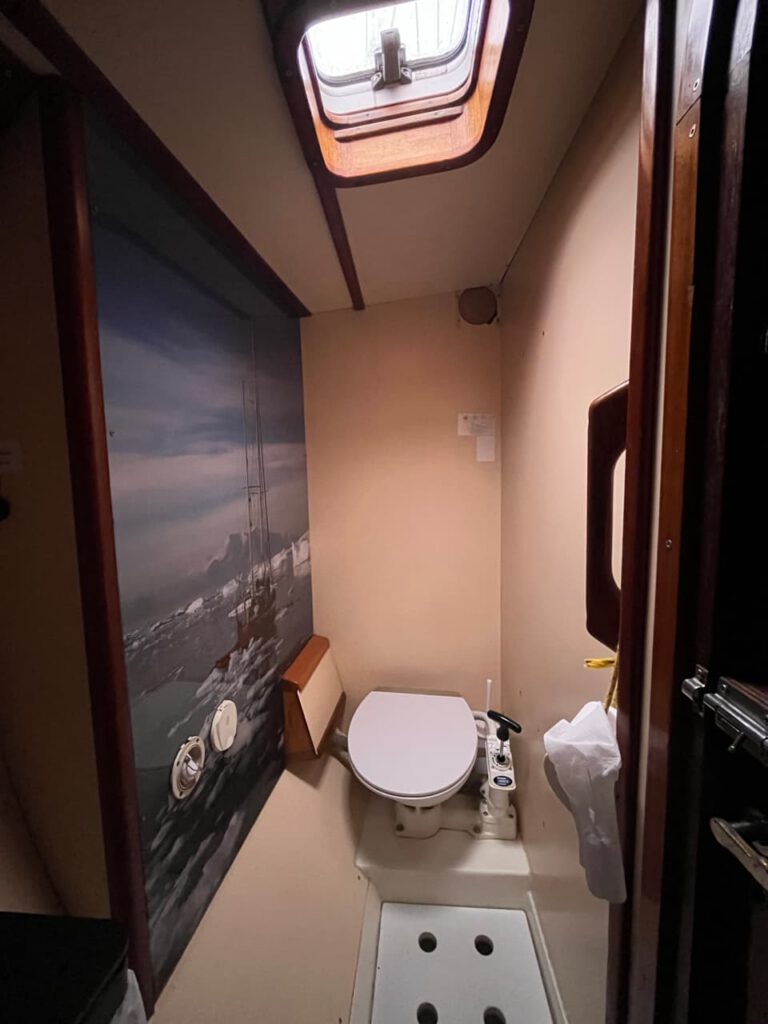
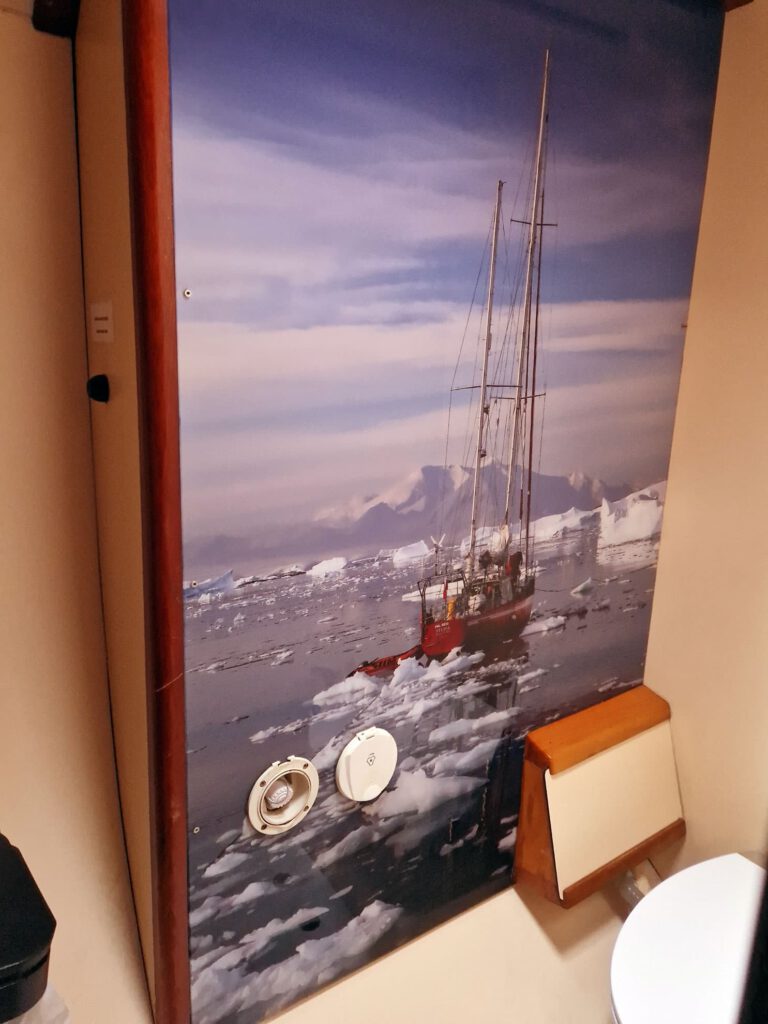
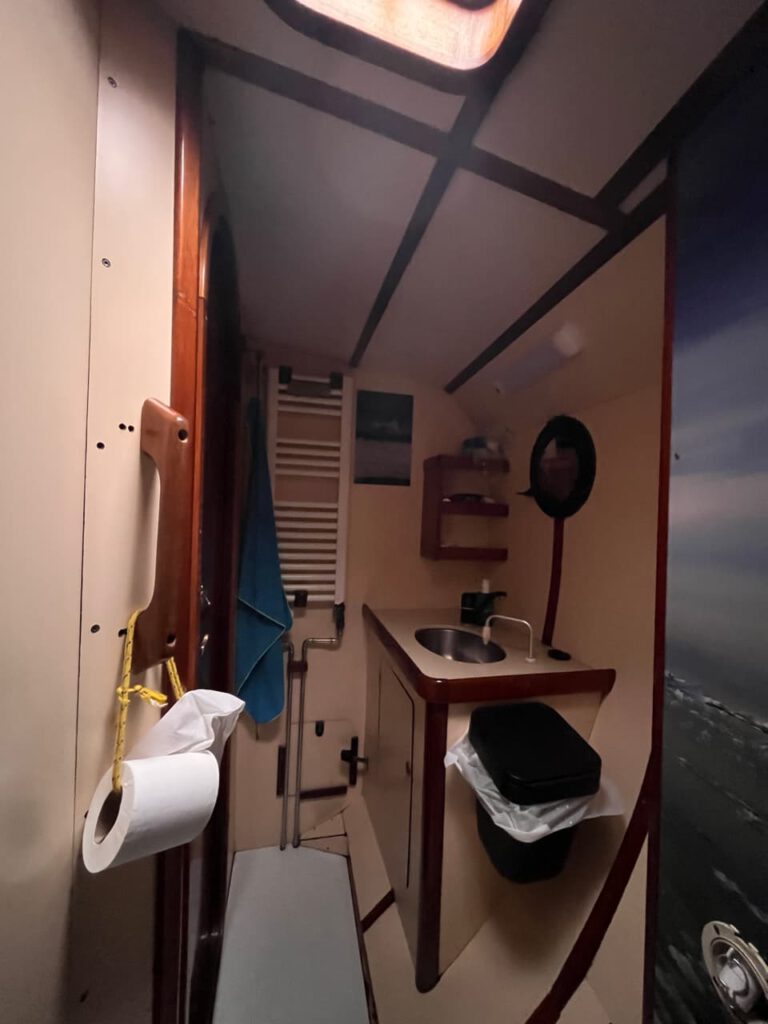
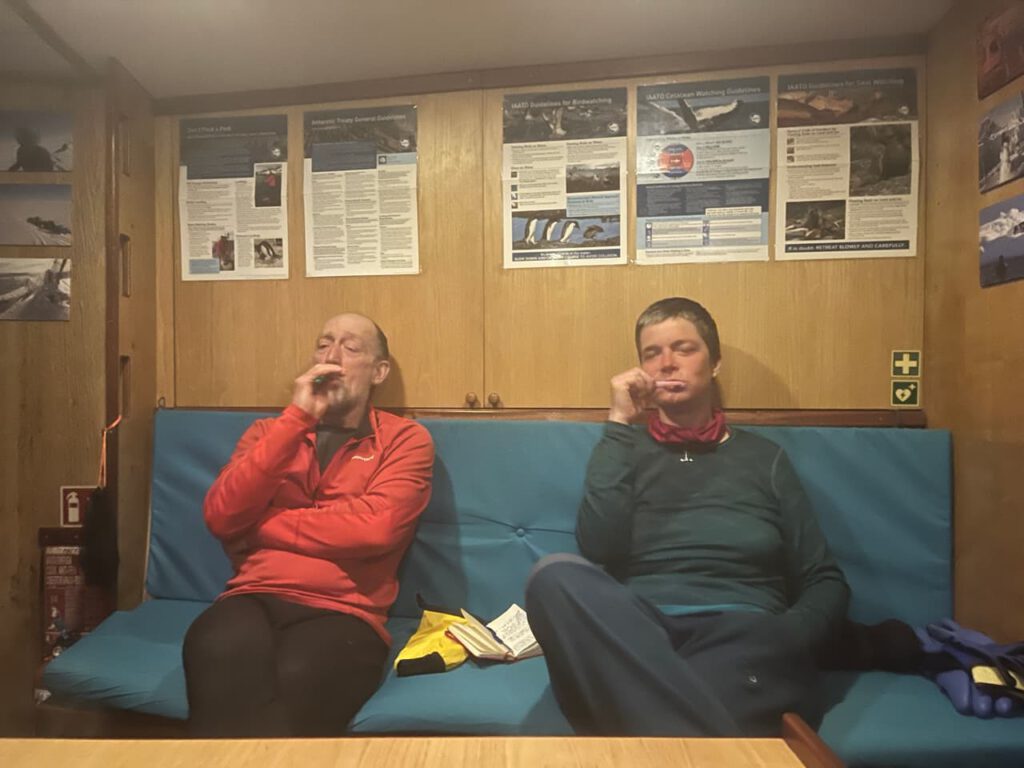
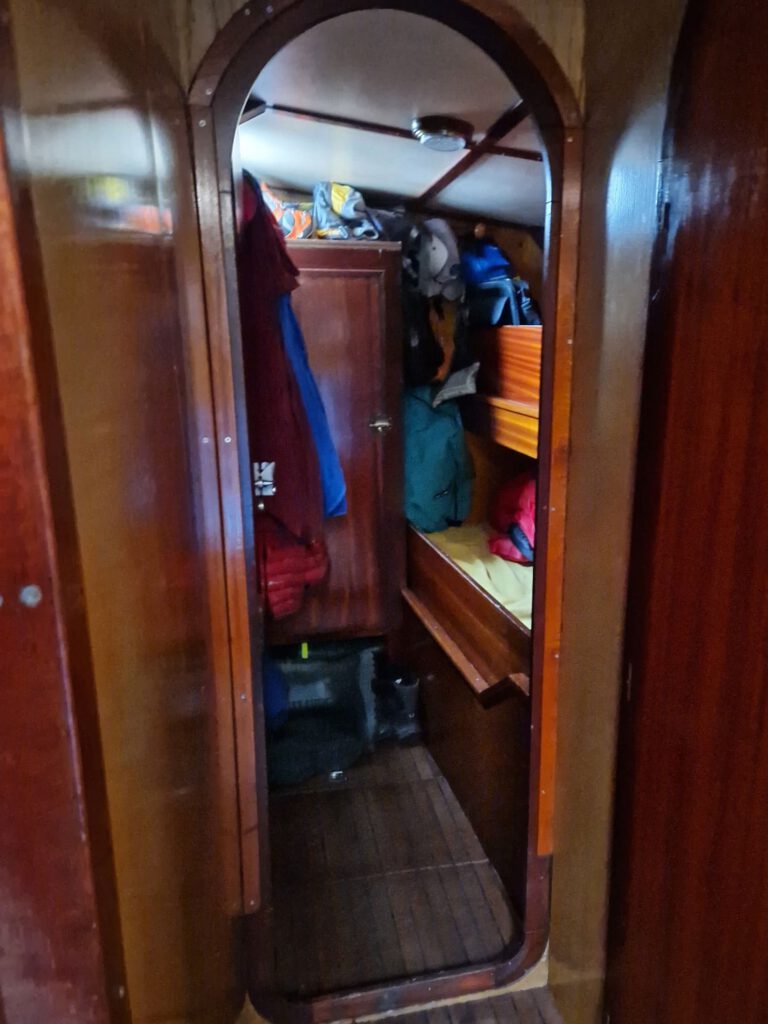
Cabin no. 3 – Quiet?
Since the rough seas are not so noticeable here – amidships – it is said.
This is where Alan and Peter have their kingdom.
And it’s obviously true that cabin no. 3 is quiet.
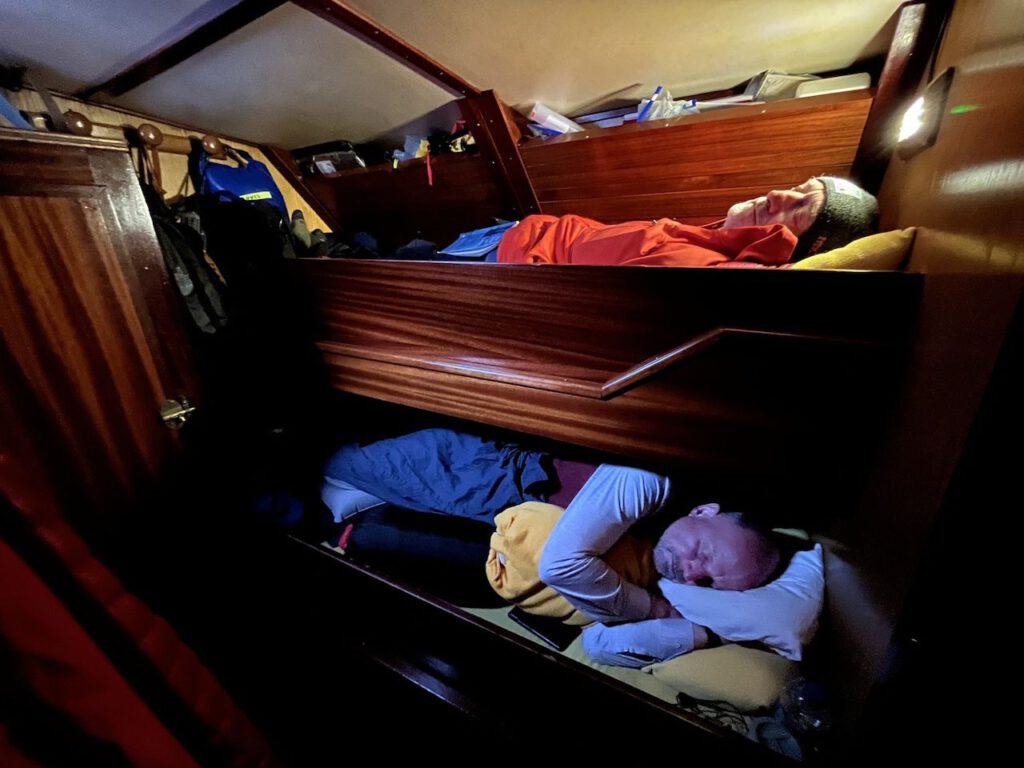
The galley
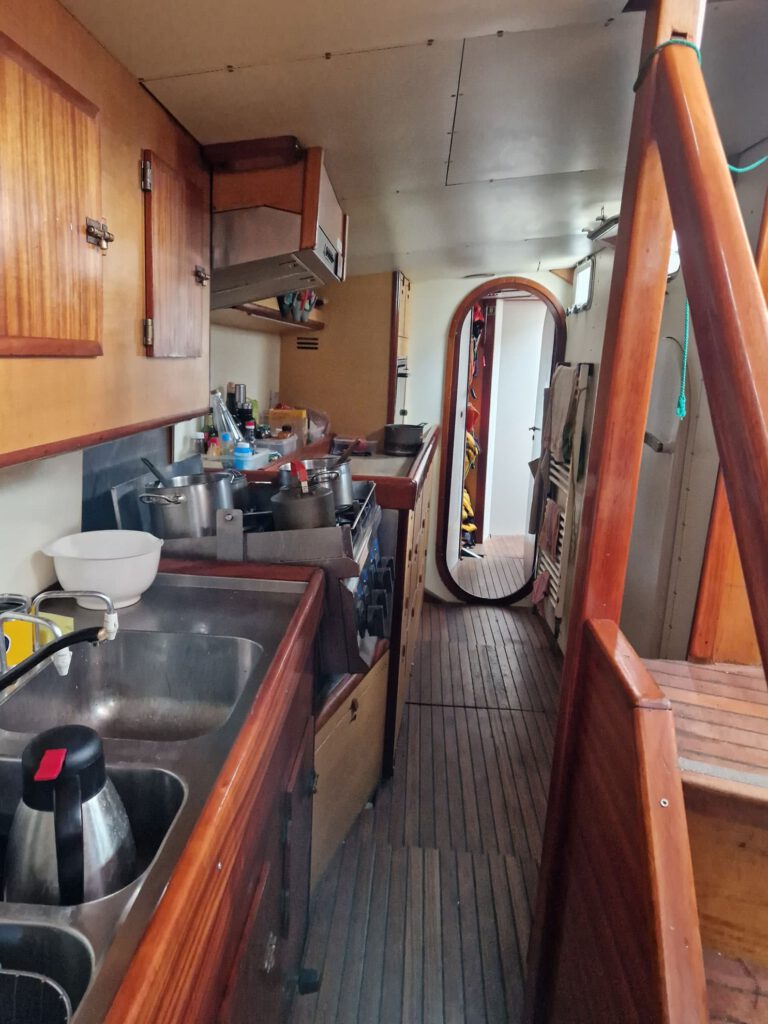
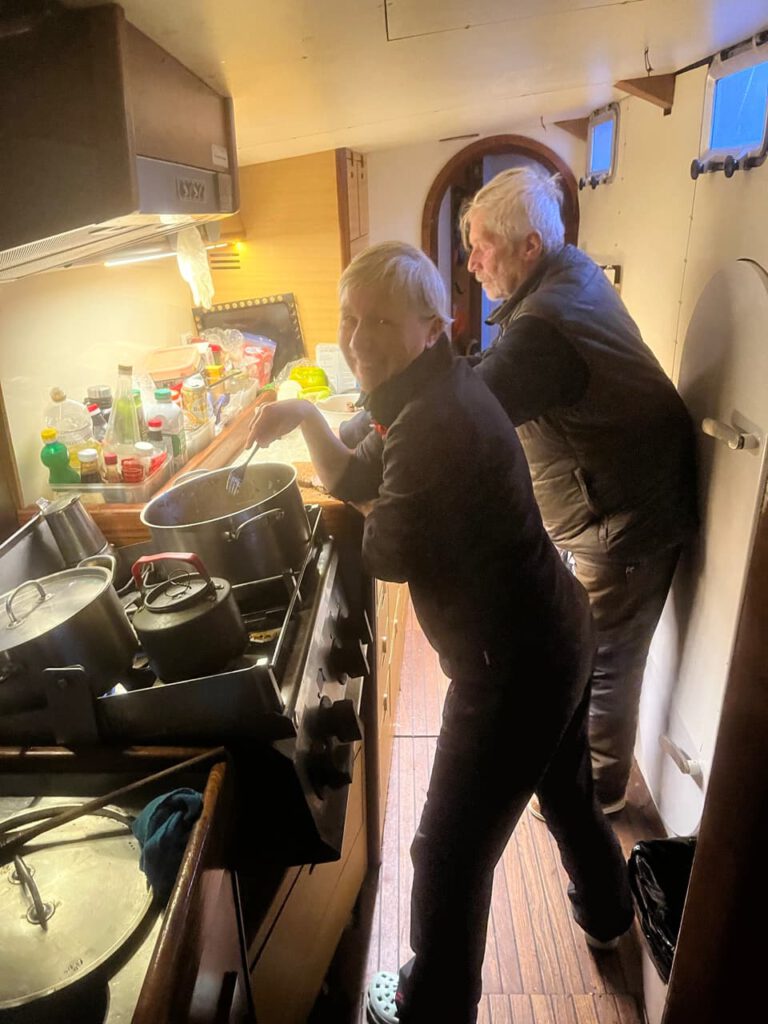
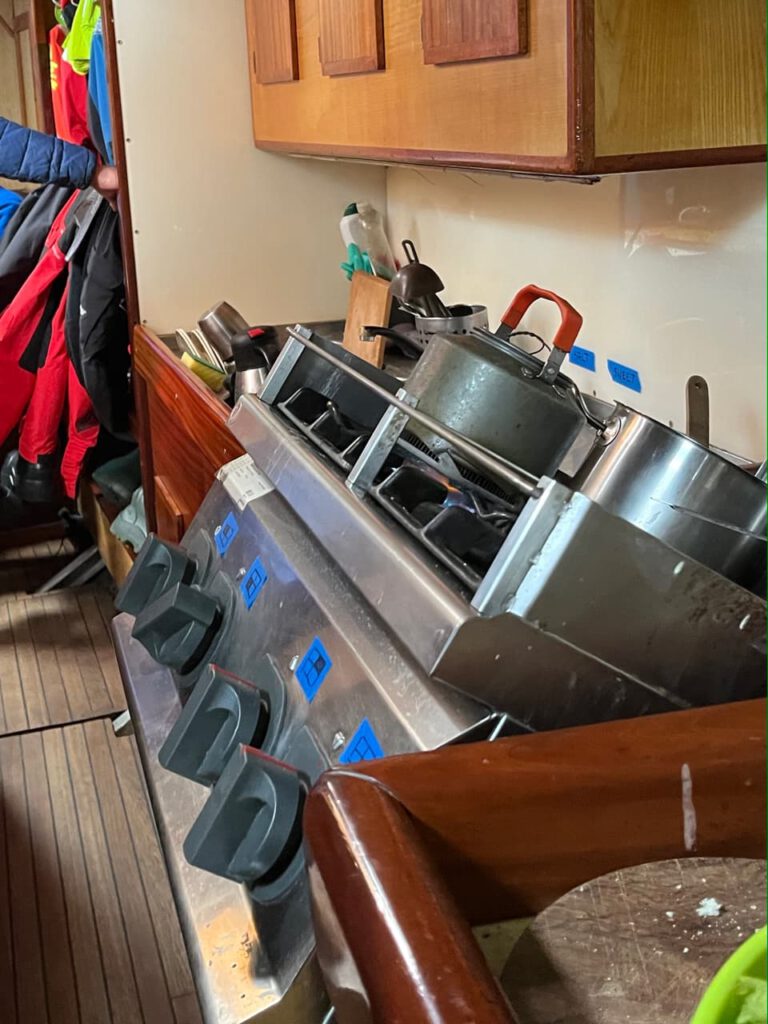
We can show off our cooking skills on the starboard side. Our kitchenette is equipped with everything we need, including an oven, where we bake our own bread now that all the fresh bread has been eaten. But it’s not just bread that comes out of the oven: plaited bread, onion bread, grain bread, rolls, brownies, cakes… The various chefs have already conjured up all of these.
By the way, cooking is always done in teams of two, taking turns for the whole day. And: whoever is in the galley has no other watch duties on deck at that day.
Depending on the sea state and temperature, cooking on board is a real challenge. Unfortunately, we are not gimballed like the stove. Sometimes the wife wears a hat and braces herself against the waves at full tilt.
Before start cooking: Shopping in the forepeak – and then off we go …
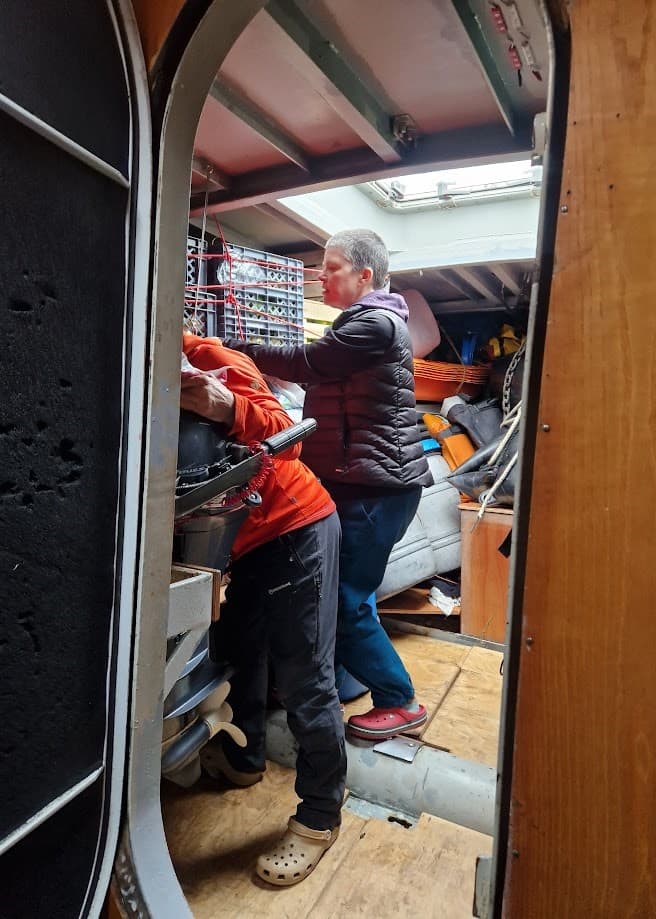
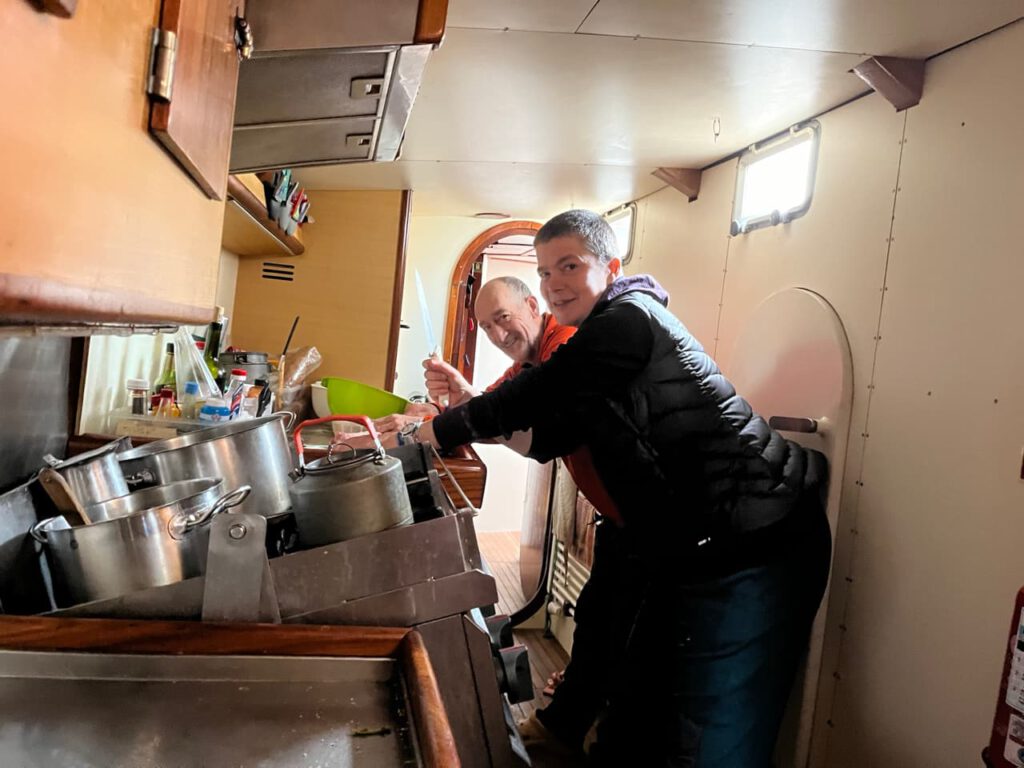
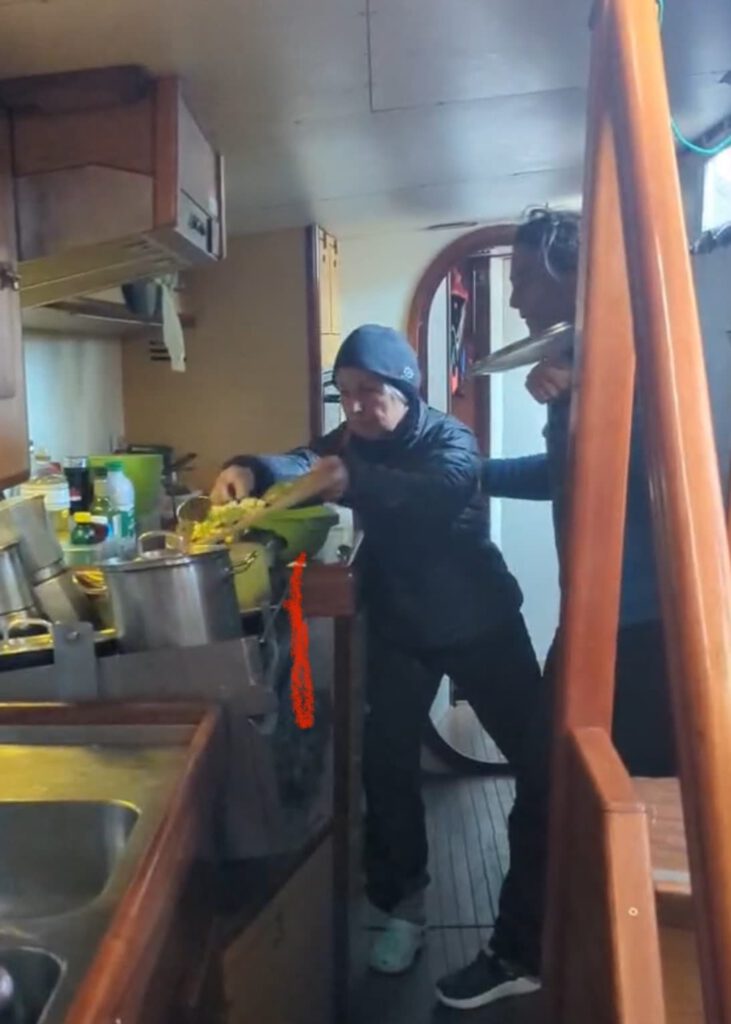
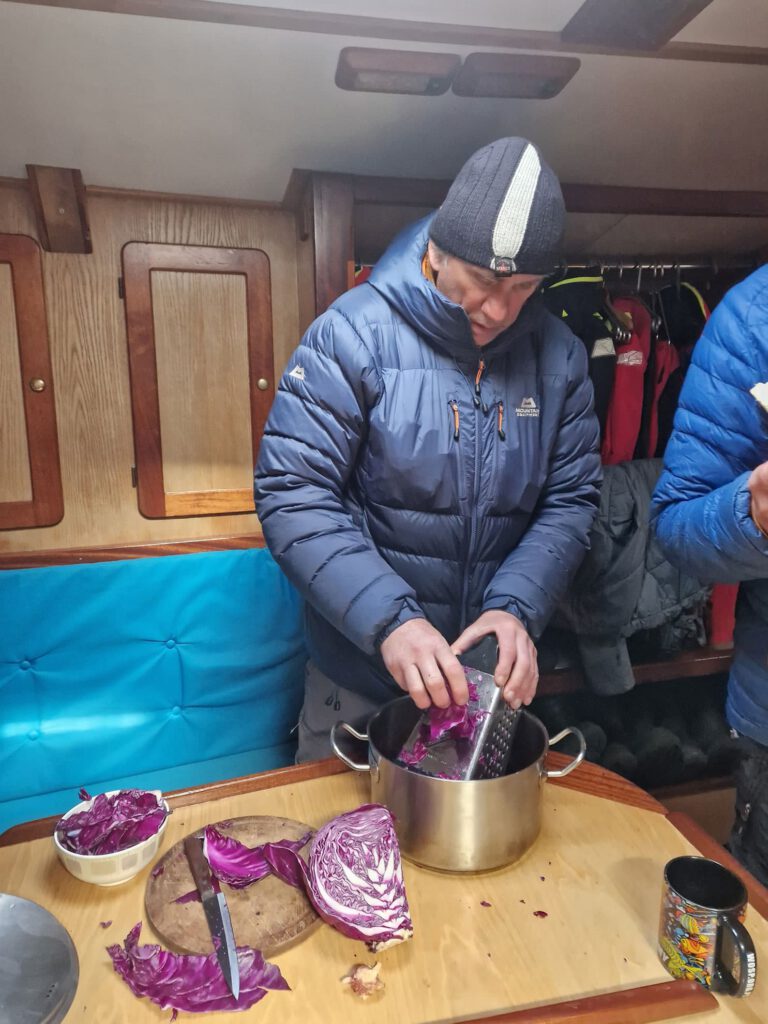
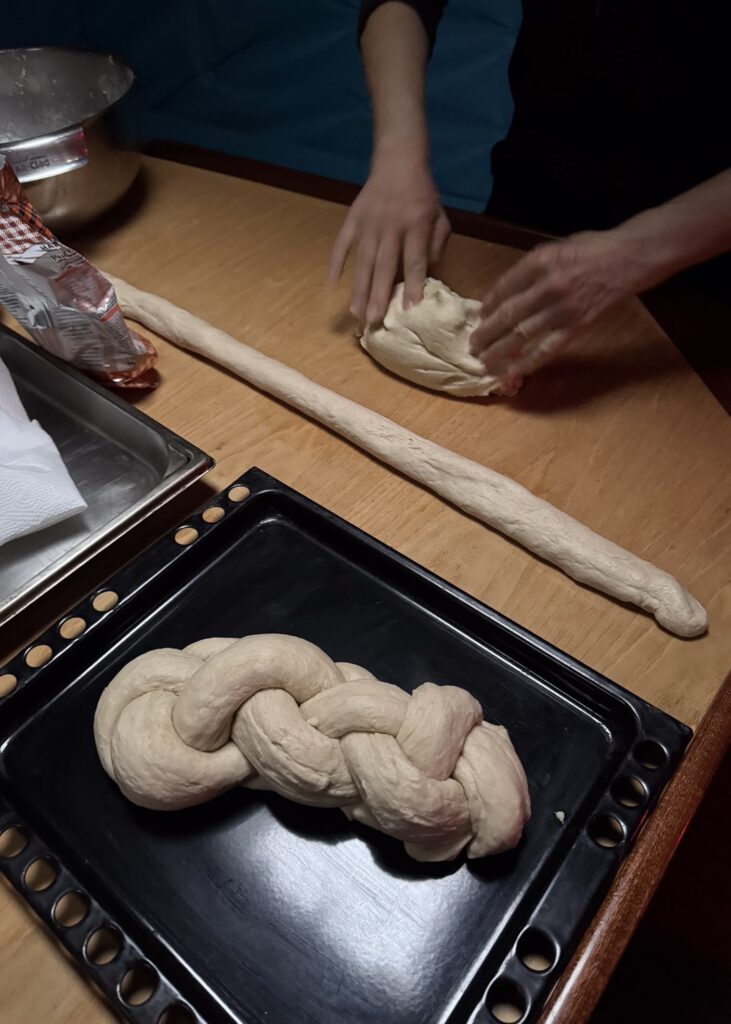
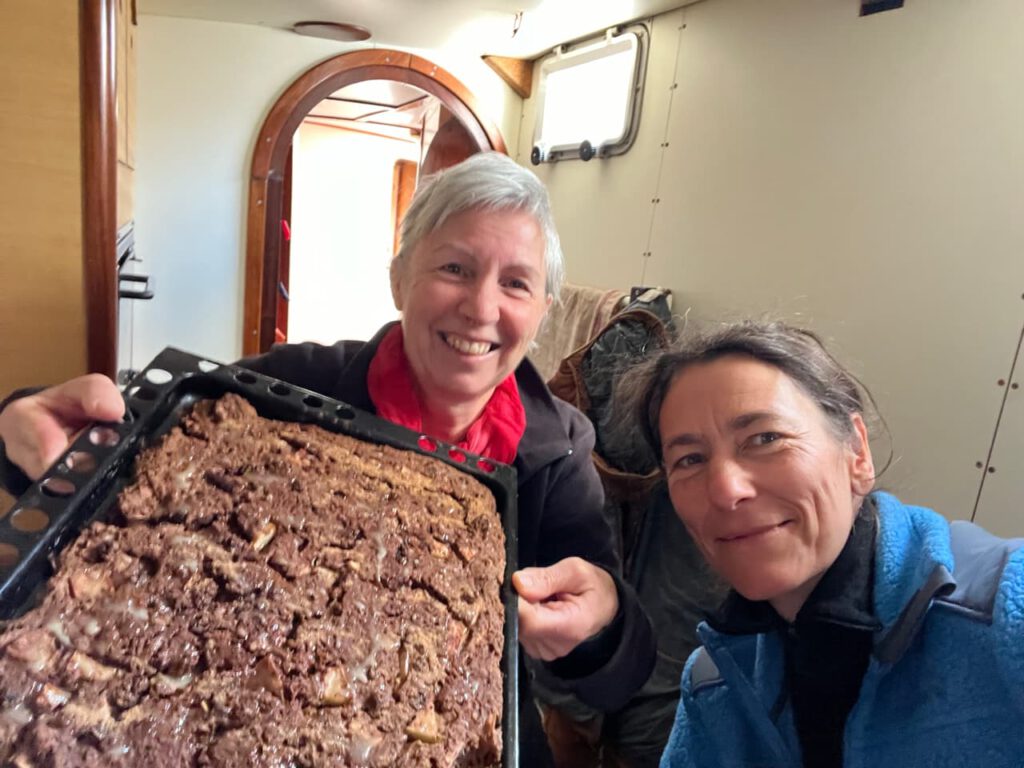
Delicacies from the galley
Porridge with fresh fruit salad is our daily breakfast classic.
The menu is otherwise quite tasty, varied and often plentiful. Lunch and dinner are always cooked hot, only rarely is there a cold buffet. In heavy seas, stews are preferred, which are easy to eat from a bowl. And very often – whatever the weather – delicious desserts are served, usually conjured up by Ewa and Voy.
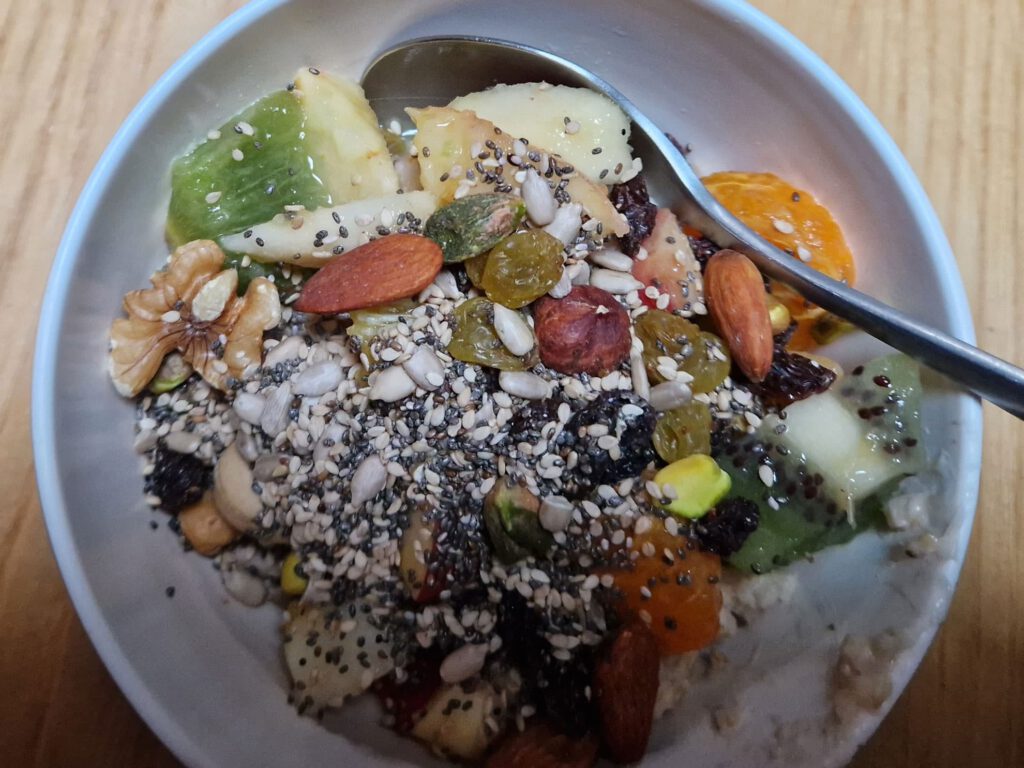
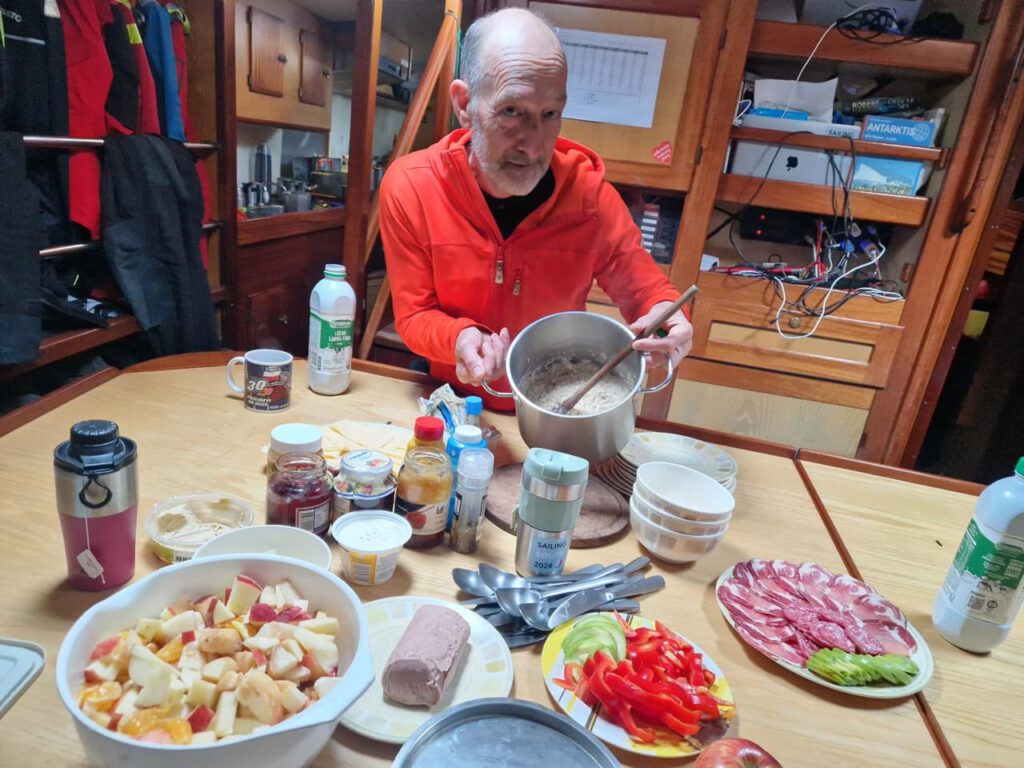
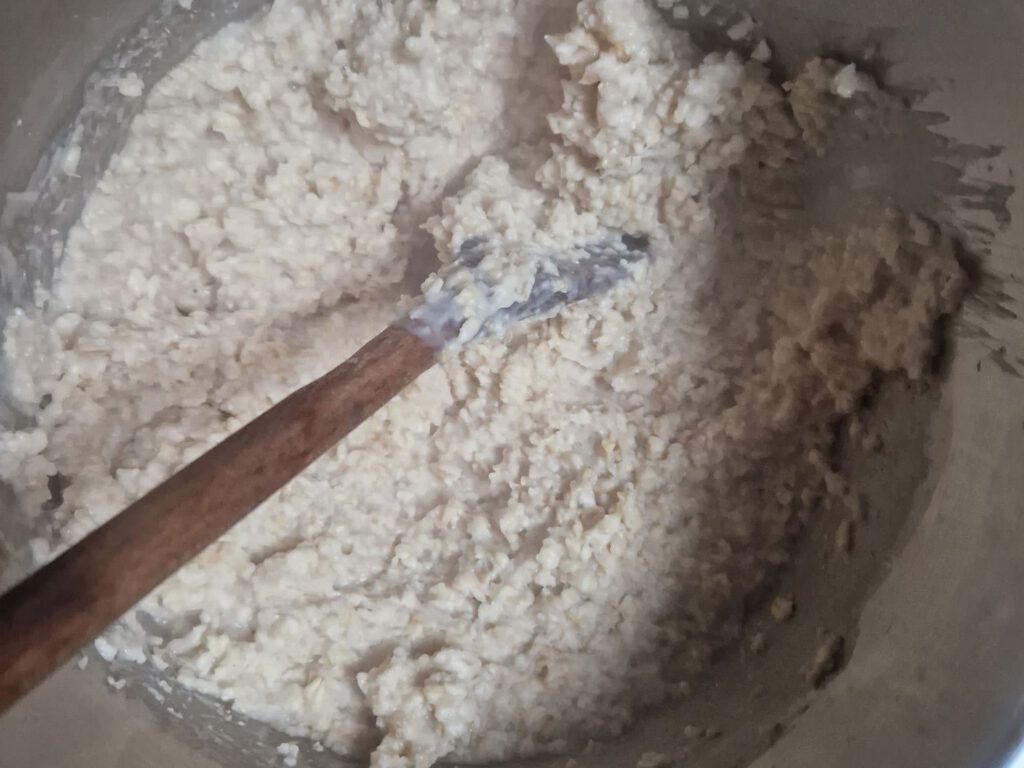
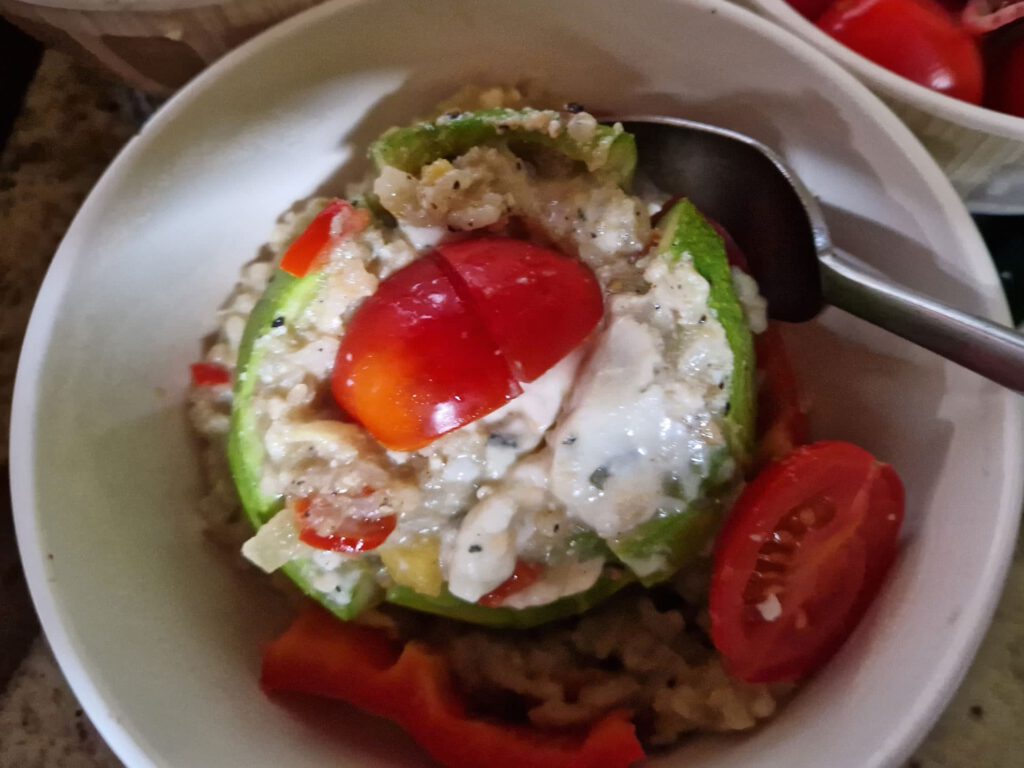
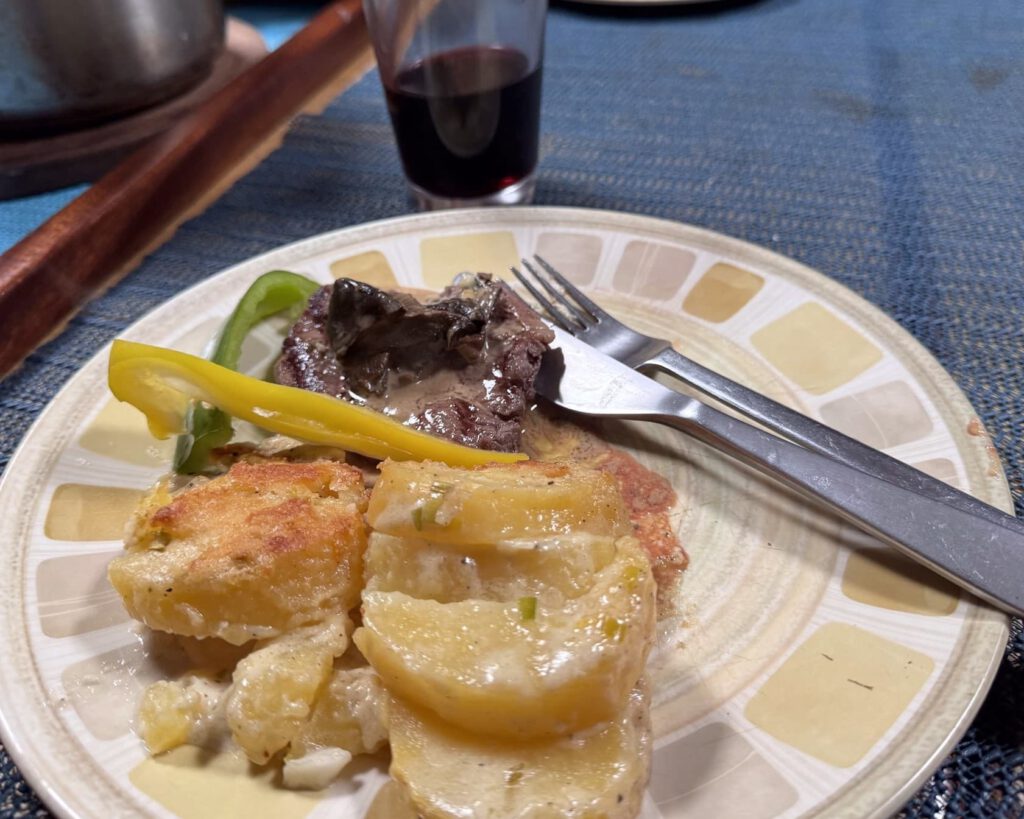
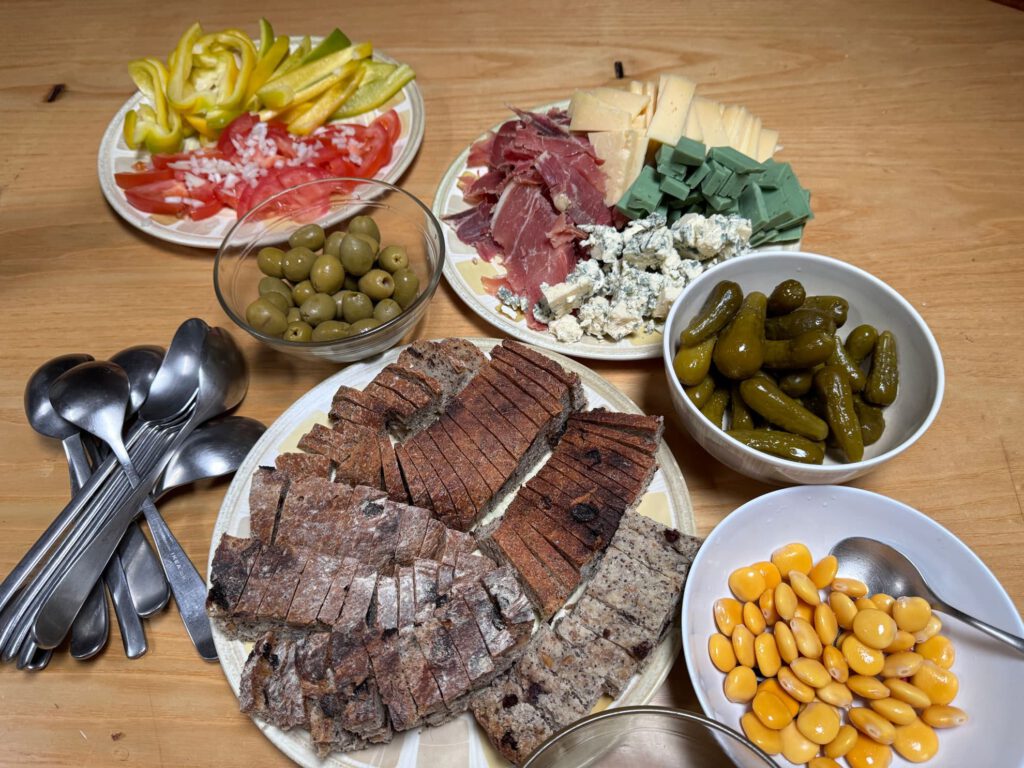
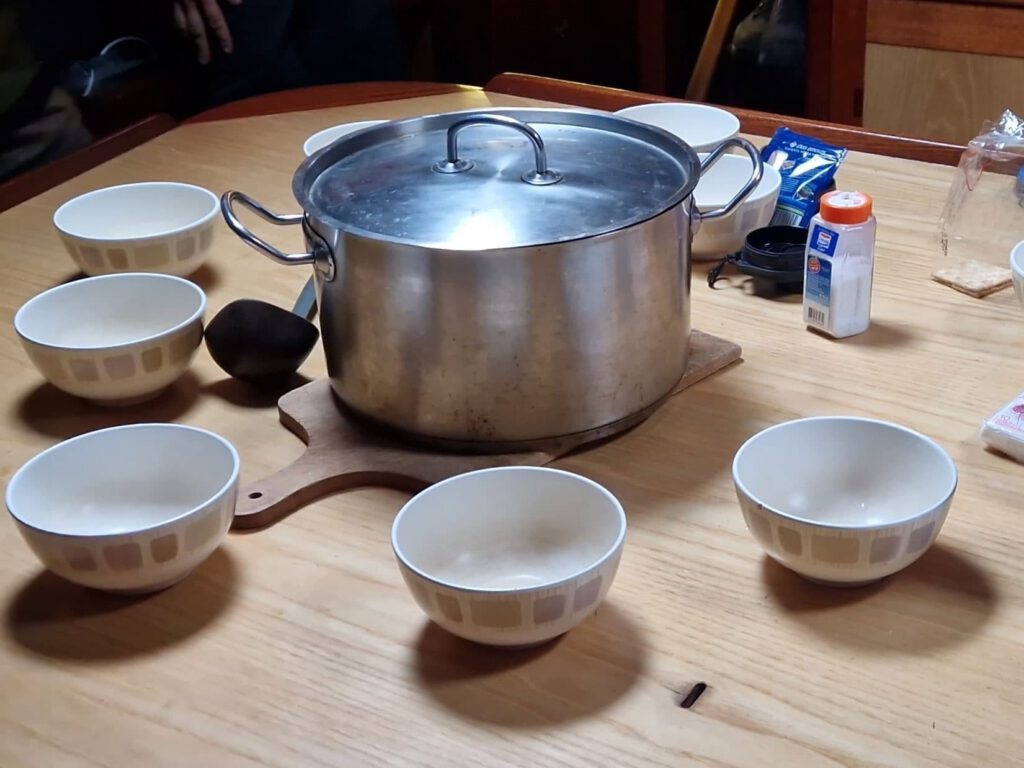
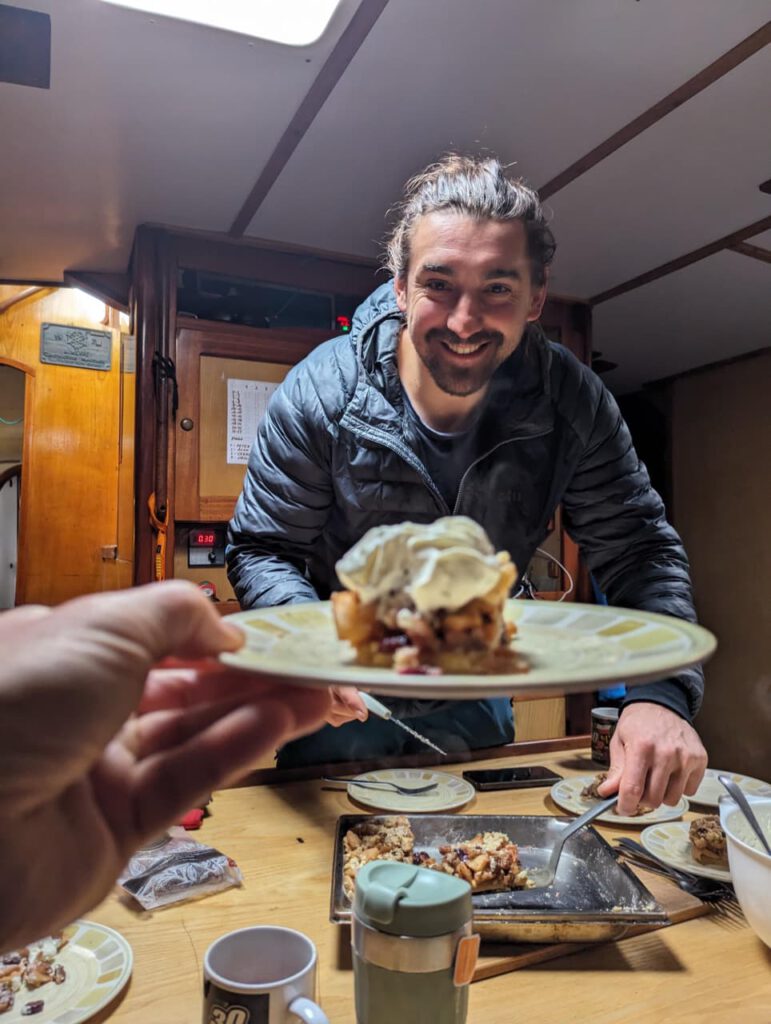
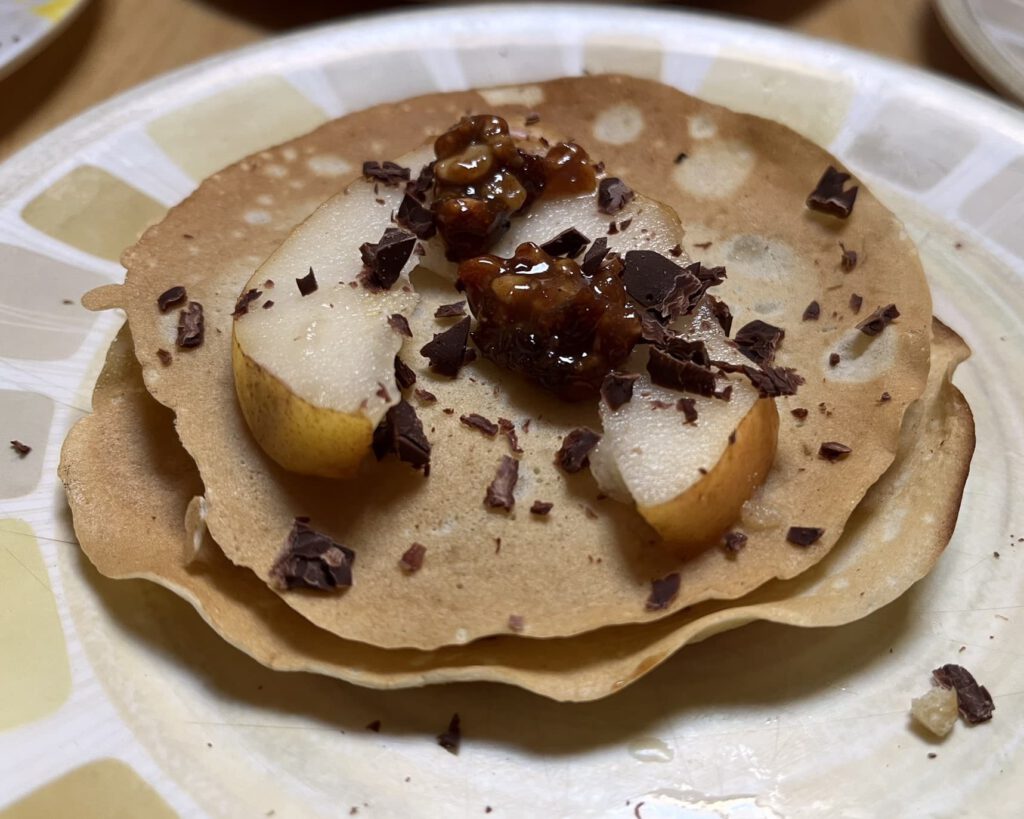
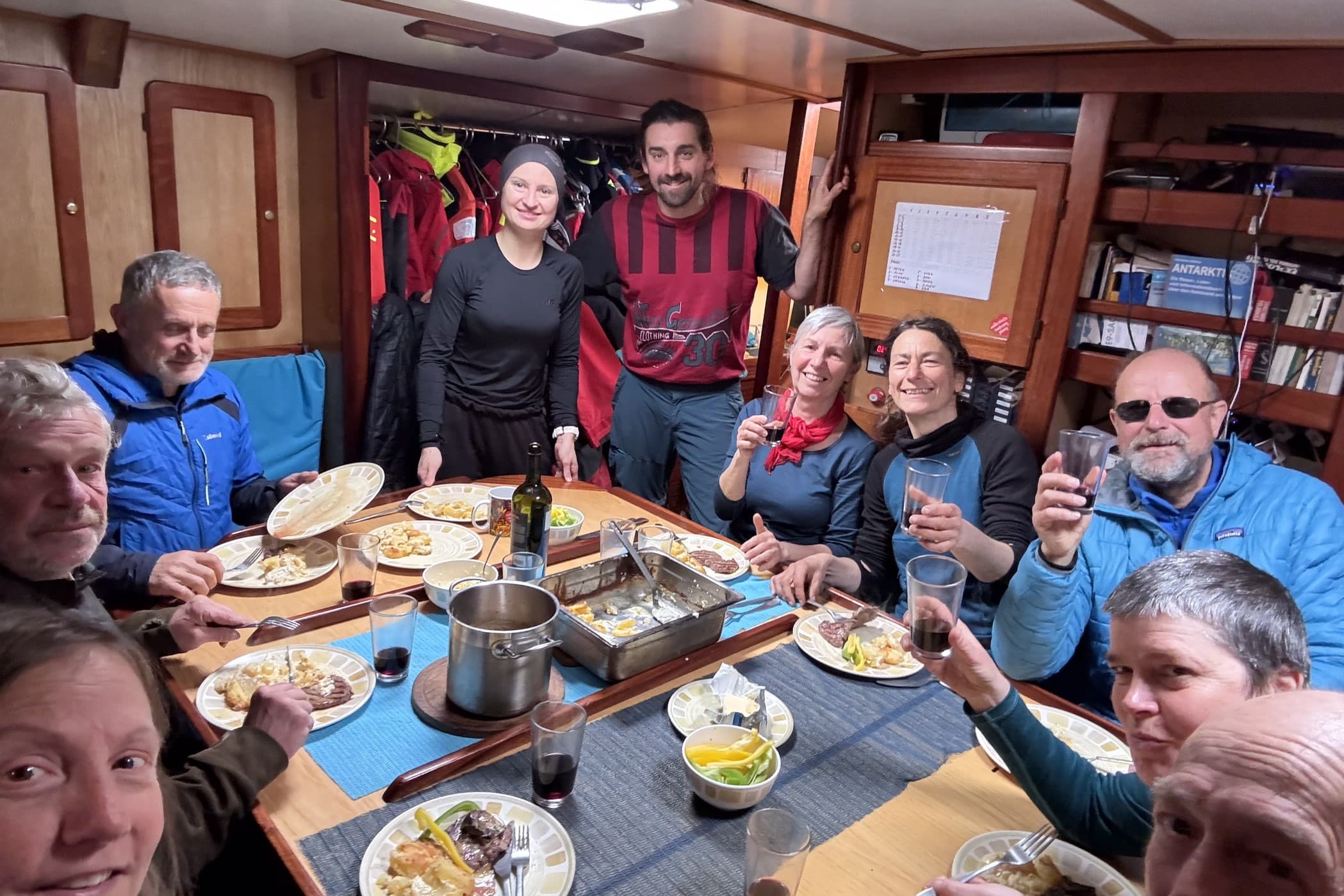
By the way, before the dishes go into the kitchen to be washed, they are pre-rinsed – a tradition on board. This makes it easier for the kitchen team and also saves water and washing-up liquid.
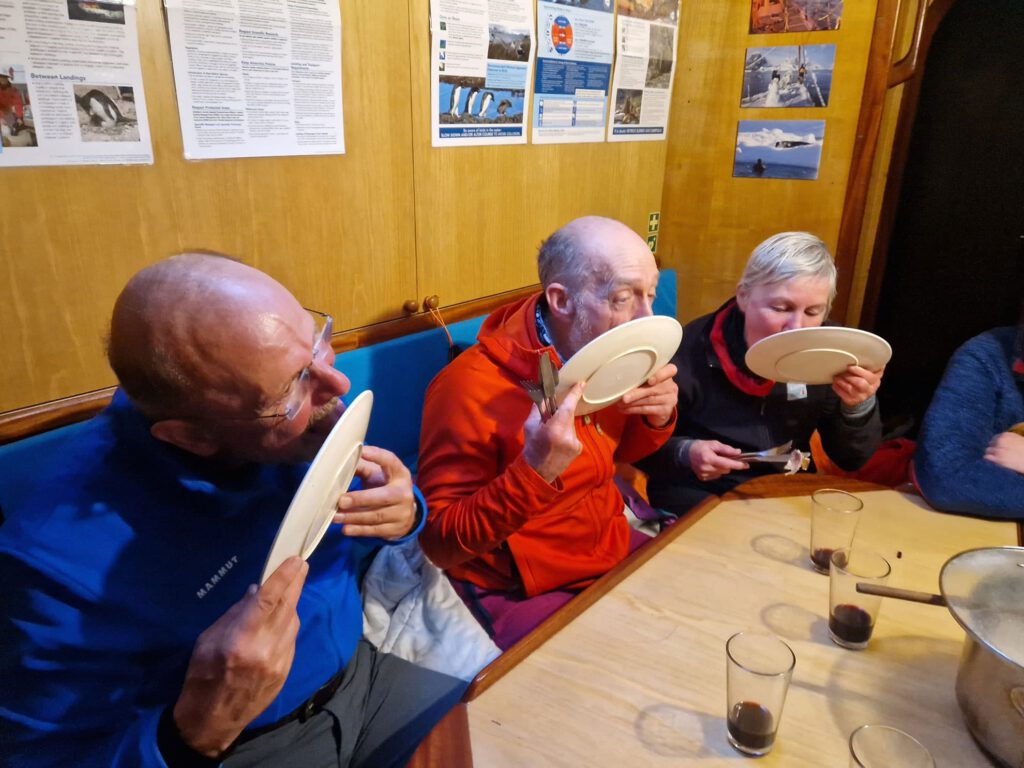
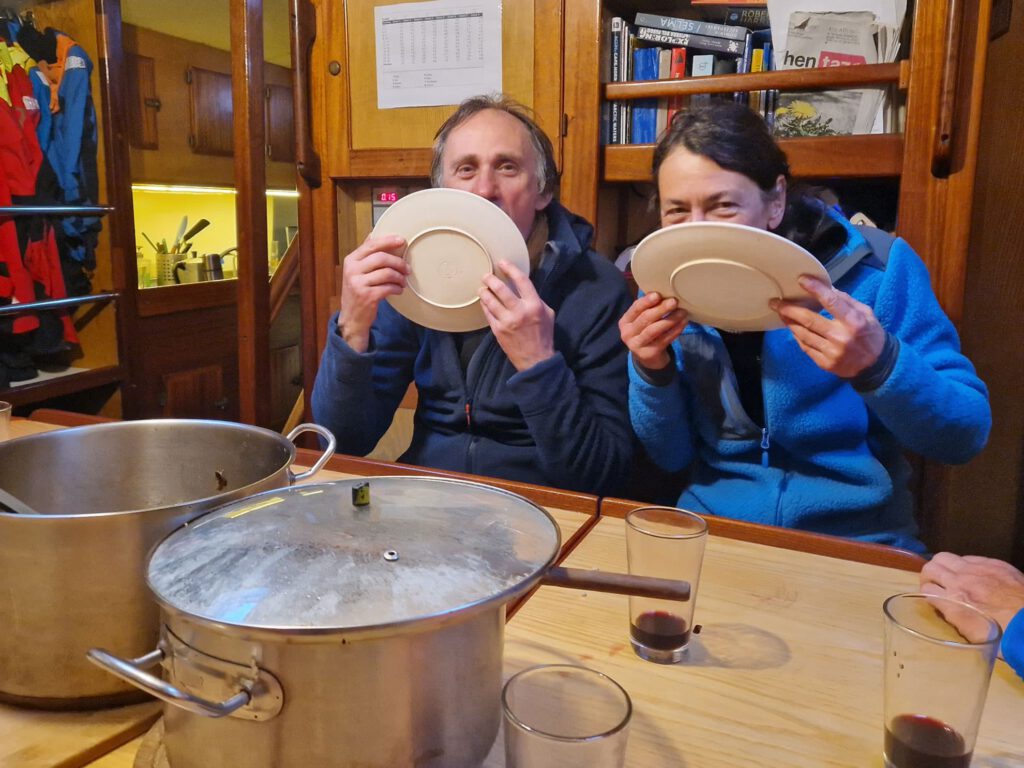
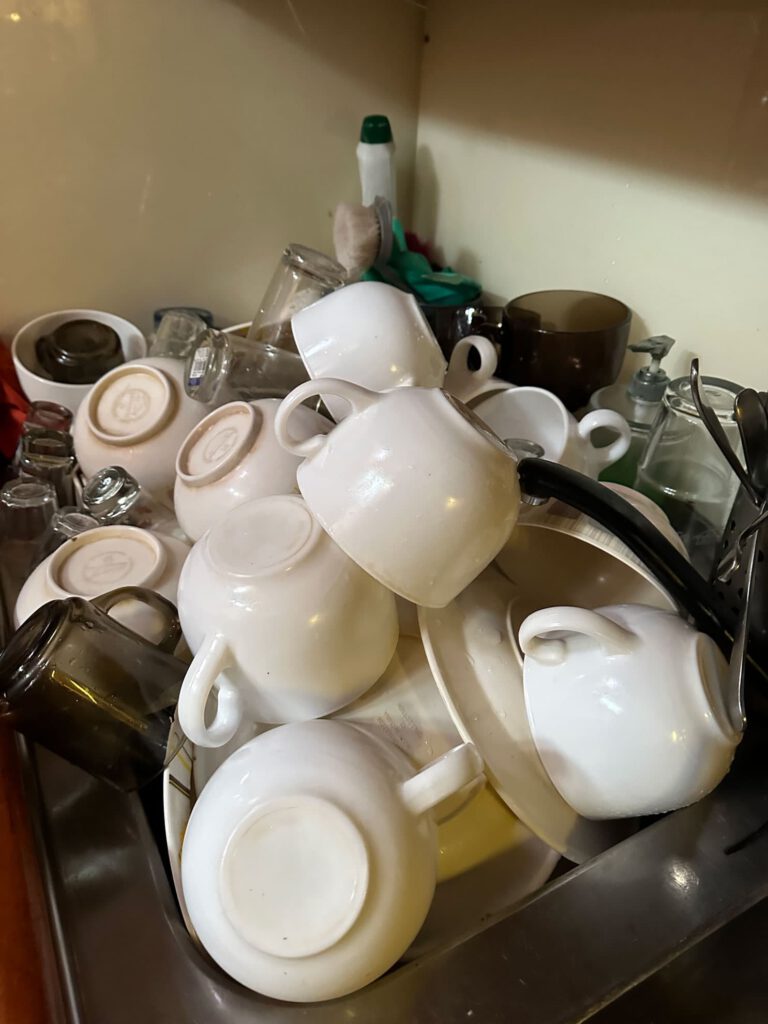
Mr. Perkins and the rear cabins
In the center of the Selma is the engine compartment, between the galley and cabins 3 and 5.
Piotr is not only the skipper, but also the machinist and spends some time there every now and then to see if Mr. Perkins is doing well or to make sure that he has everything he needs and that everything is running smoothly.
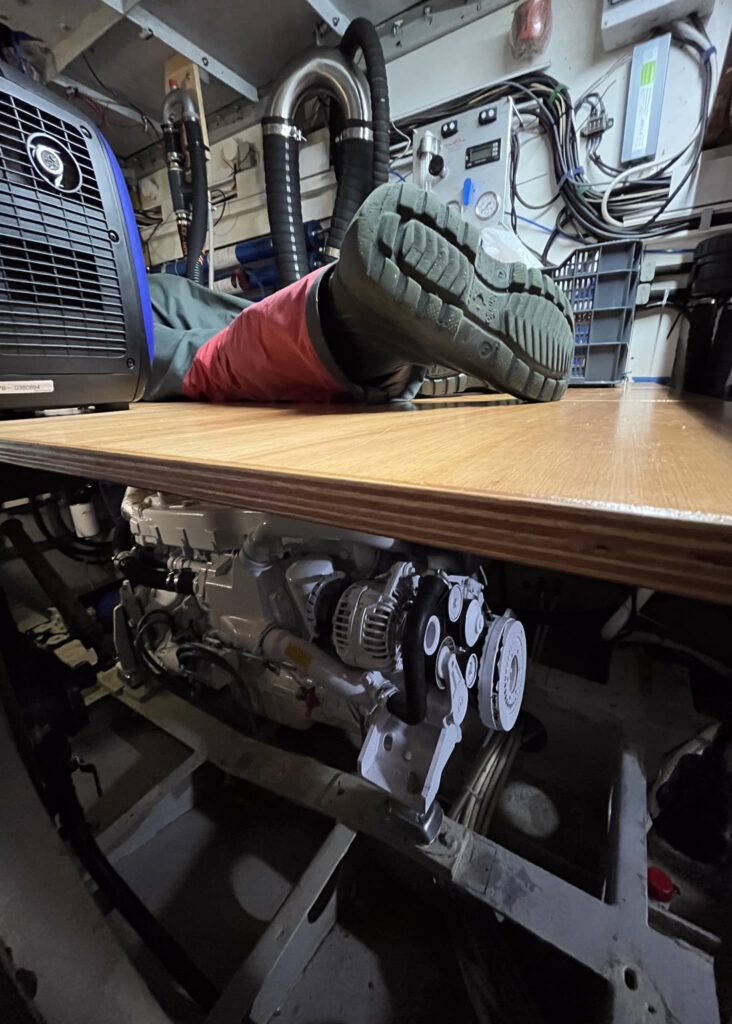
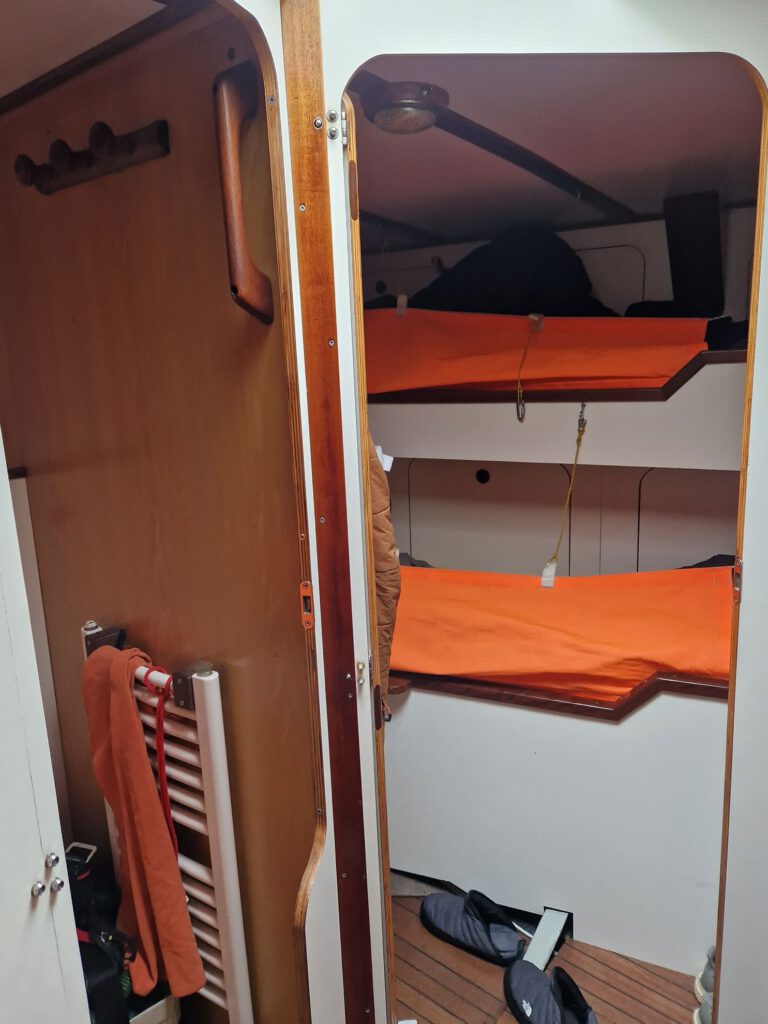
The two aft cabins No. 5 and No. 6 are occupied by Gerhard and Jan, as well as the co-skipper couple Ewa and Wojtek.
Cabin no. 7 serves as a pantry and can also be used as a guest bunk.
Ivan, a scientist and biologist from the Ukrainian research station Vernadsky, accompanied us south to Adelaide Island for a week and moved into his bunk here in No. 7.
The Greenhouse
The heart of the Selma and, together with the saloon, the most used area is the wheelhouse / pilothouse – affectionately christened the Greenhouse by us, as it is the warmest place here on board.
Our skipper Piotr has his bunk here. A perfect place, as he always has all the navigation systems, wind, weather, sails and steering position close at hand and can react immediately if necessary.
The pilothouse is also used as a workplace. This is where the chart table is located, weather models are discussed, routes are planned, logbooks are written and sometimes even spliced …
And right next to the door is the checkroom for wet, soaking and dripping sailing jackets.
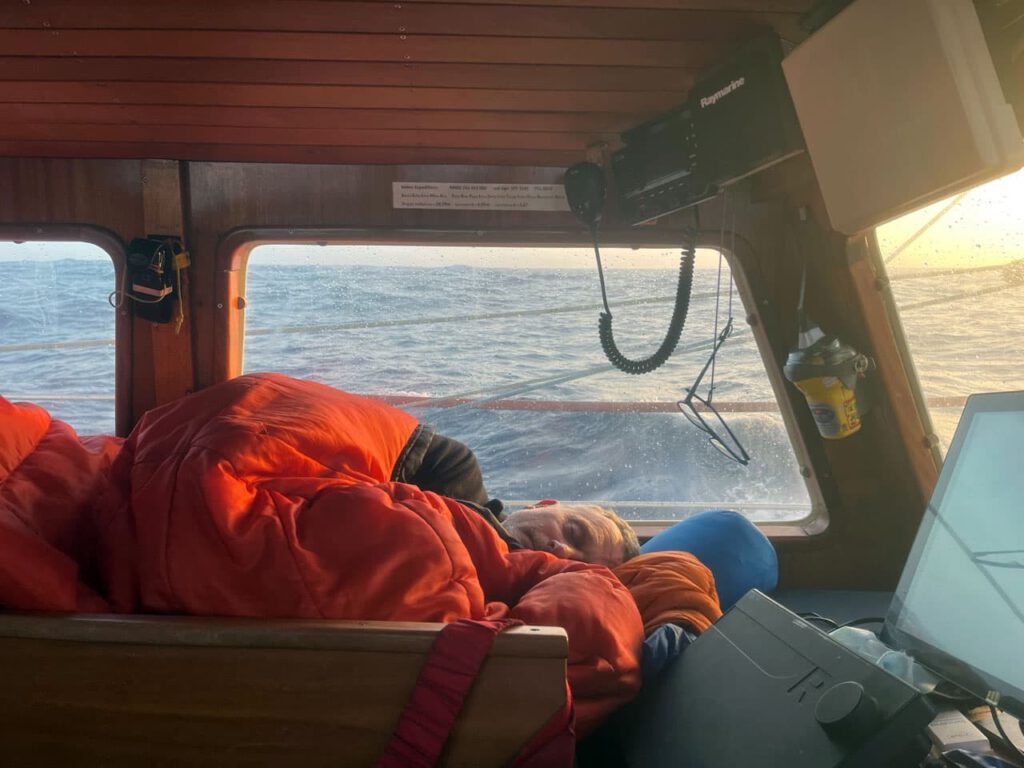
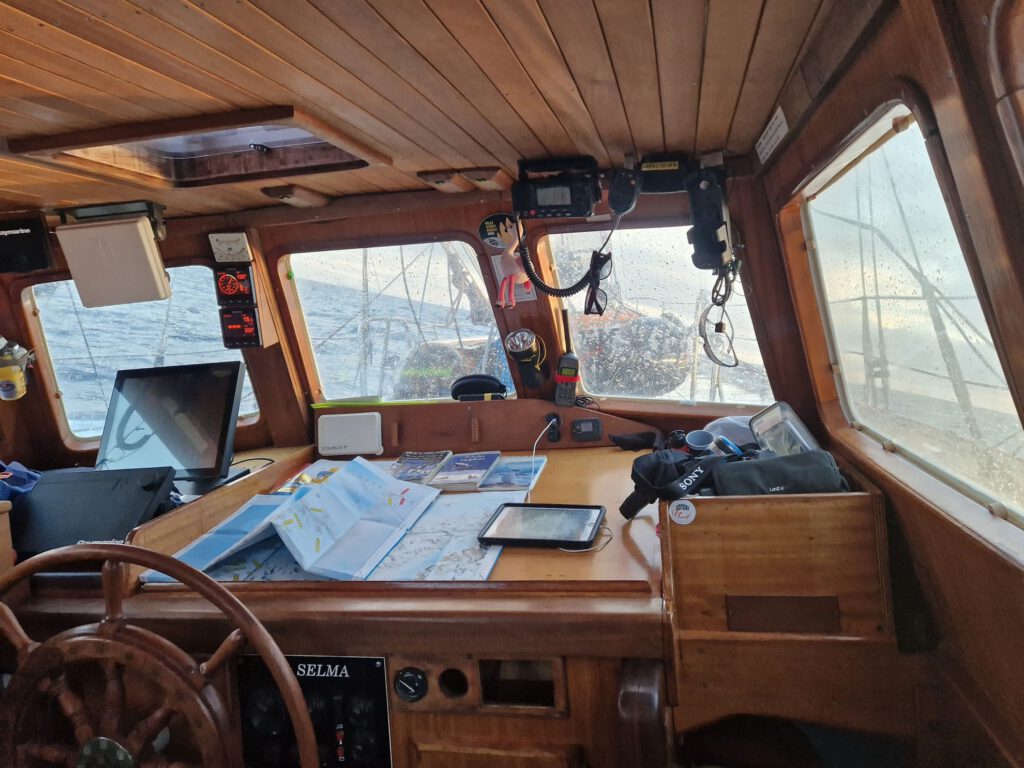
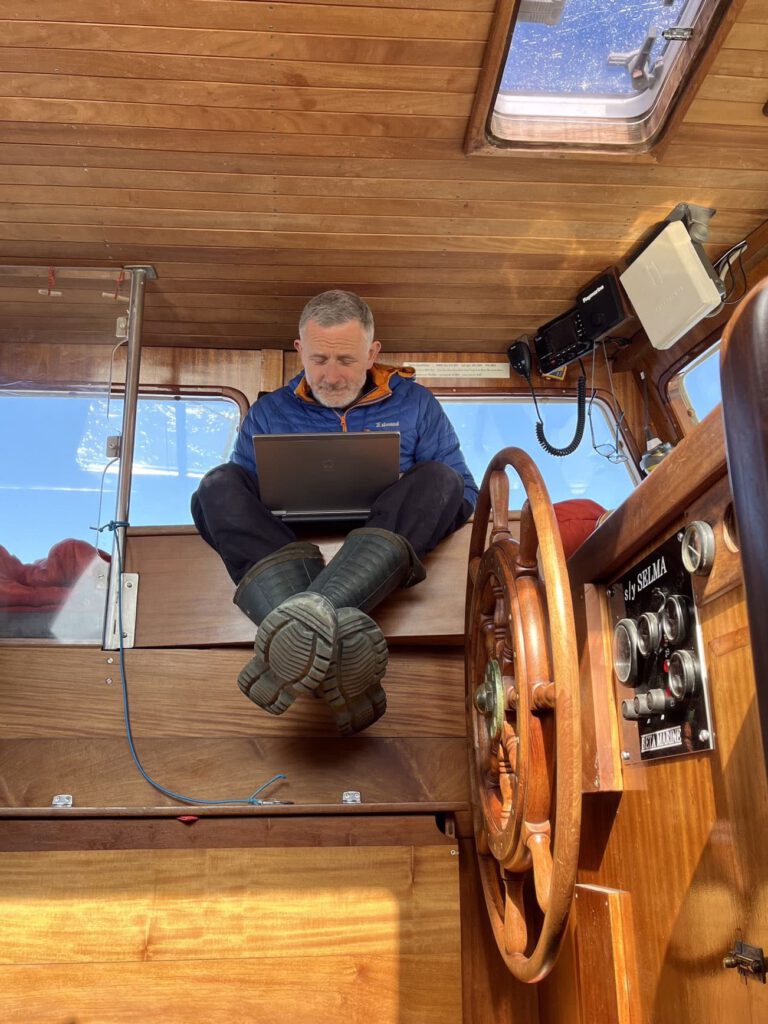
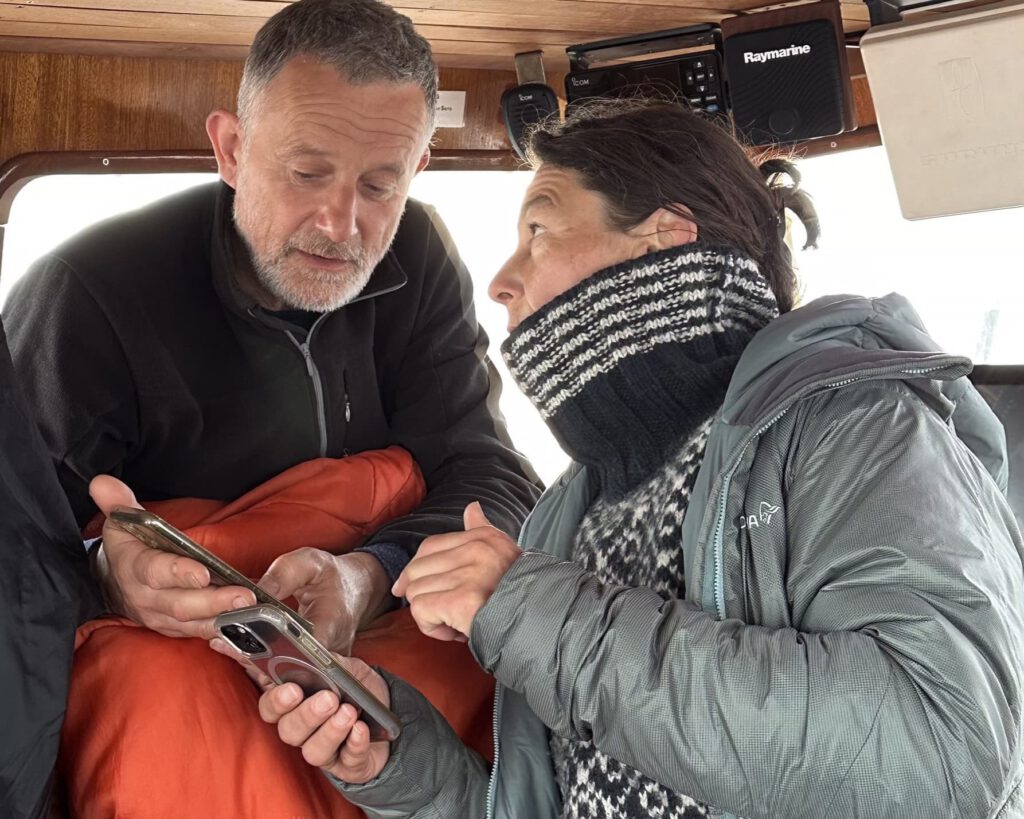
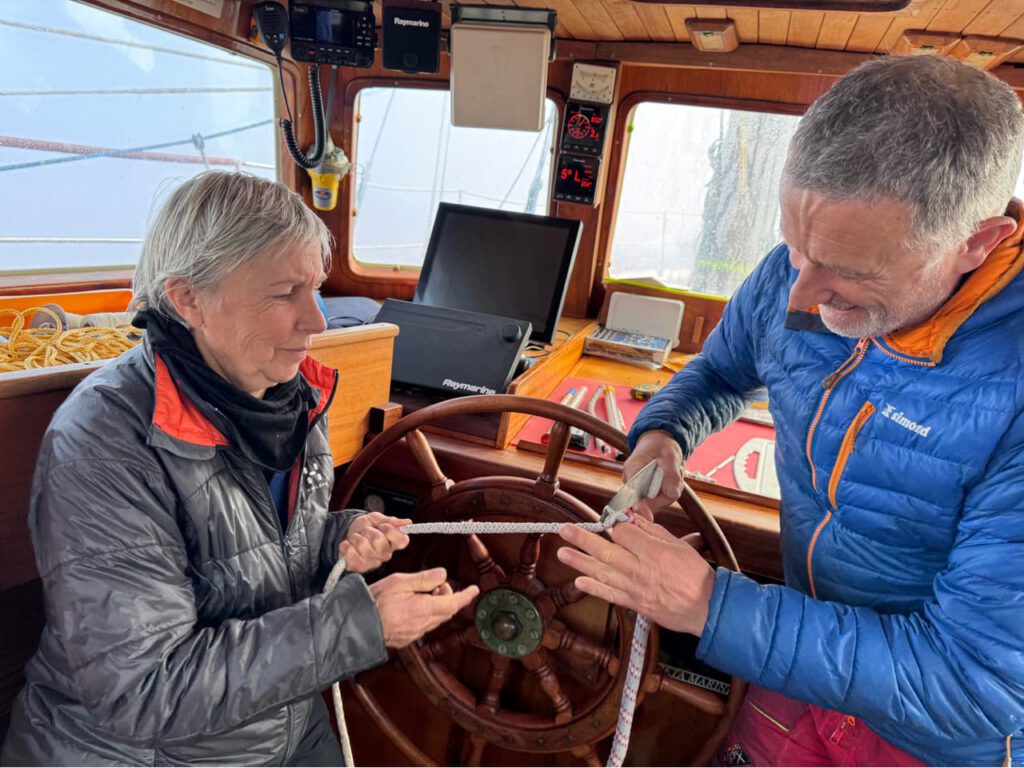
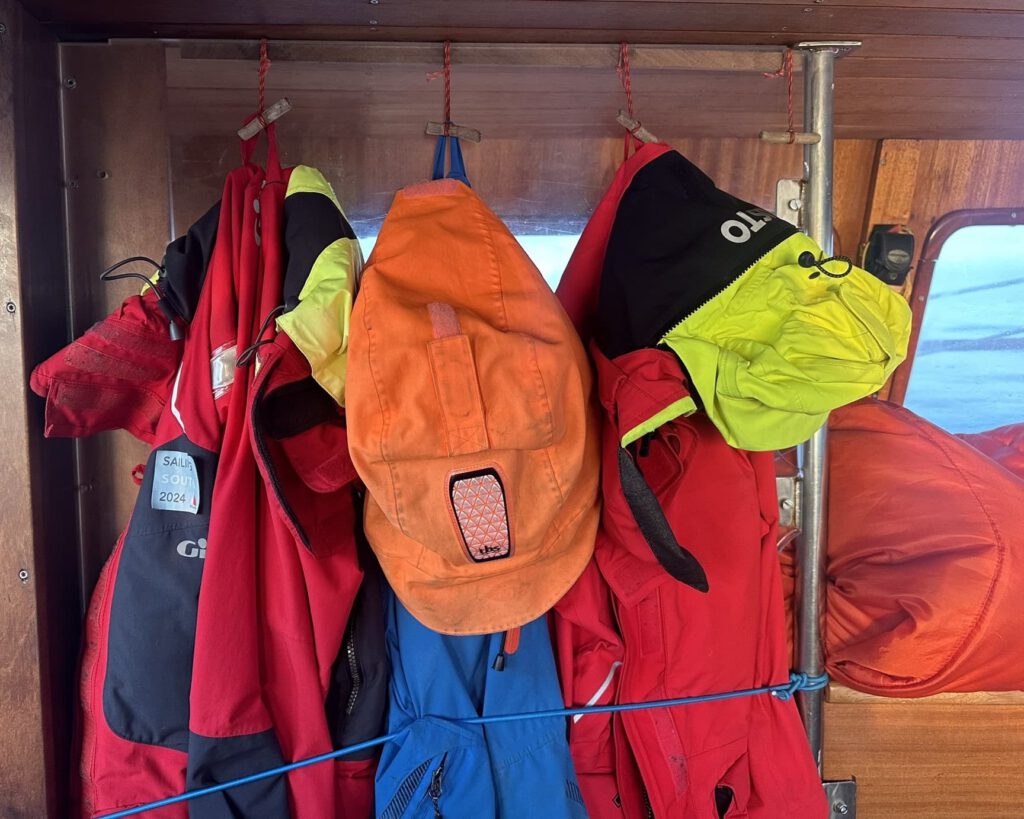
Our feel-good corner in the Greenhouse (directly on top of the lockers with the life jackets) is used in many ways and is very popular. It offers a wonderful all-round view to the outside, it is cozy, warm and dry.
By the way: the temperature shown online next to our ship’s position is not the outside temperature – in case anyone was wondering about the high temperatures – but the temperature in the pilothouse.
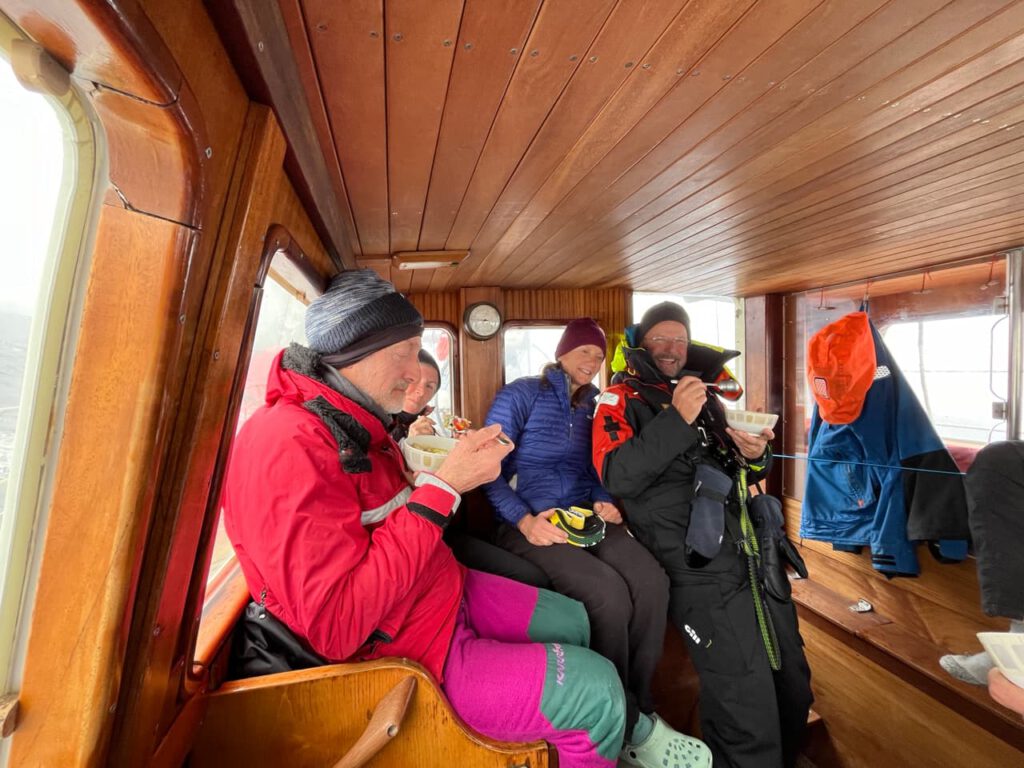
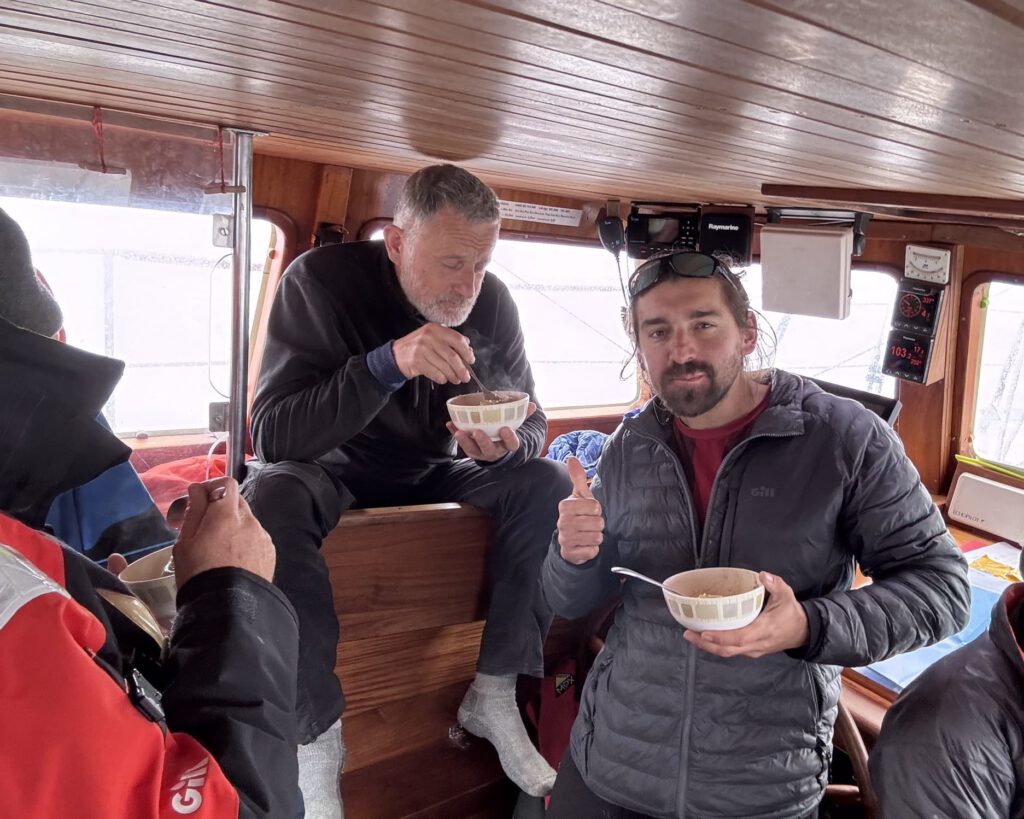
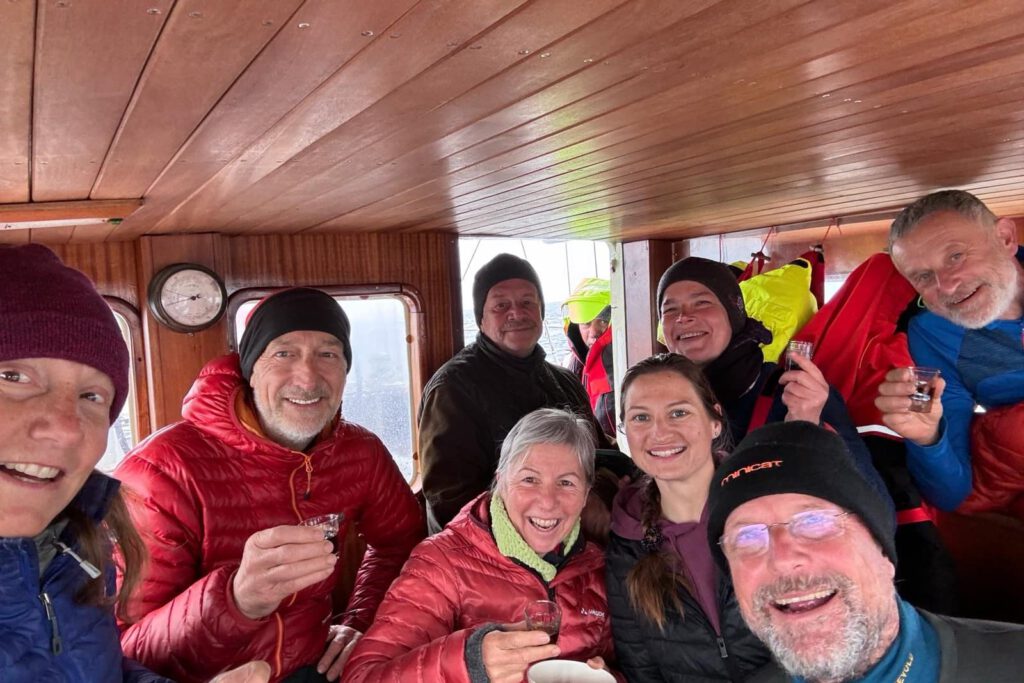
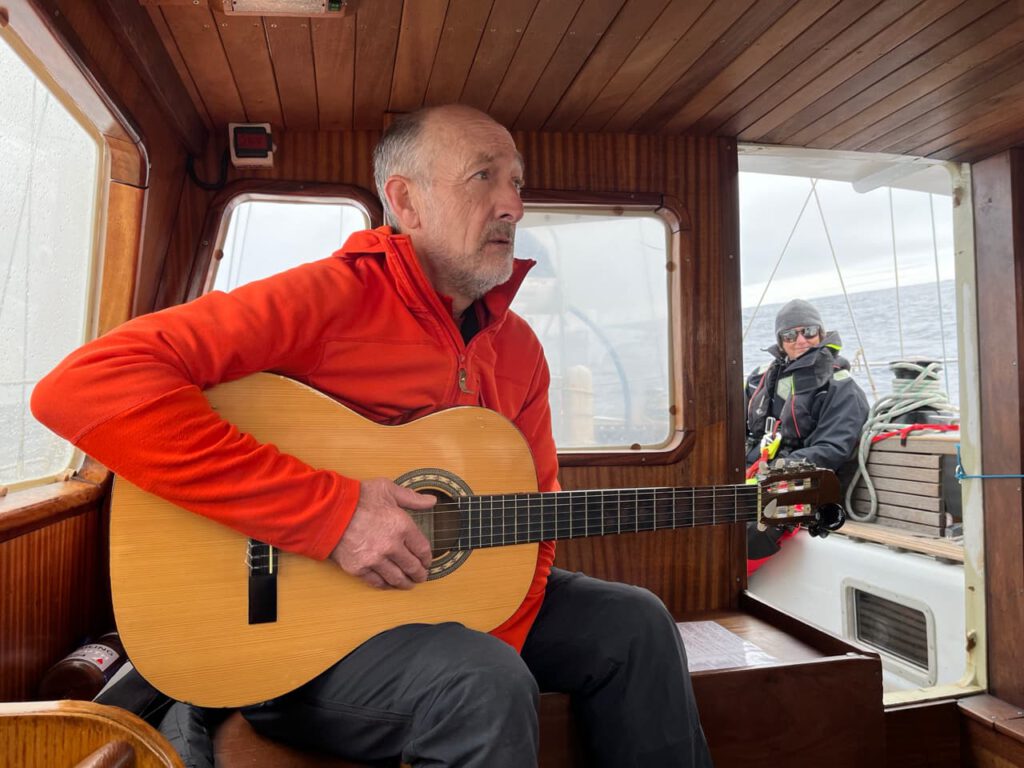
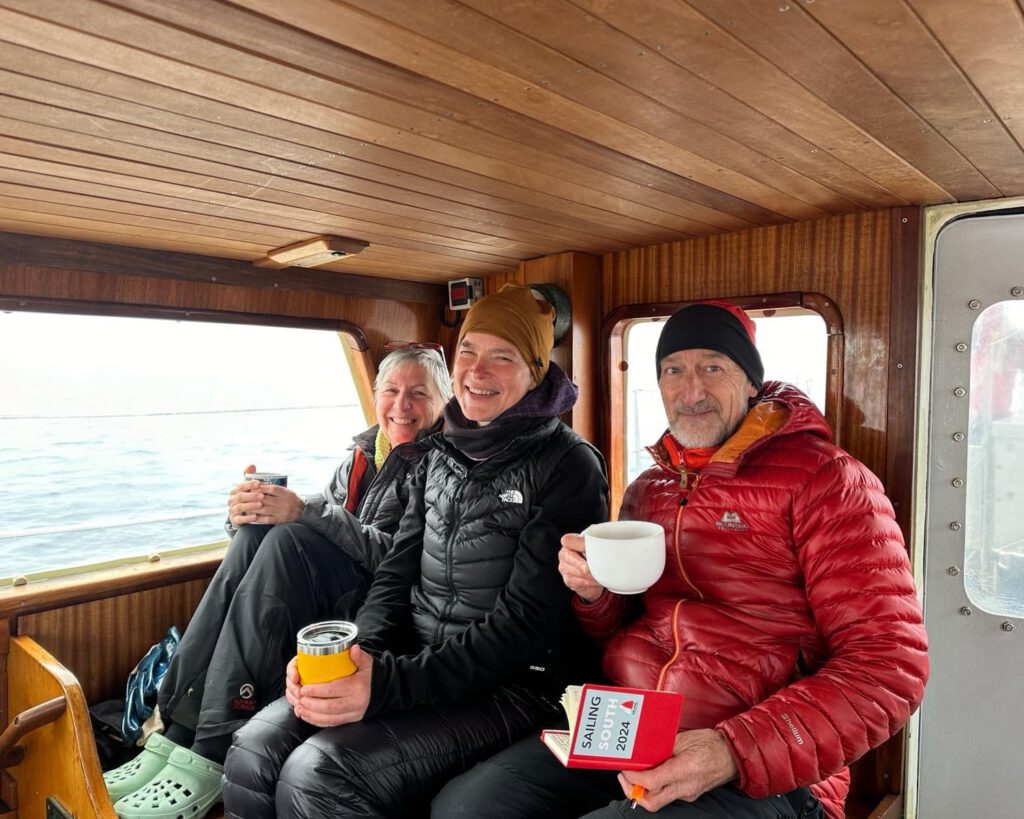
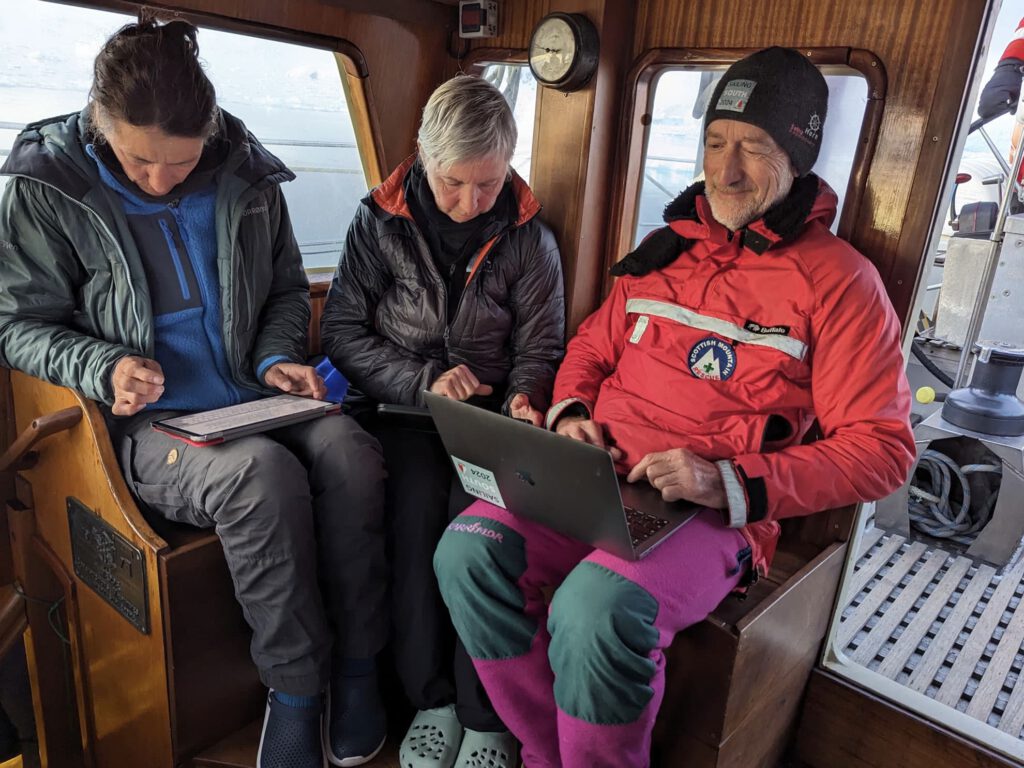
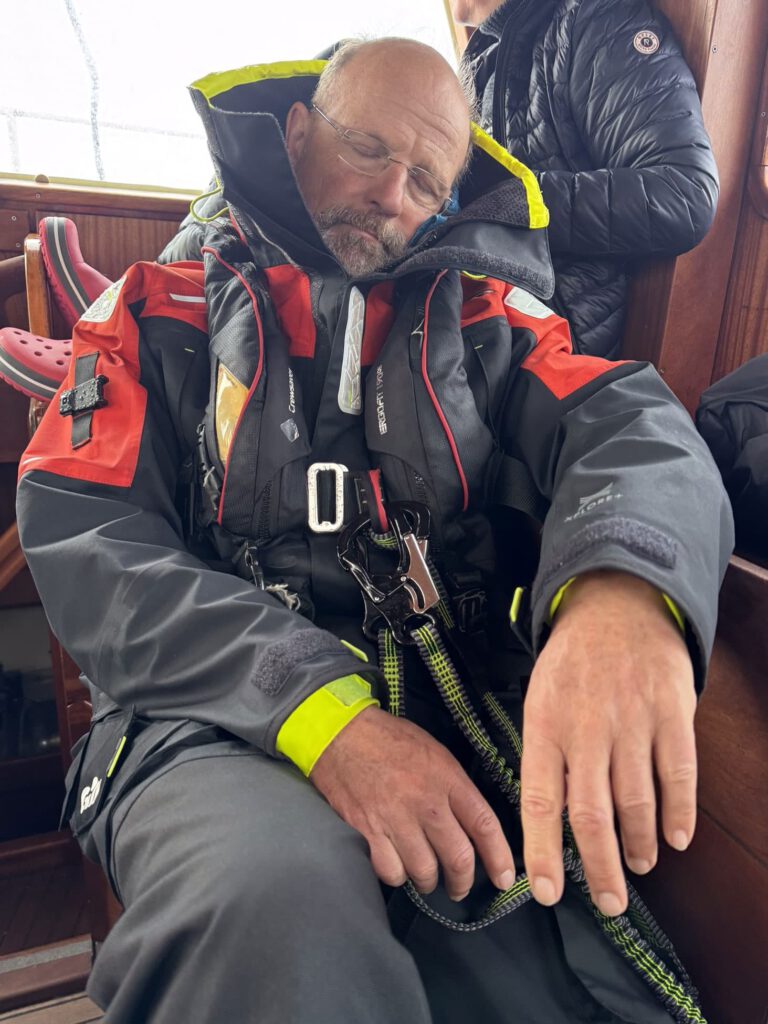
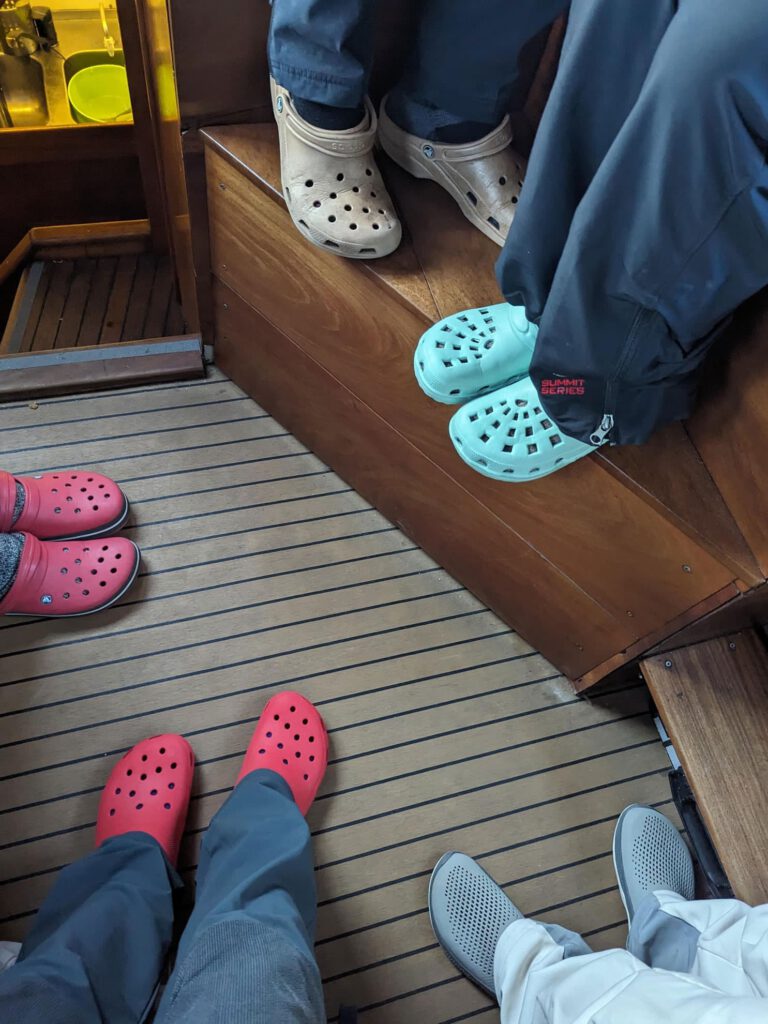
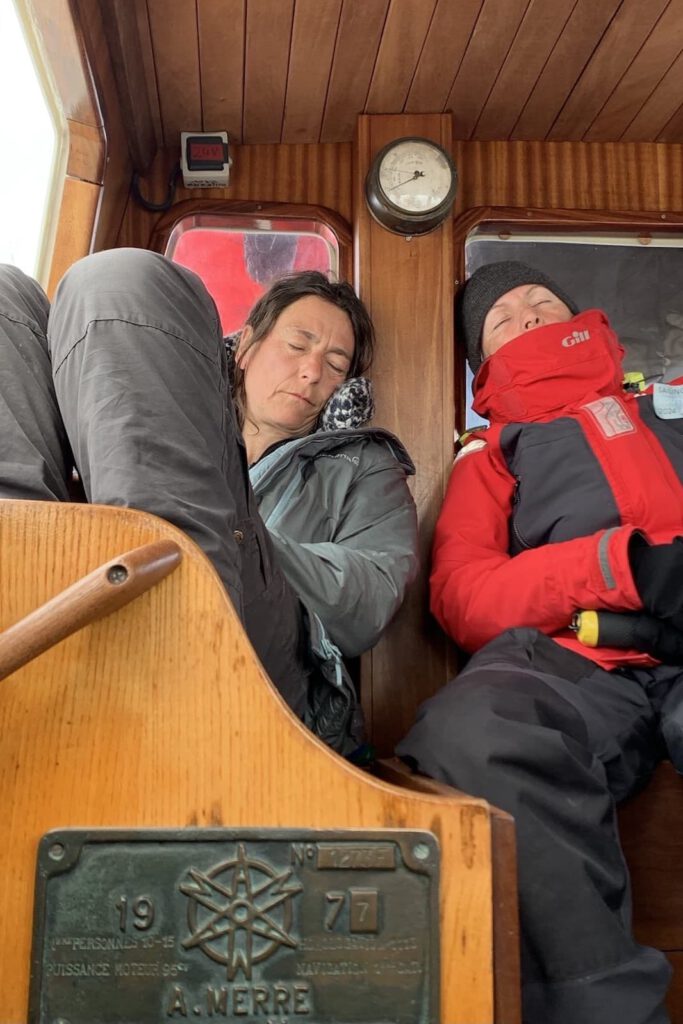
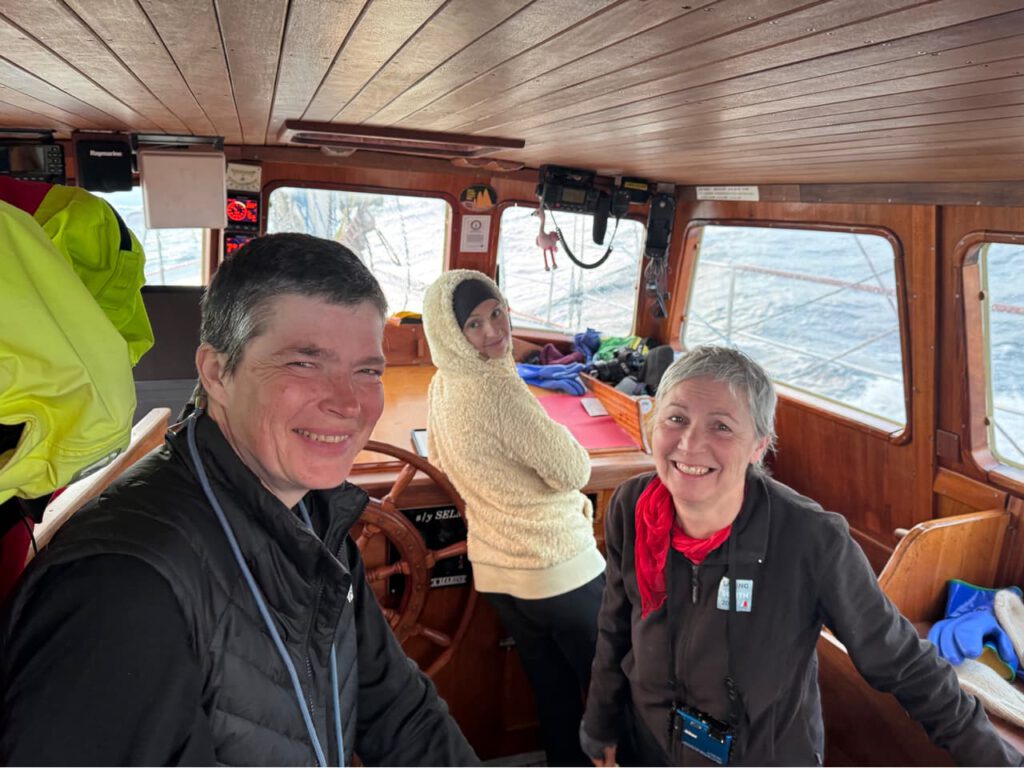
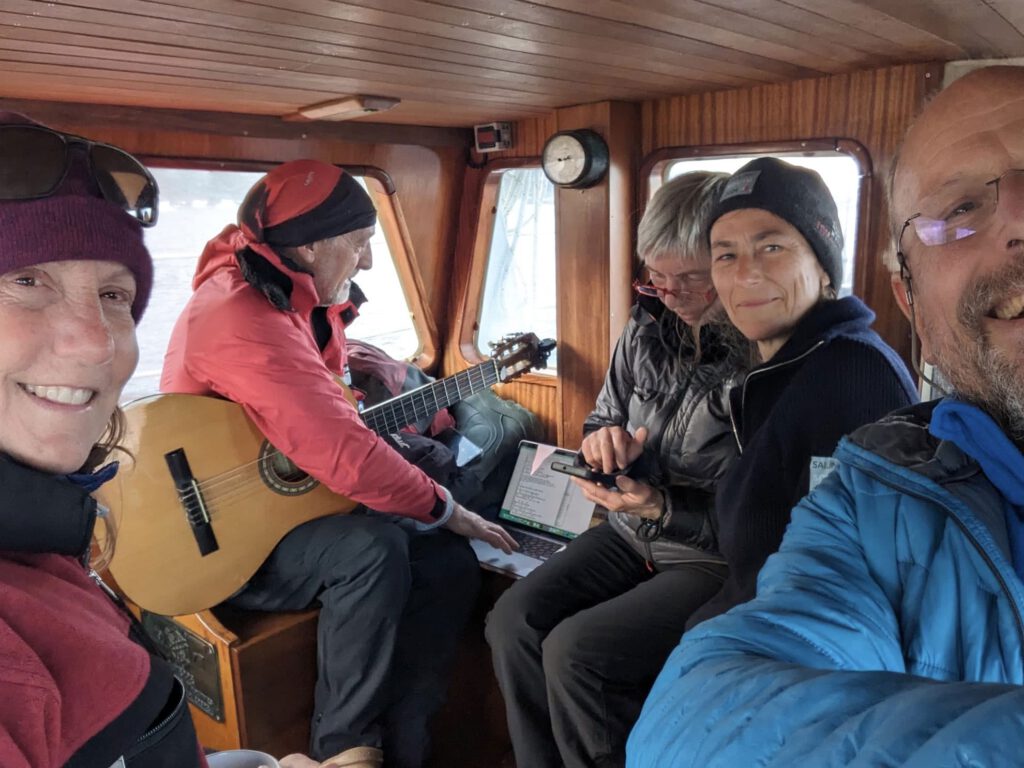
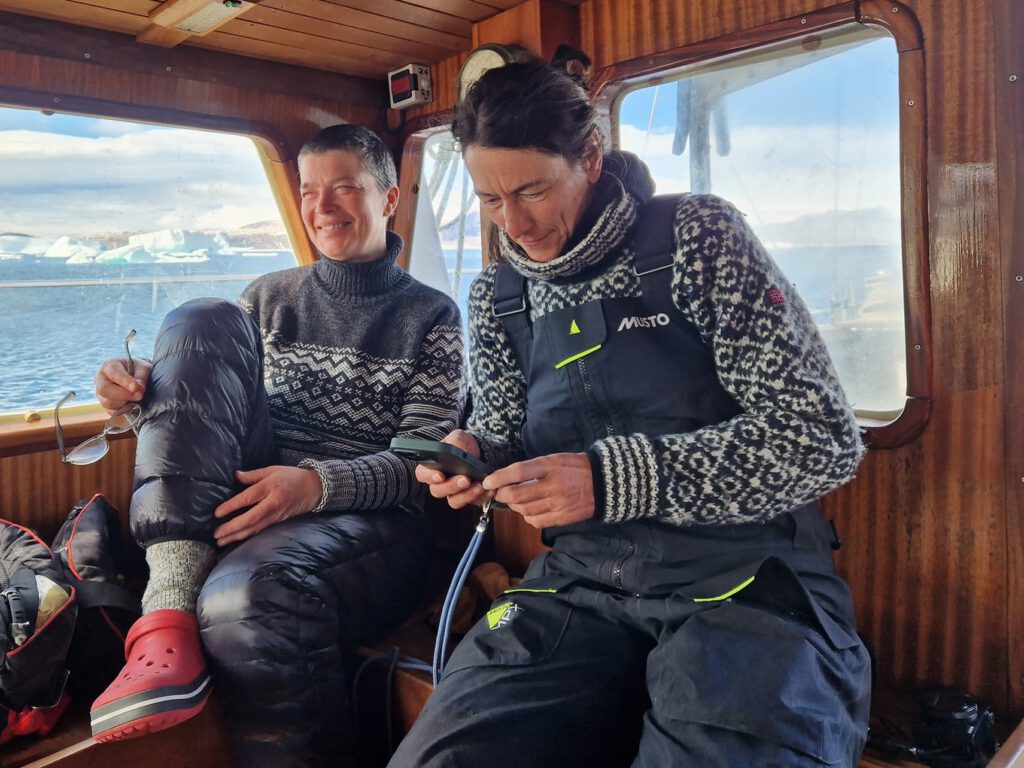
The terrace and outside area
The helmsman’s station is of course located on deck.
This is where the sails are set and maneuvers are made. The dinghy is usually fixed in front of the main mast, and the kayaks also had their place here on the starboard side at times. In front of the bow is the ice guard, equipped with the ice stick: a long pole to push aside drifting growlers and floes, prevent collisions and clear the way through the ice for the Selma. And high up in the mizzen mast is also the place for the lookout to spy a path through fields of drifting ice.
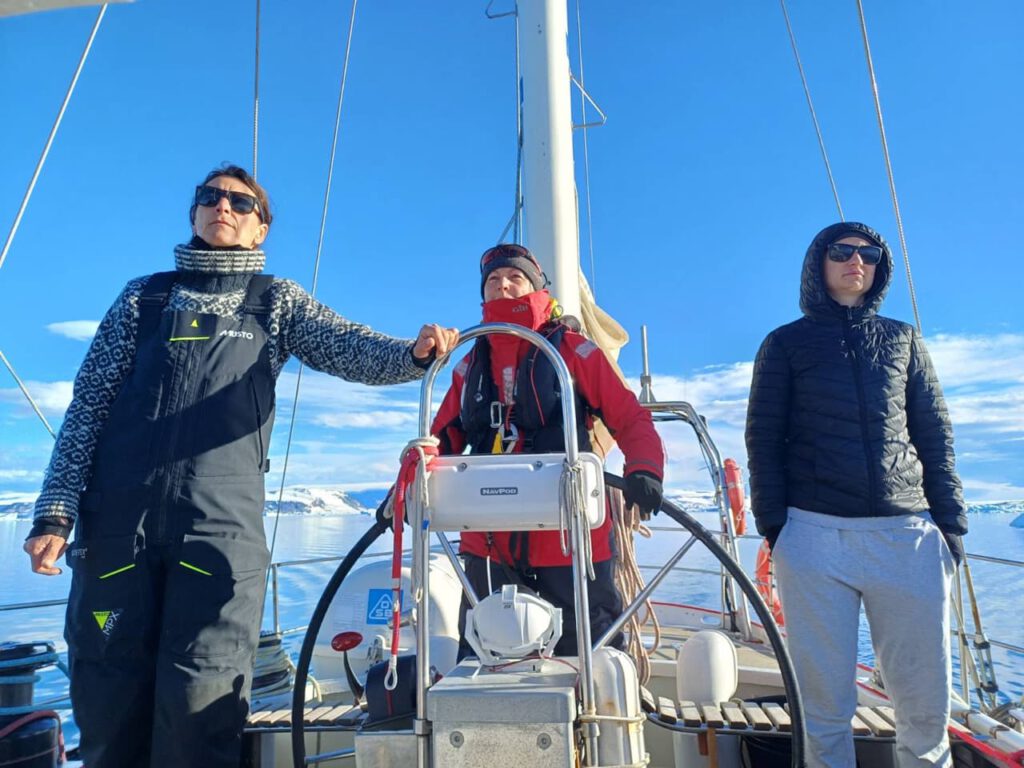
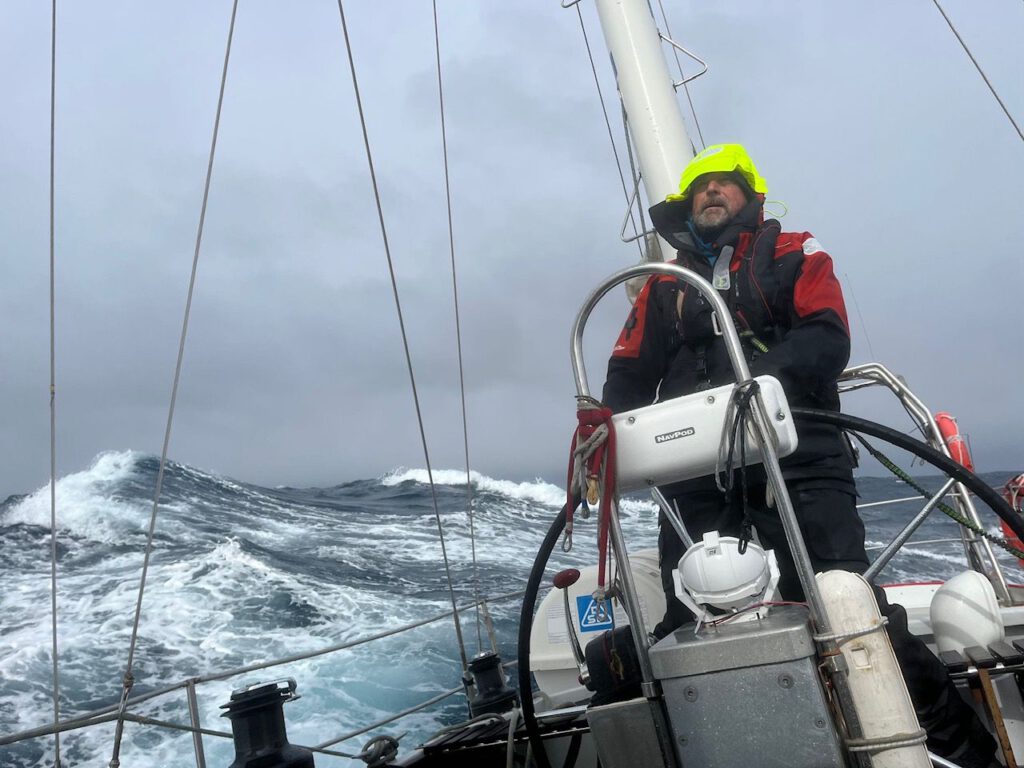
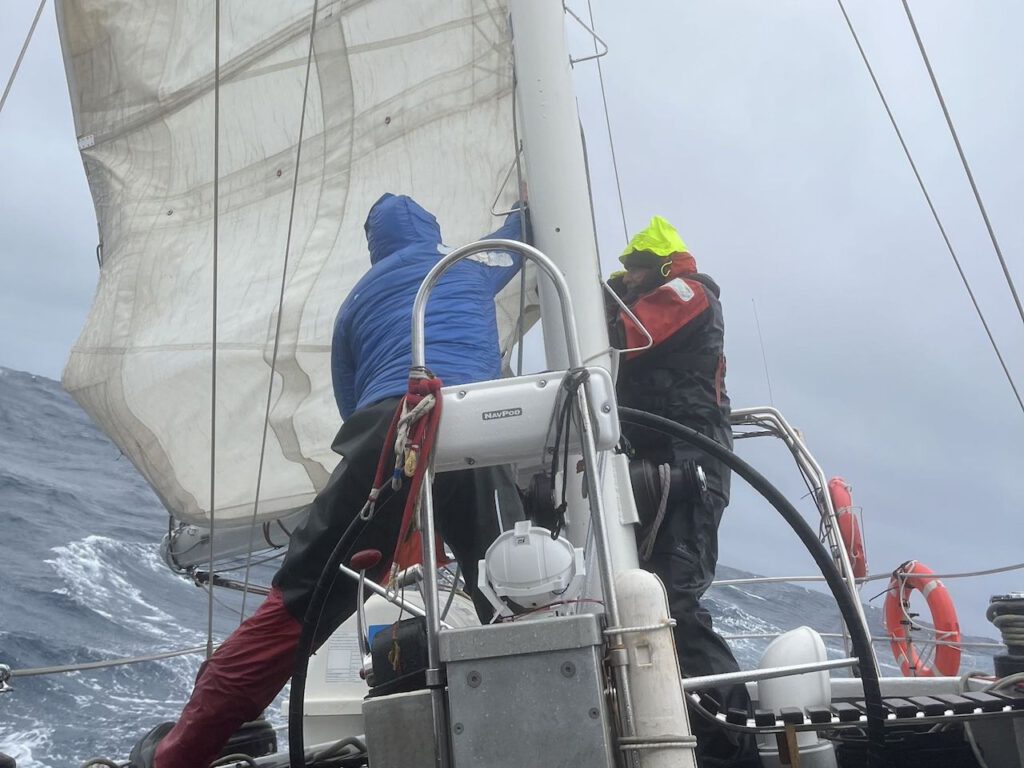
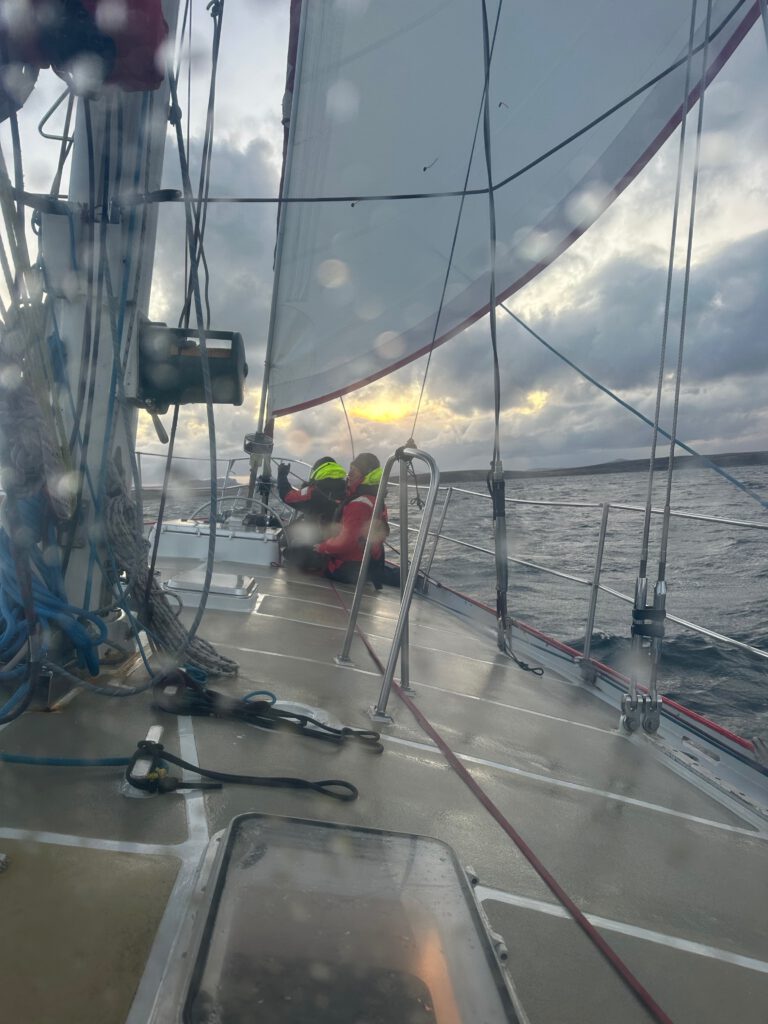

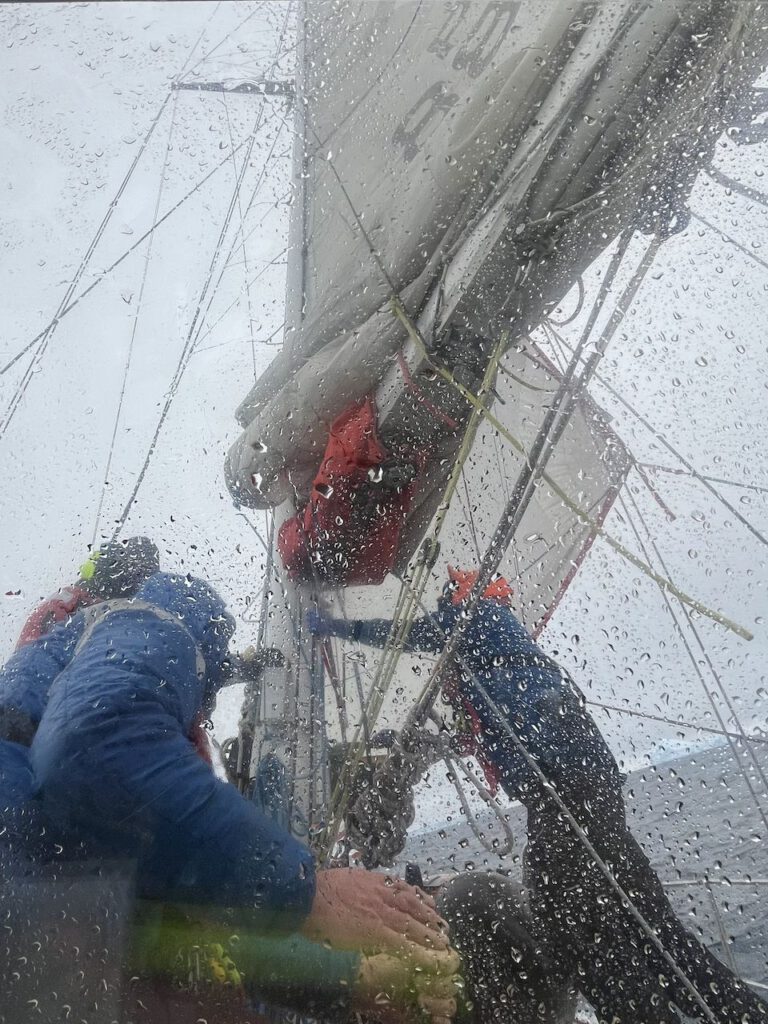
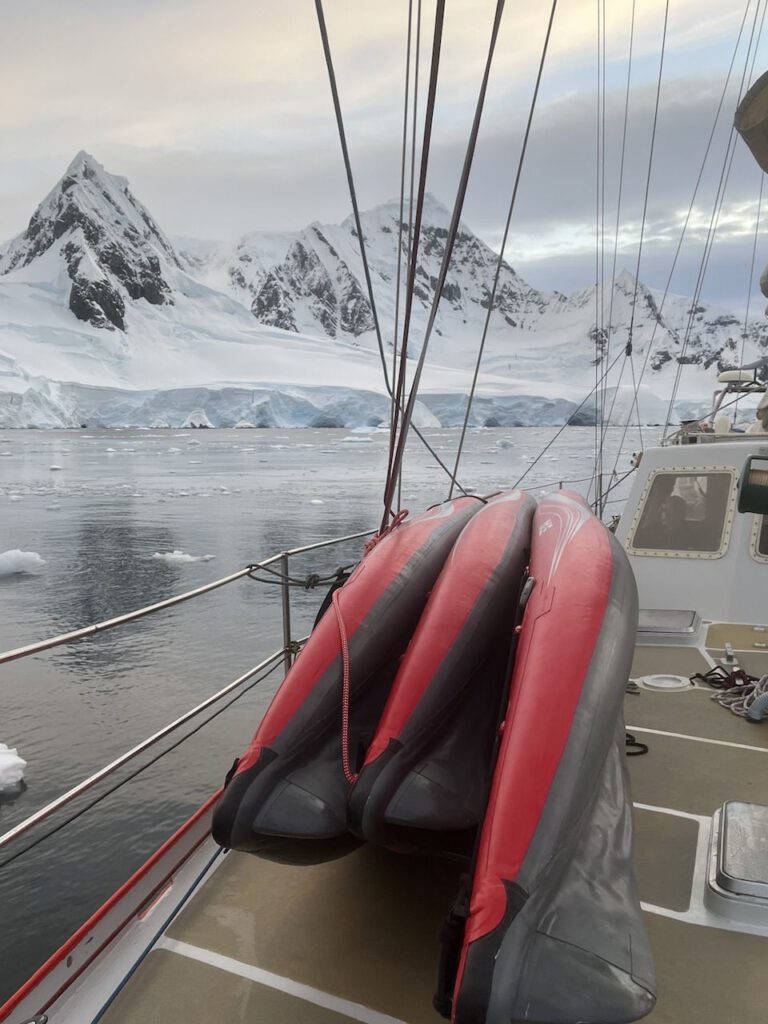
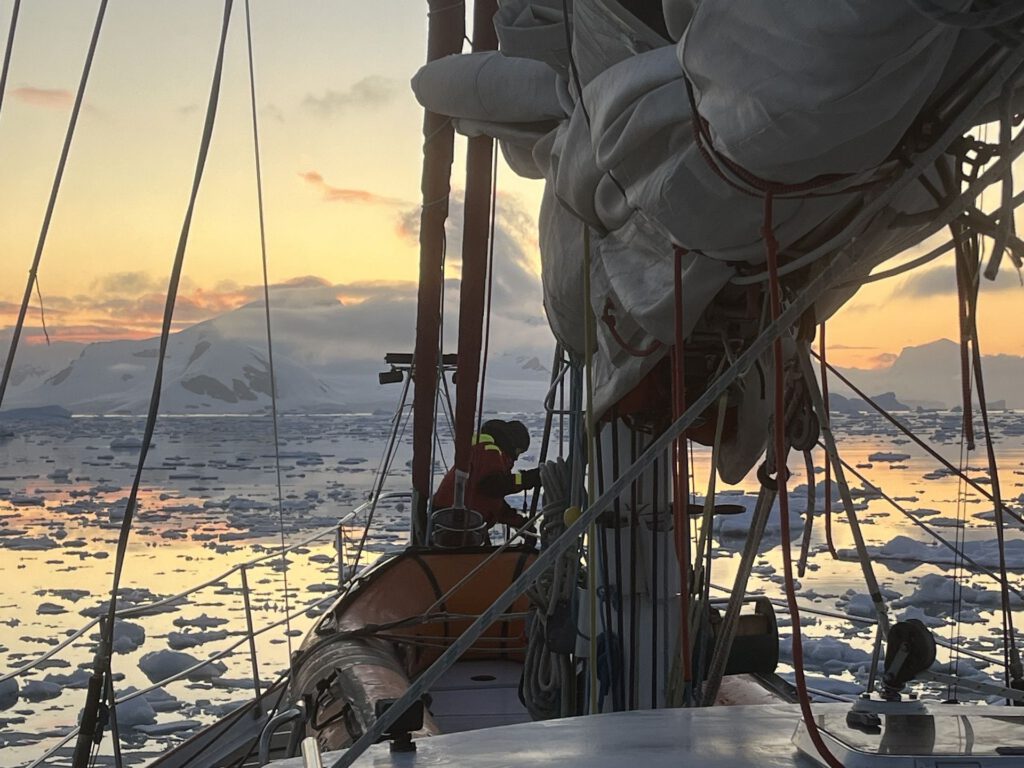
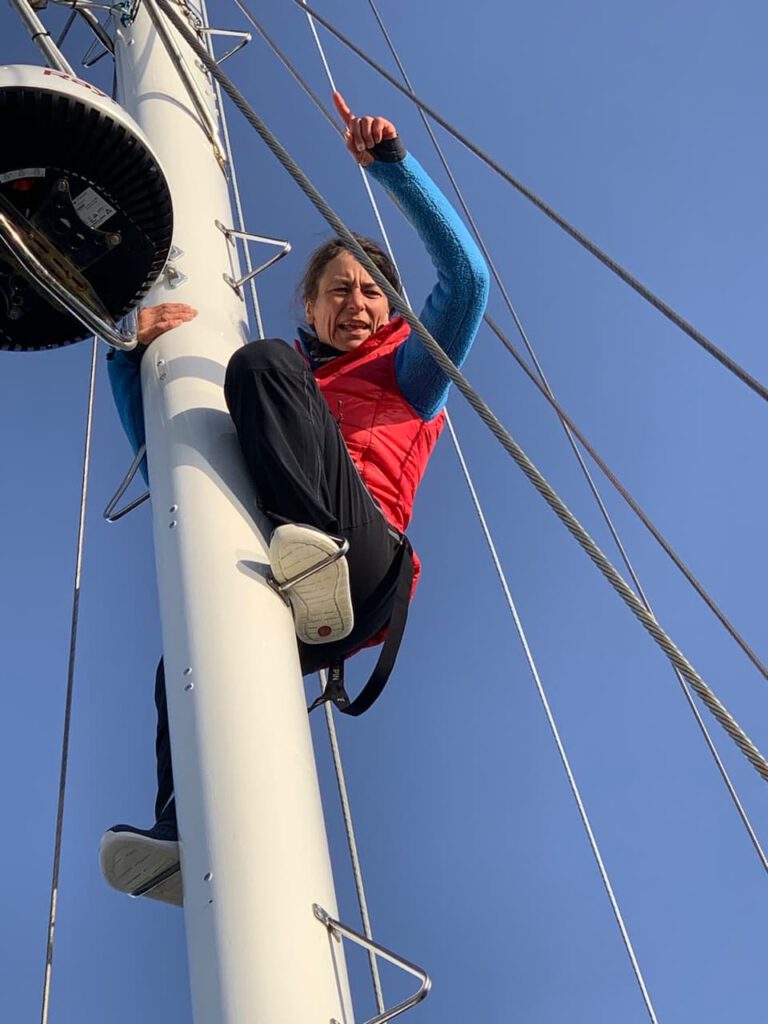
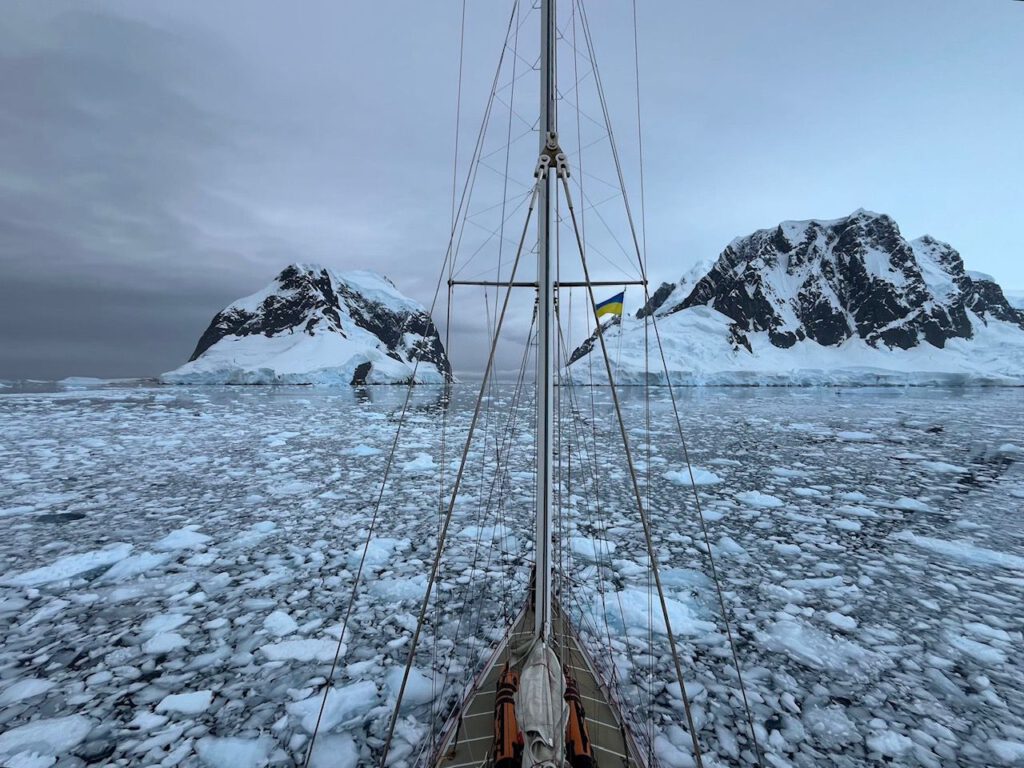
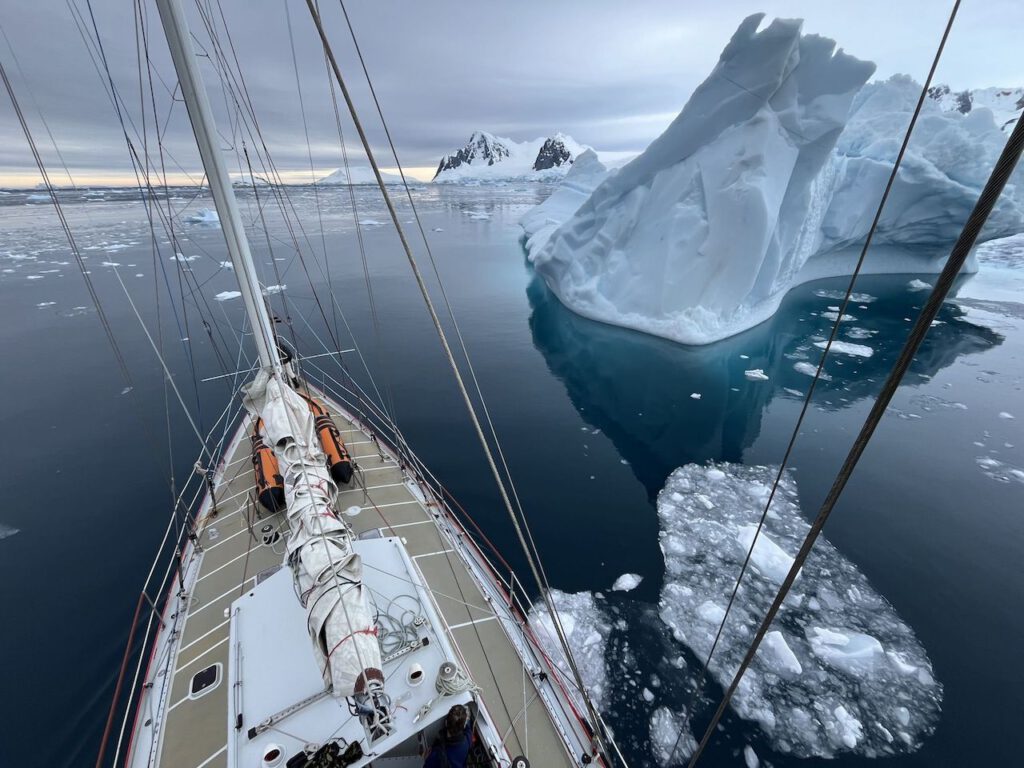
But the deck is not just for working. Here we also enjoy the fantastic view of the sea, horizon, waves, whales, albatrosses and other seabirds, penguins, seals, icebergs and all the fantastic landscapes of Antarctica, as well as the occasional blue sky and sunshine. We warm ourselves in the sun, rest, talk, take photos, keep fit with a few push-ups or listen to Alan play the guitar.
And sometimes – such as after crossing the Drake Passage or at Point Wild on Elephant Island – we even have a toast here.
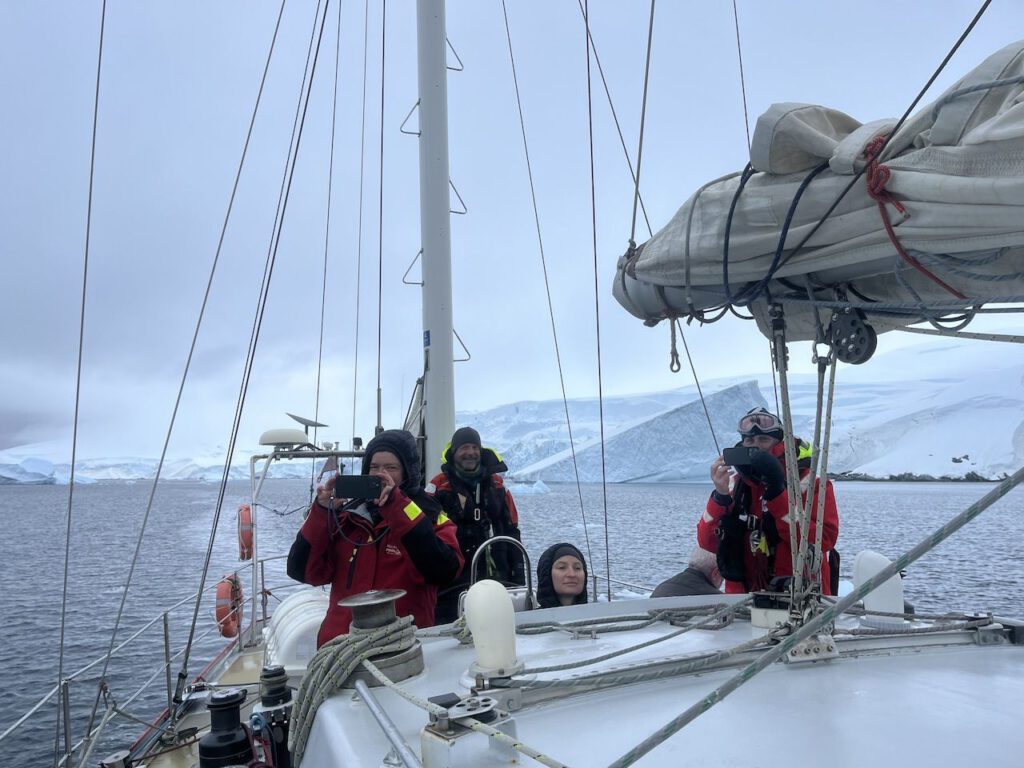
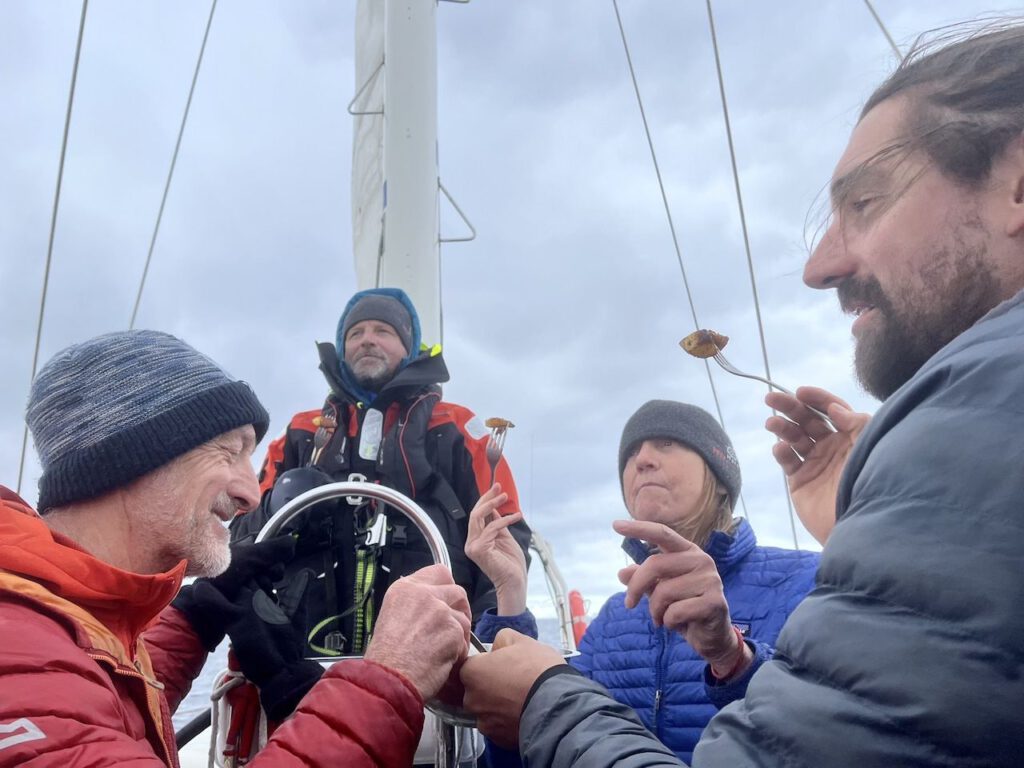
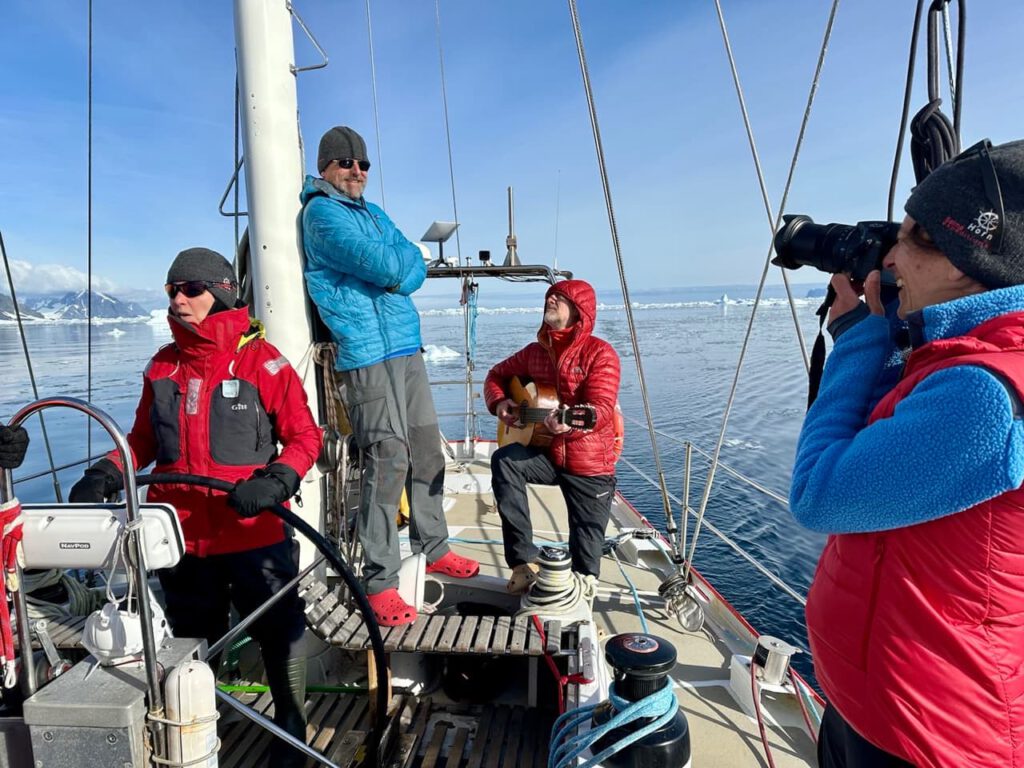
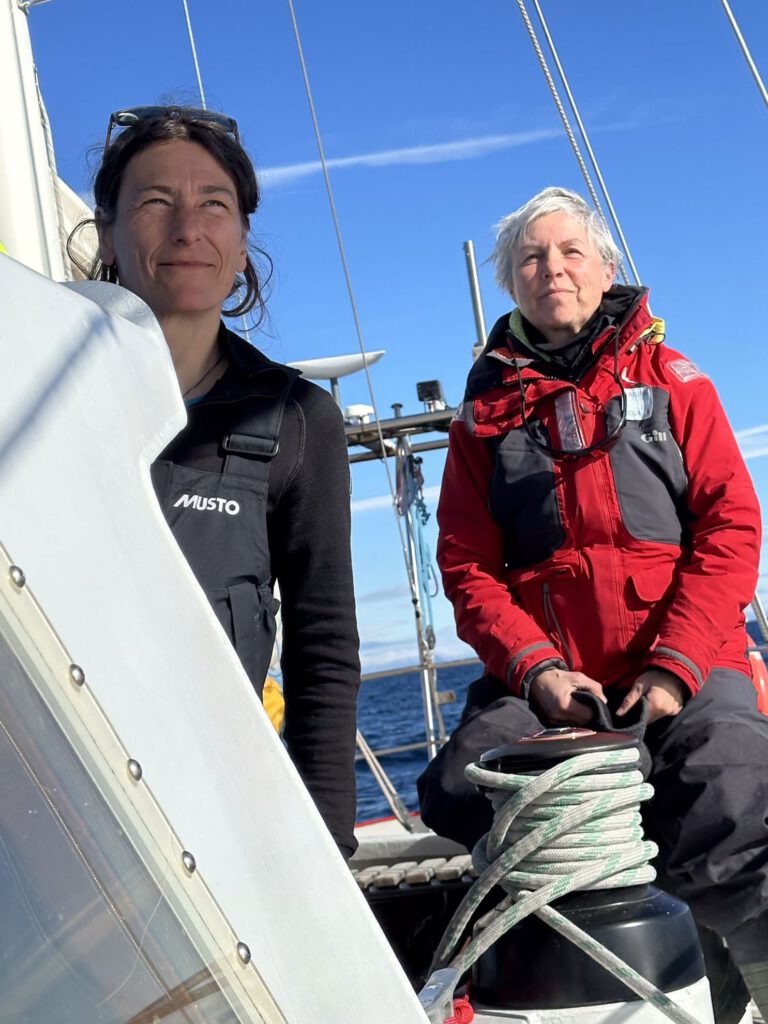
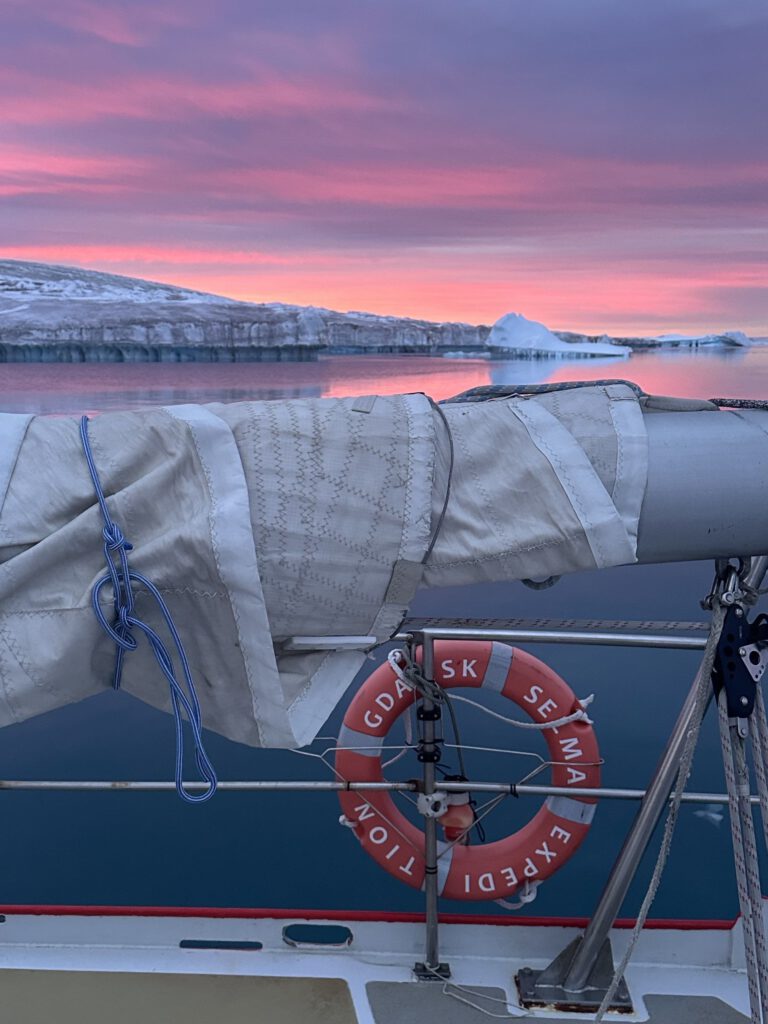
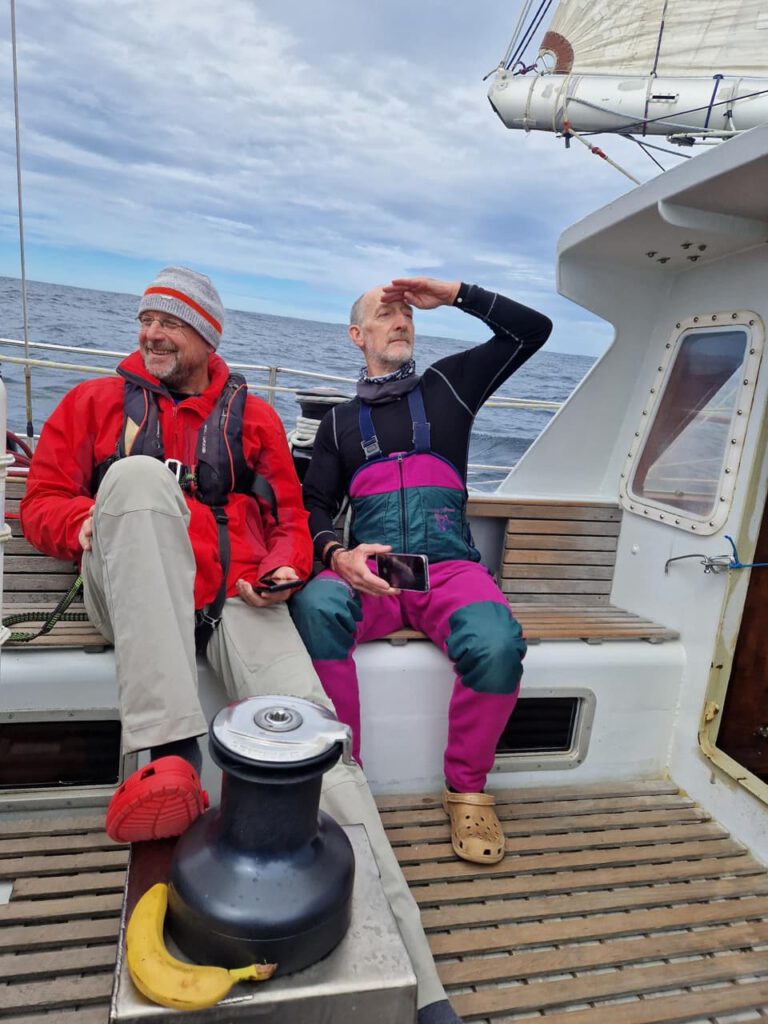
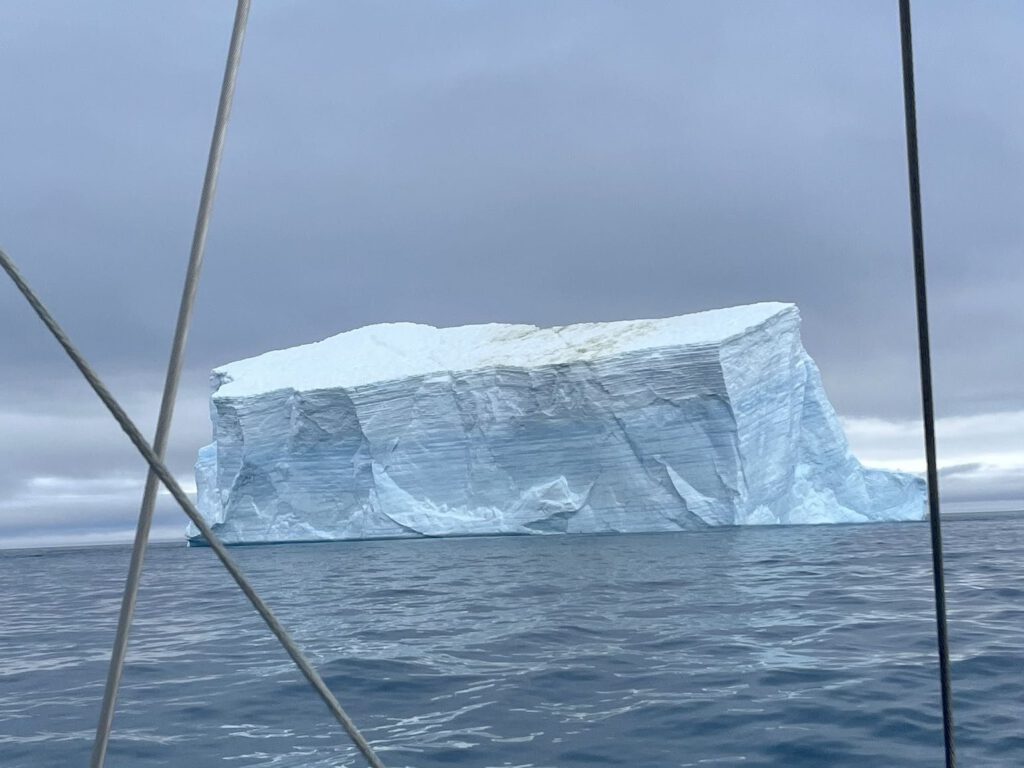
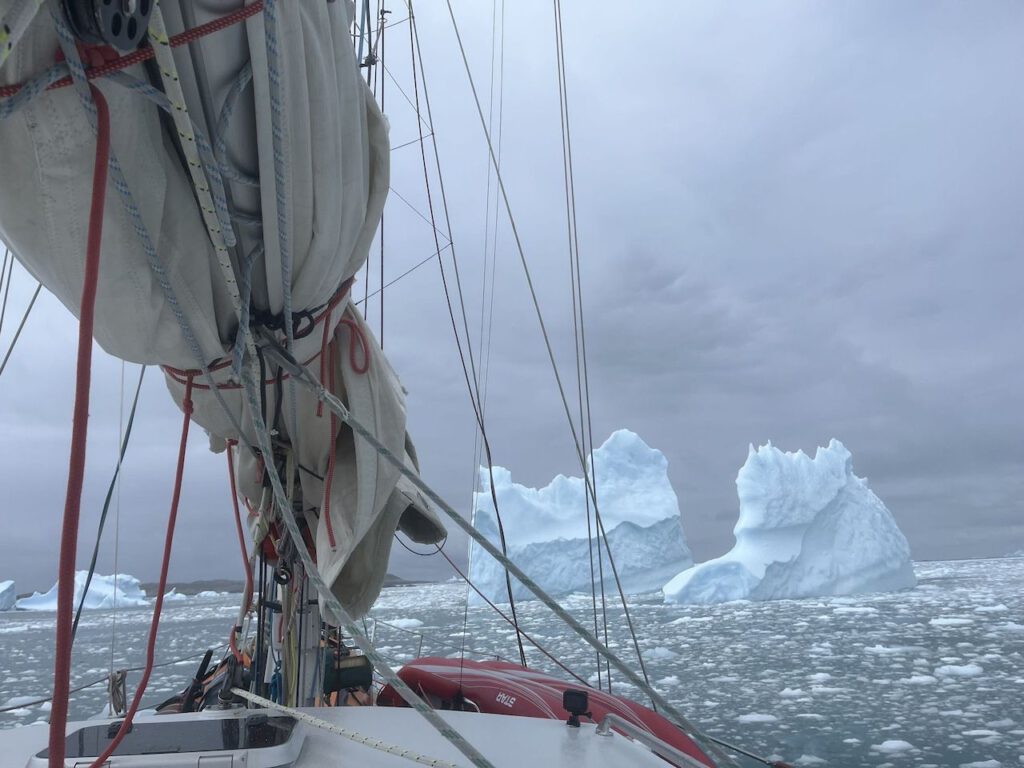
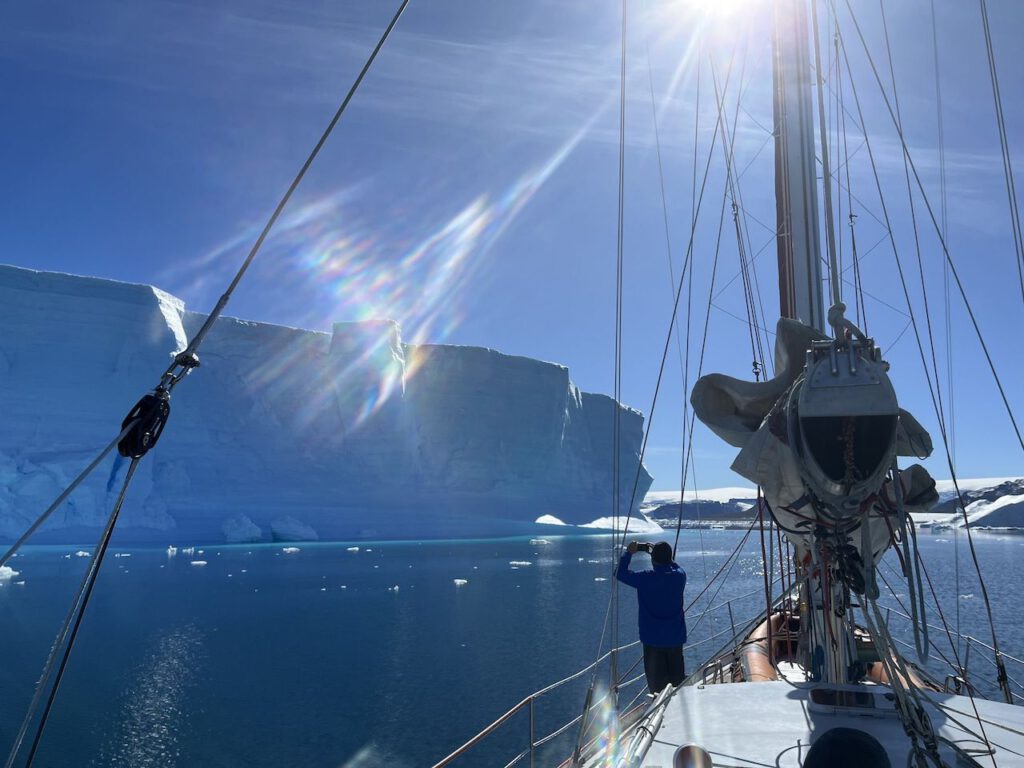
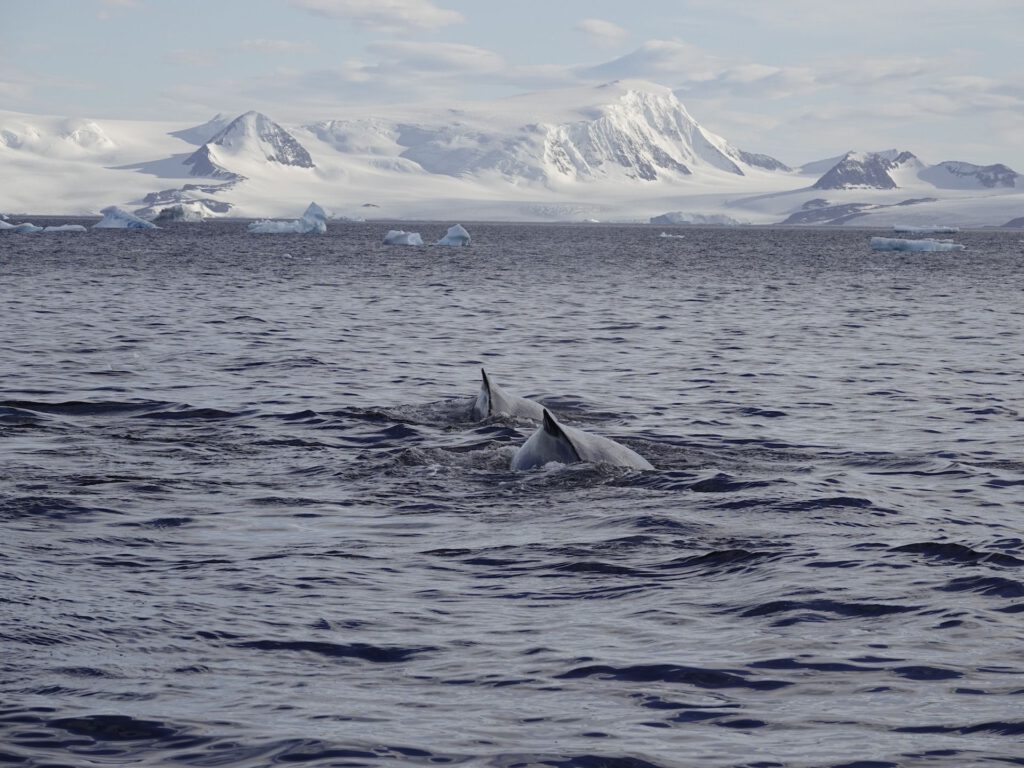
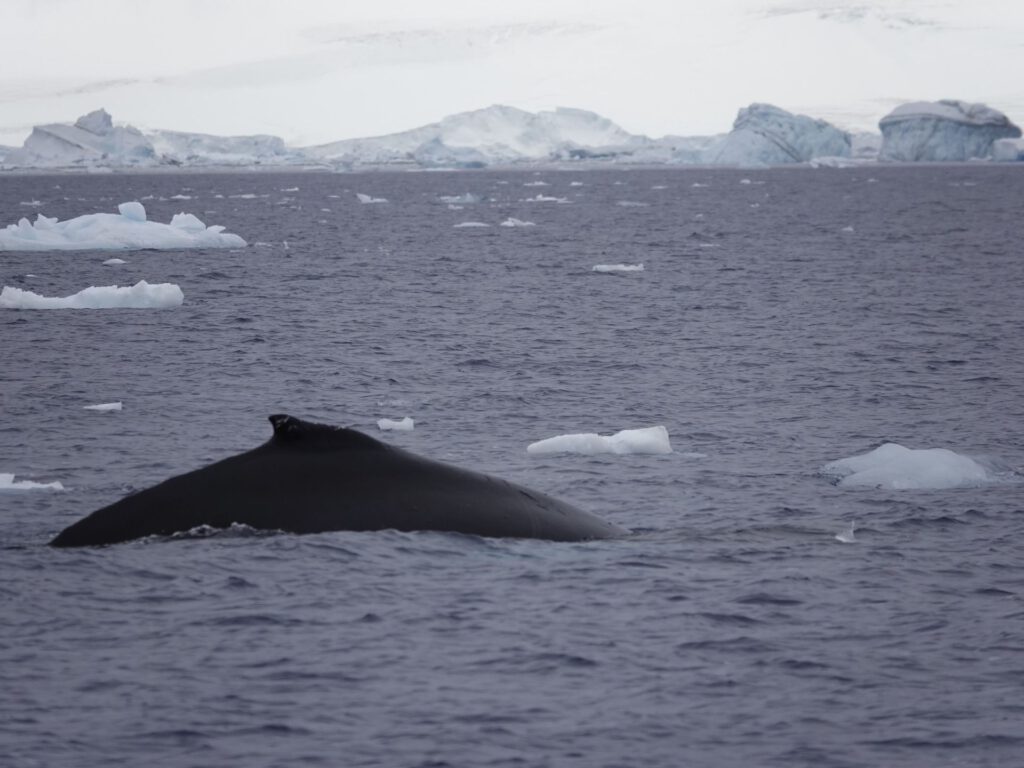
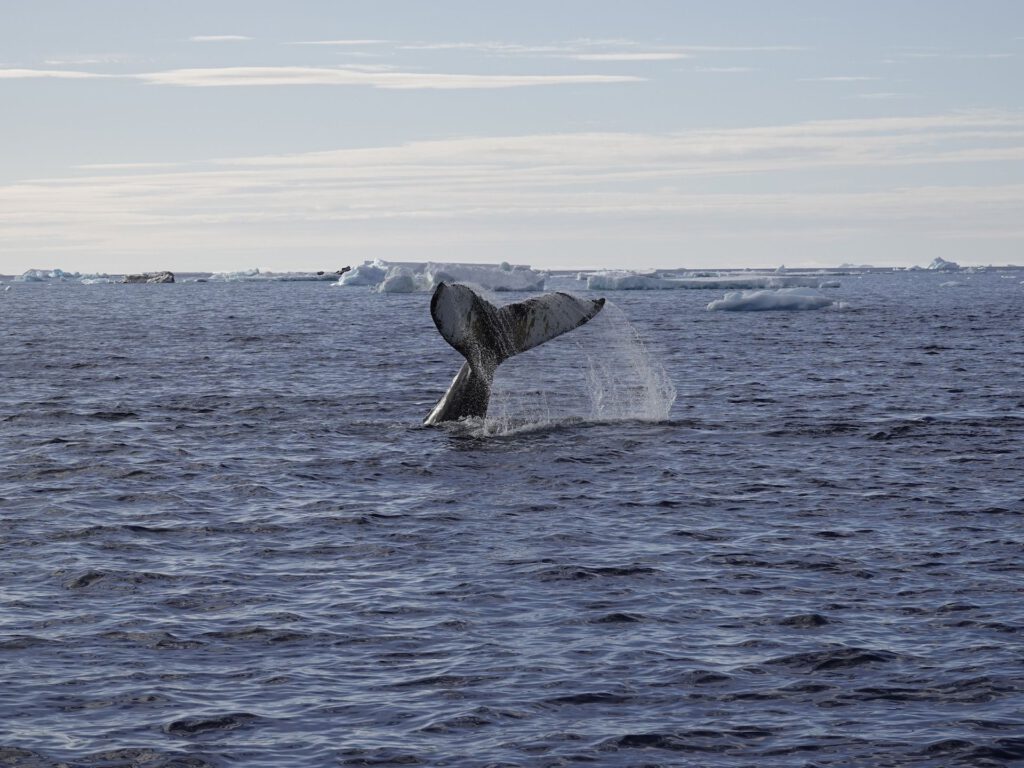
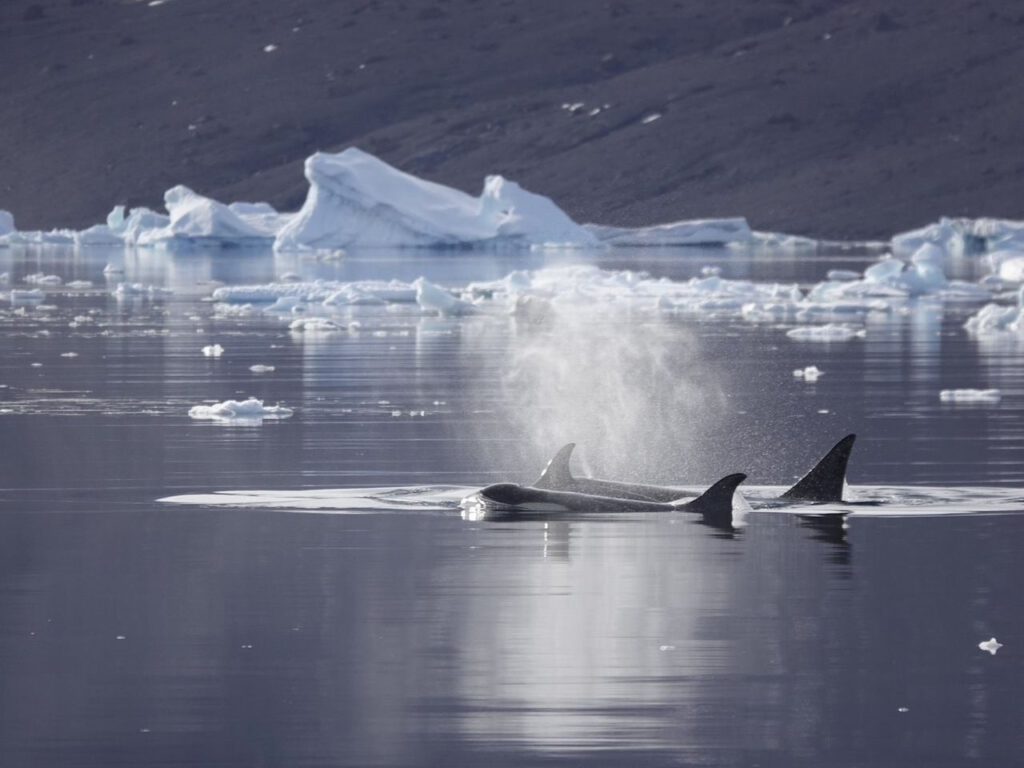
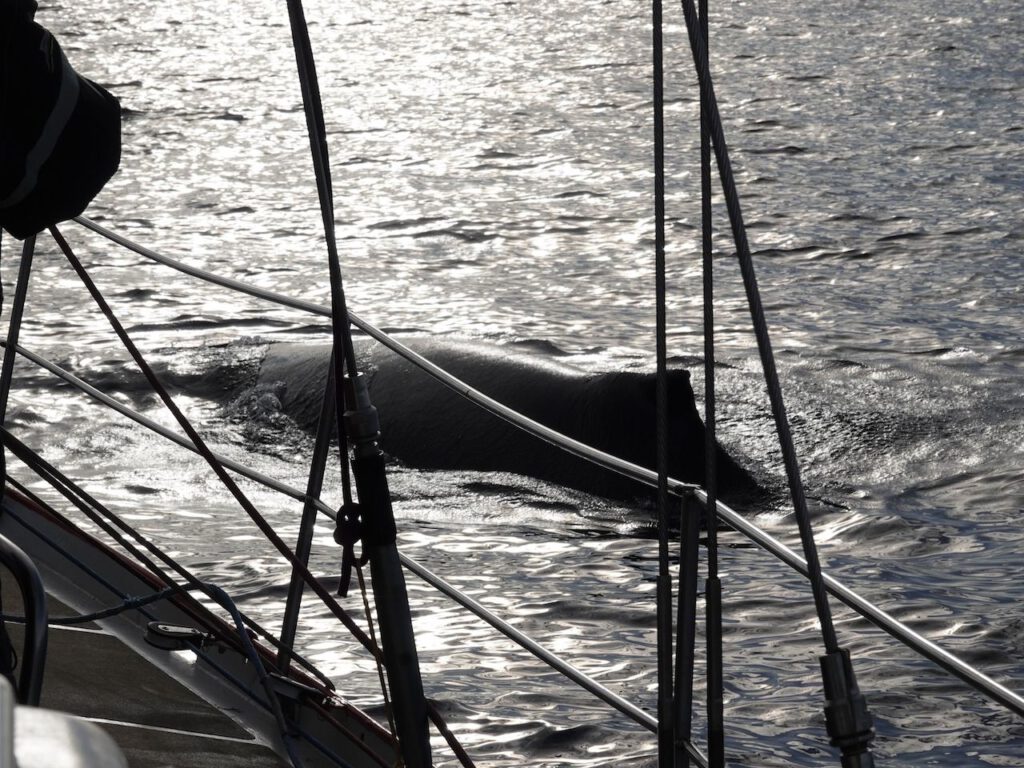
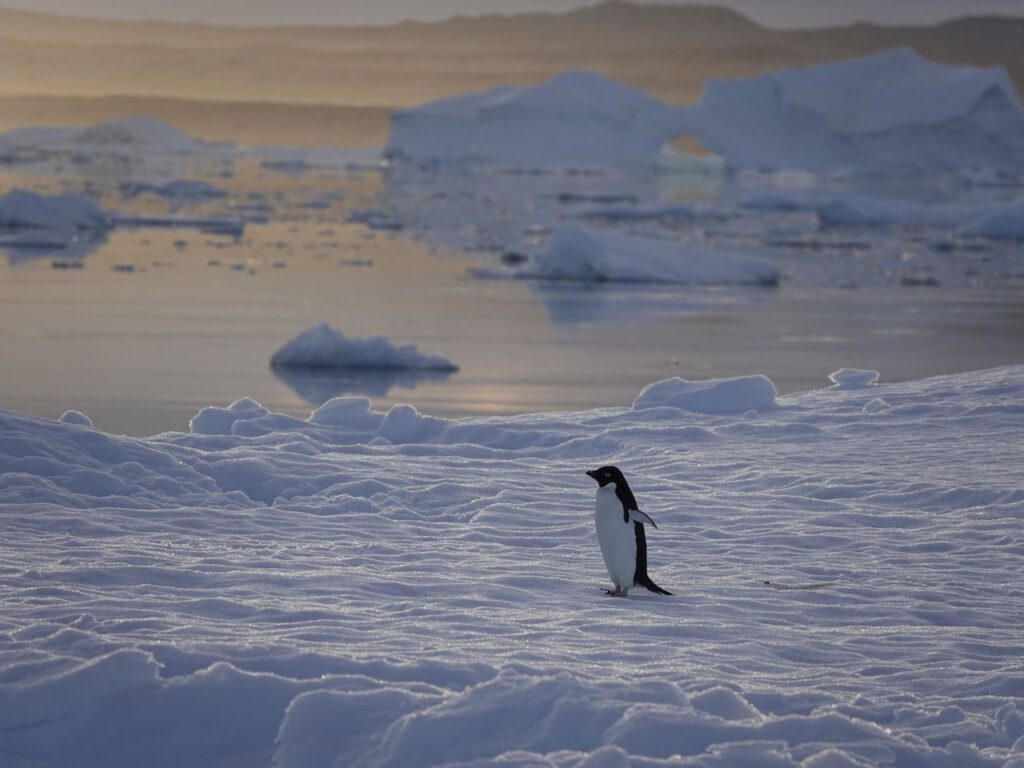
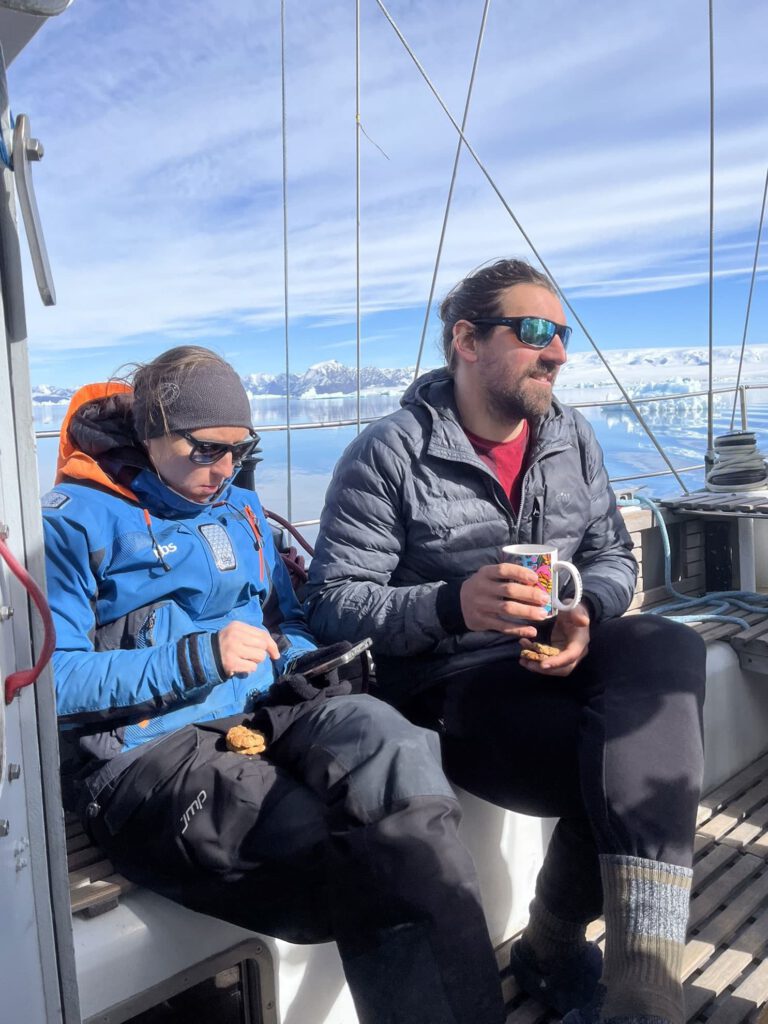
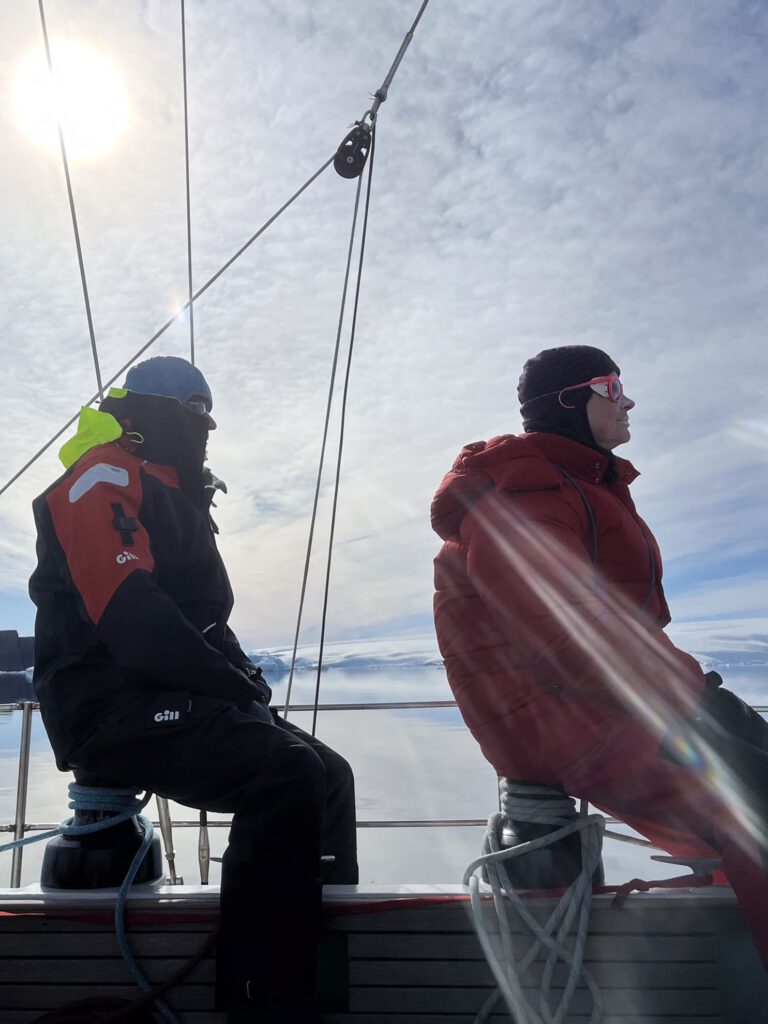
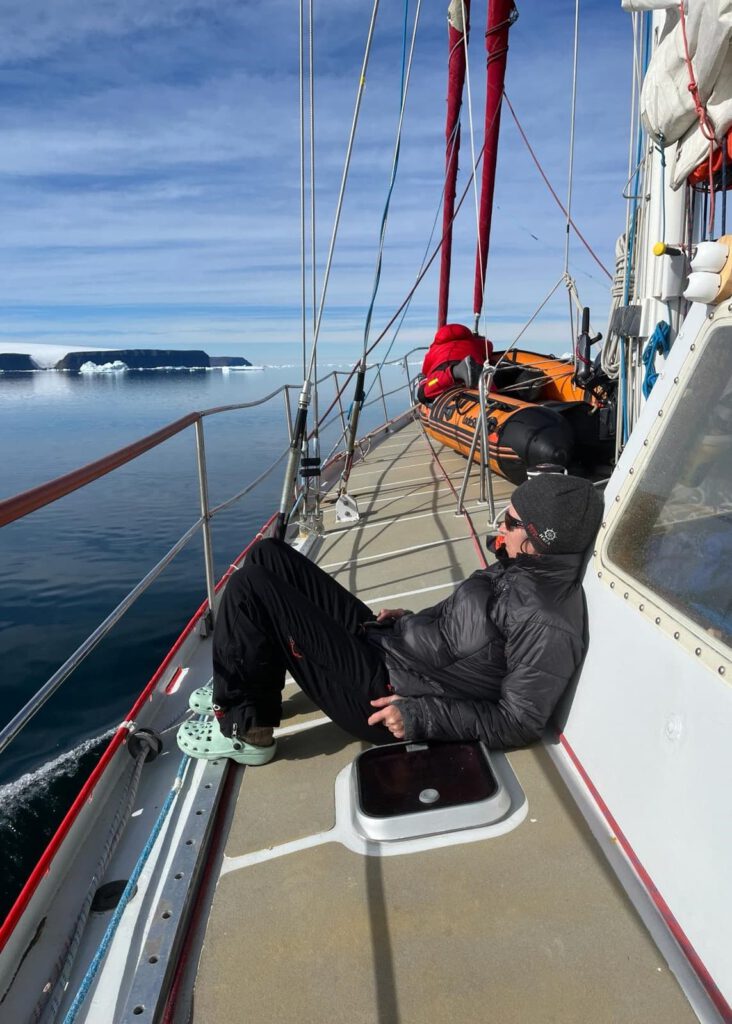
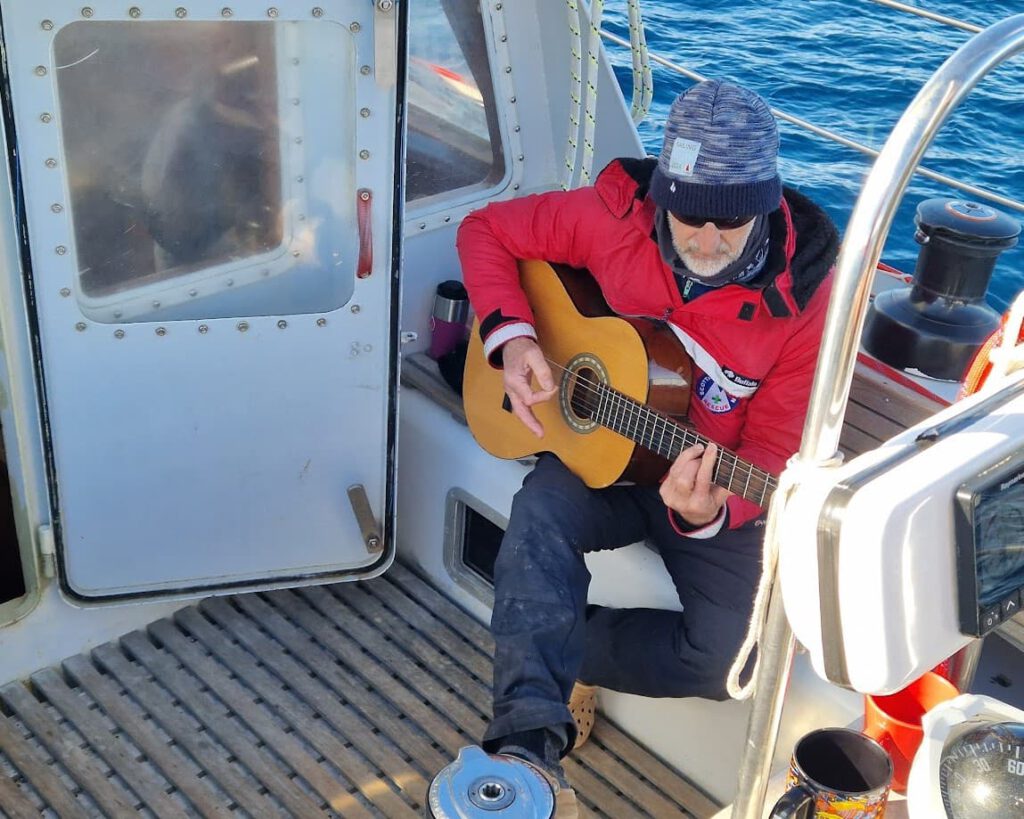
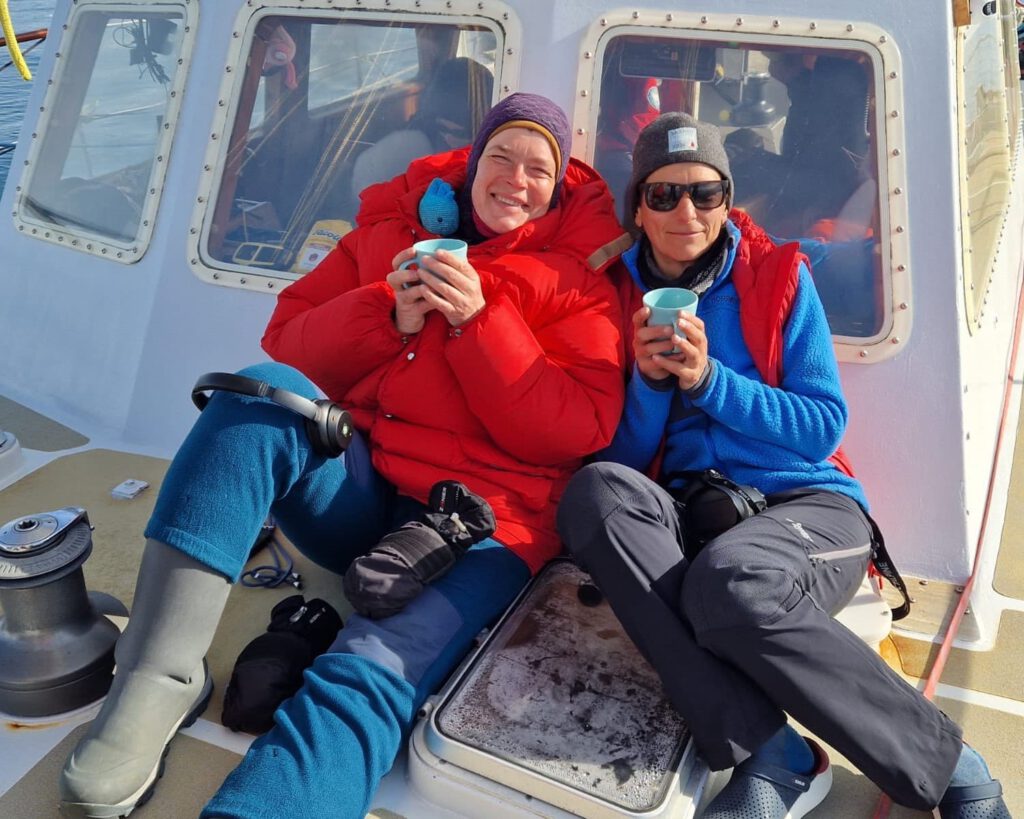
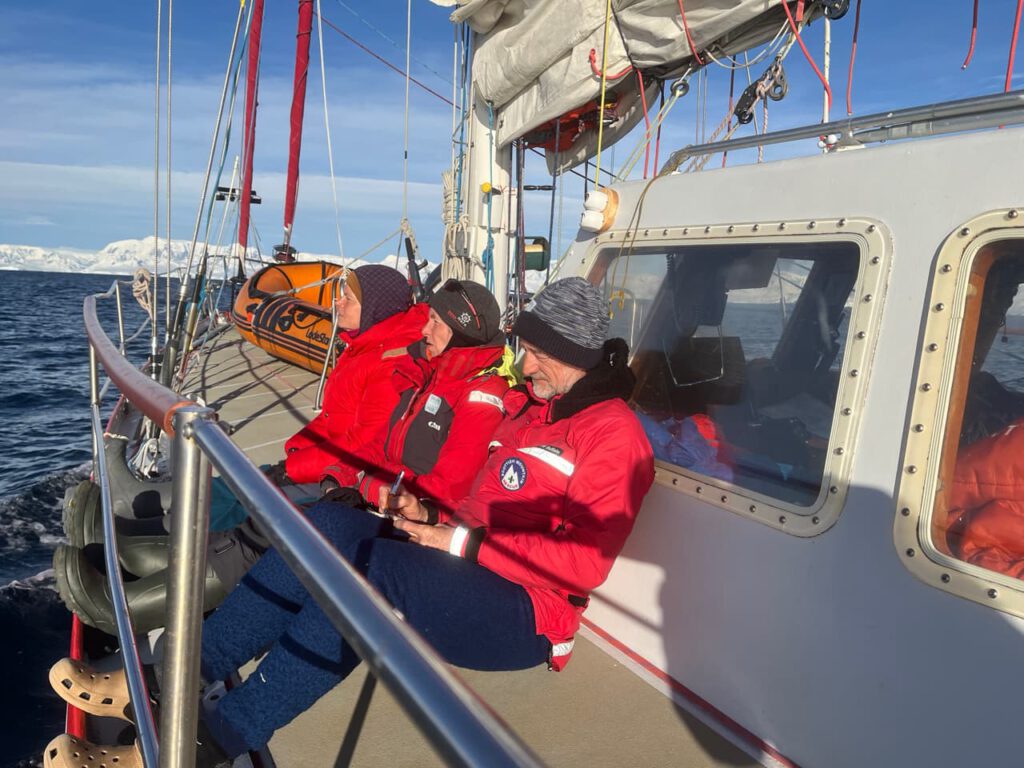
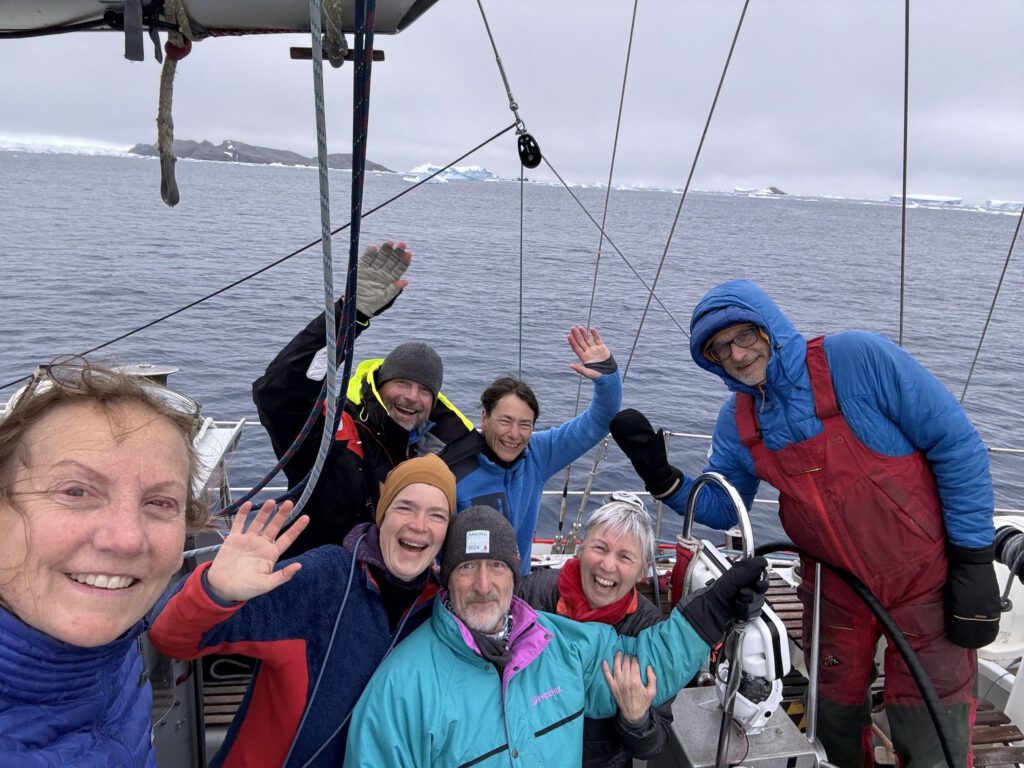
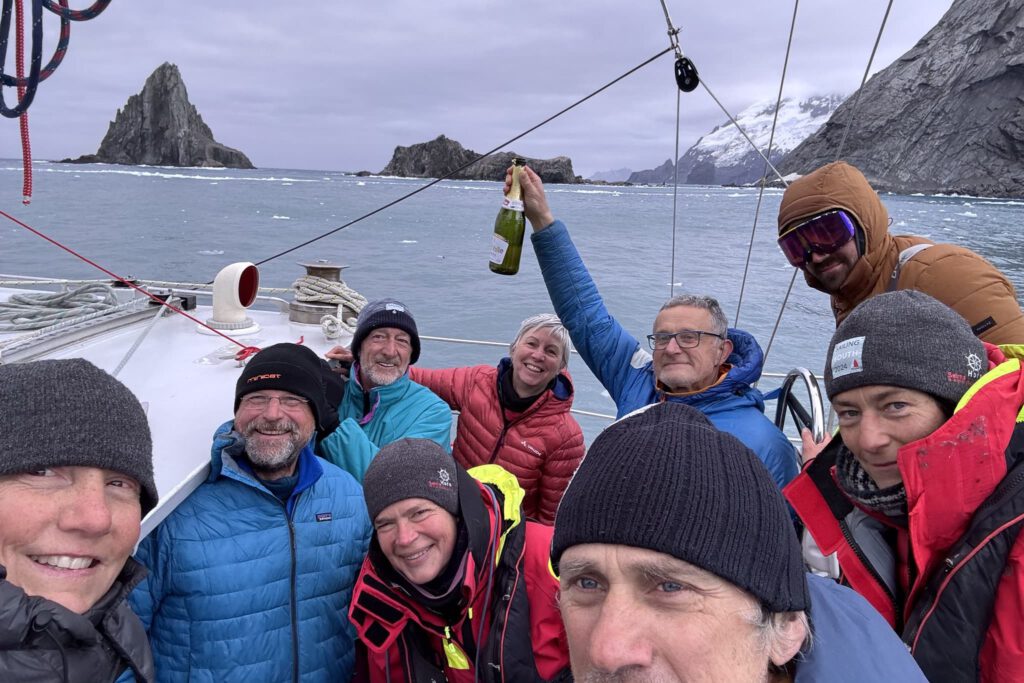
Incidentally, very special precautions are taken before every trip ashore.
Before we made our first excursion on Antarctic soil, we had to thoroughly clean all our clothes, rucksacks, bags etc. (including all the inside pockets and all Velcro), carefully vacuum them out and remove all the stones from the soles of our shoes. This is a protective measure to ensure that no contaminants, germs, seeds or similar are brought into the Antarctic.
In addition, the boots and shoes are disinfected before and after each trip ashore and their soles are completely brushed and cleaned.
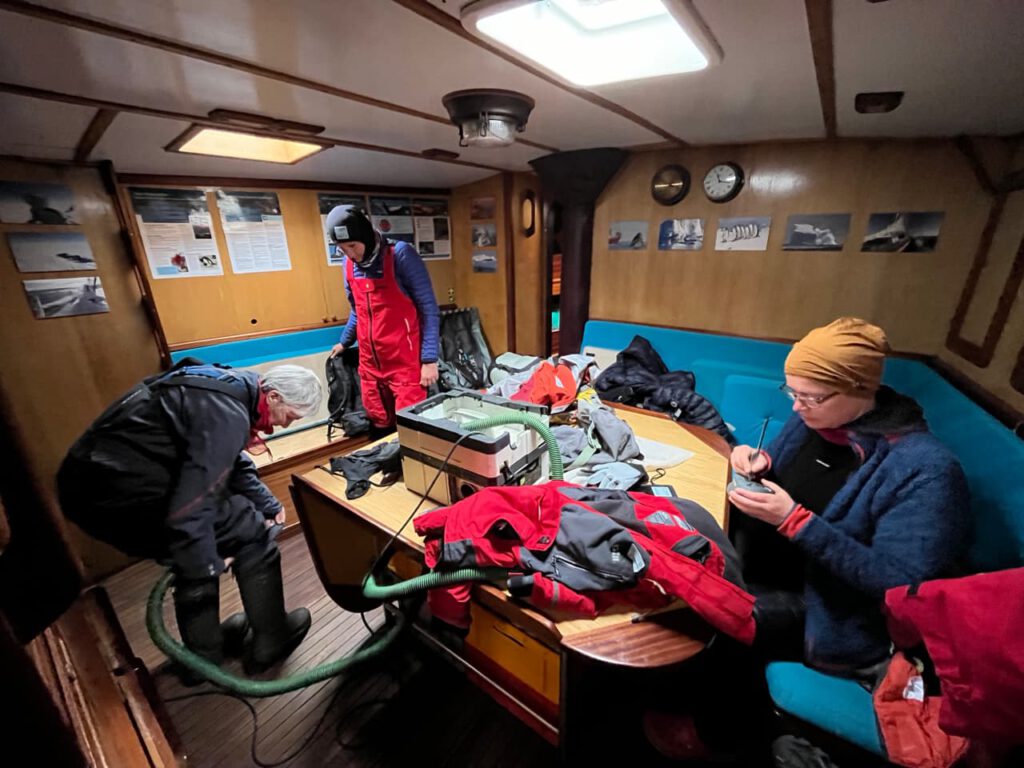
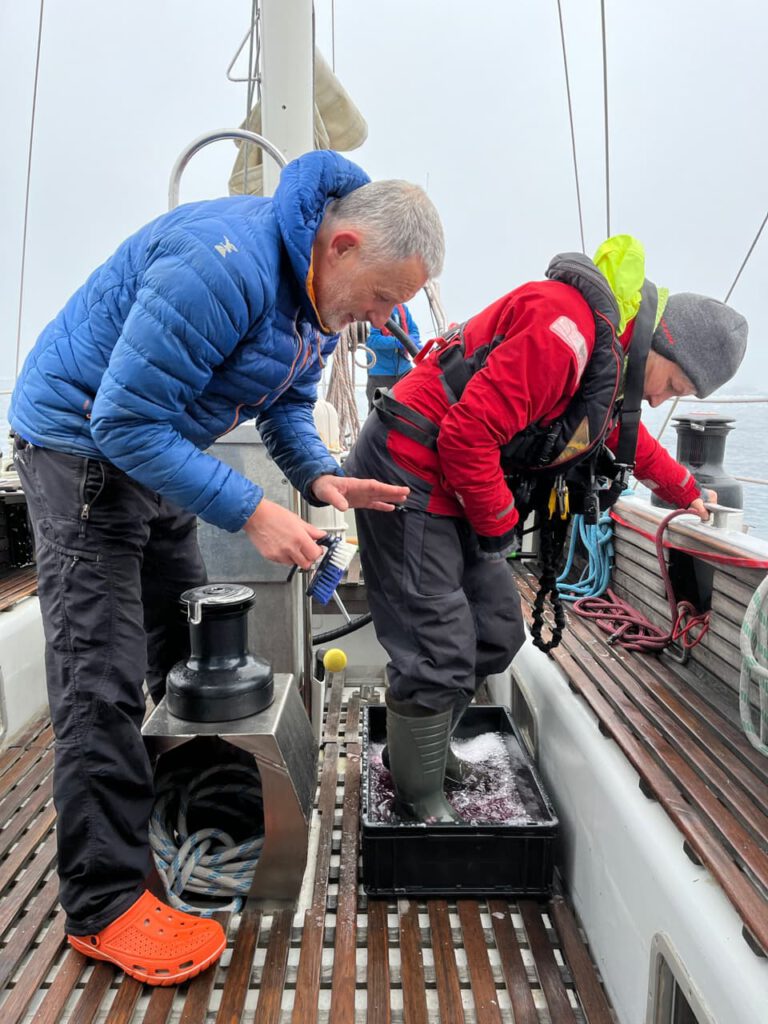
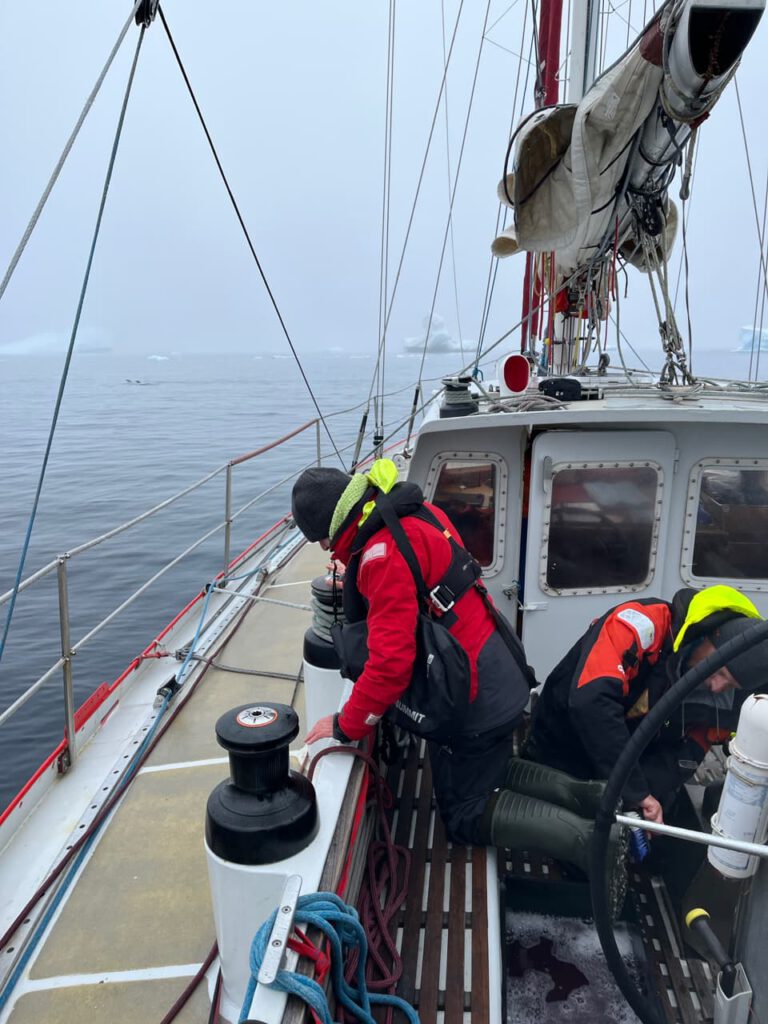
I enjoy every day of my time in a shared flat.
The cheerful, friendly and fun-loving flatmates make this easy. We are a great community. The pictures speak for themselves, I’m fine, we’re fine.
I have really arrived!
For me, having arrived also means saying to my new friend Unda, let’s go out and get some fresh air. We were already outside all day while we were sailing …
At home, this might be a short walk. Here in Antarctica, for example, it means going for a little kayak ride before dinner, along the coast where we are currently anchored …
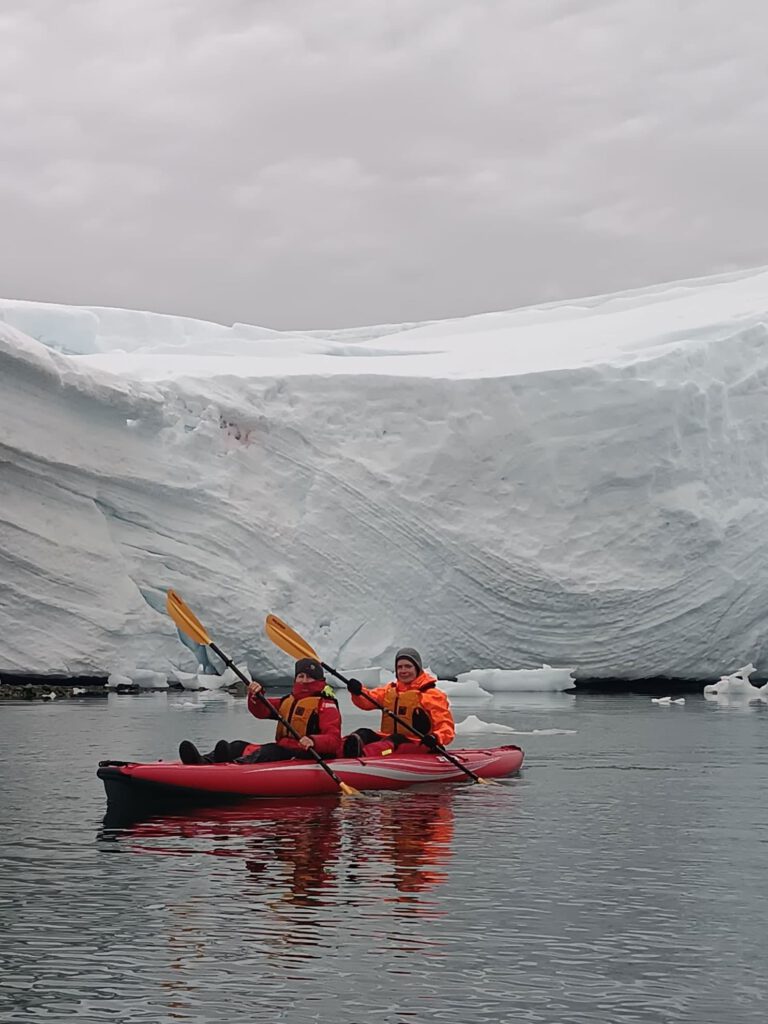
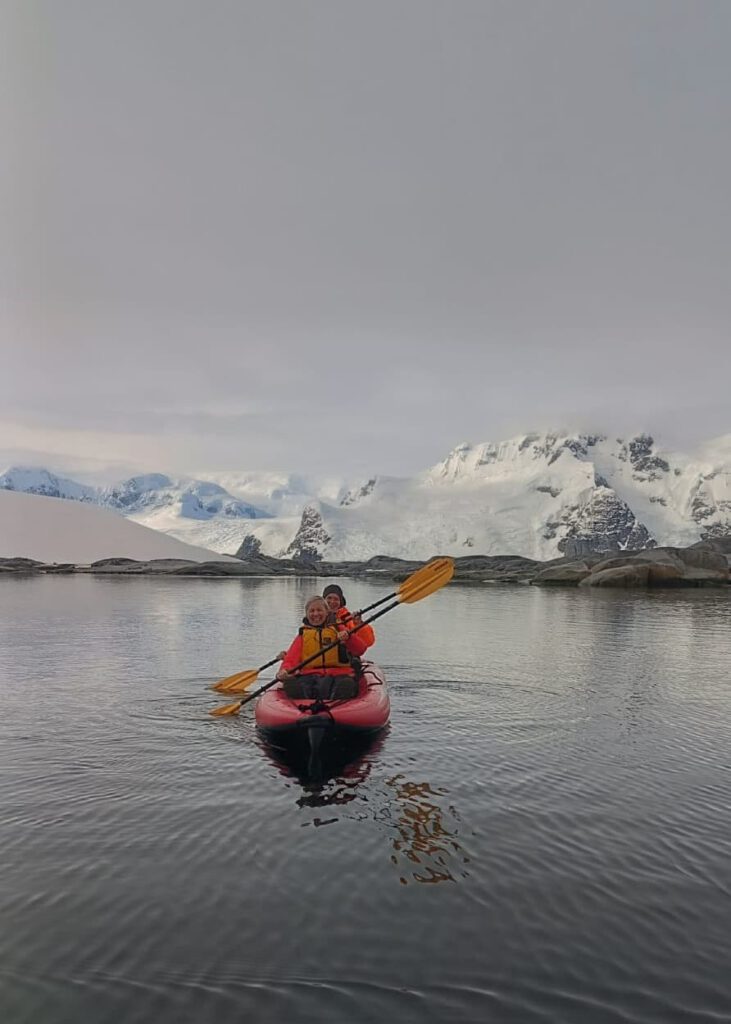
Unfortunately, my stay here on the Selma is limited. We will soon be moving again – to our apartments on the Falkland Islands.
Living together on board the Selma is simply wonderful. I could imagine a retirement flat share like this!
My dear friends Ewa, Karen, Paula, Unda, Alan, Gerhard, Jan, Peter, Piotr, Voj – I miss you so much.
(This logbook entry was completed at home on the computer after a long delay) 🙂